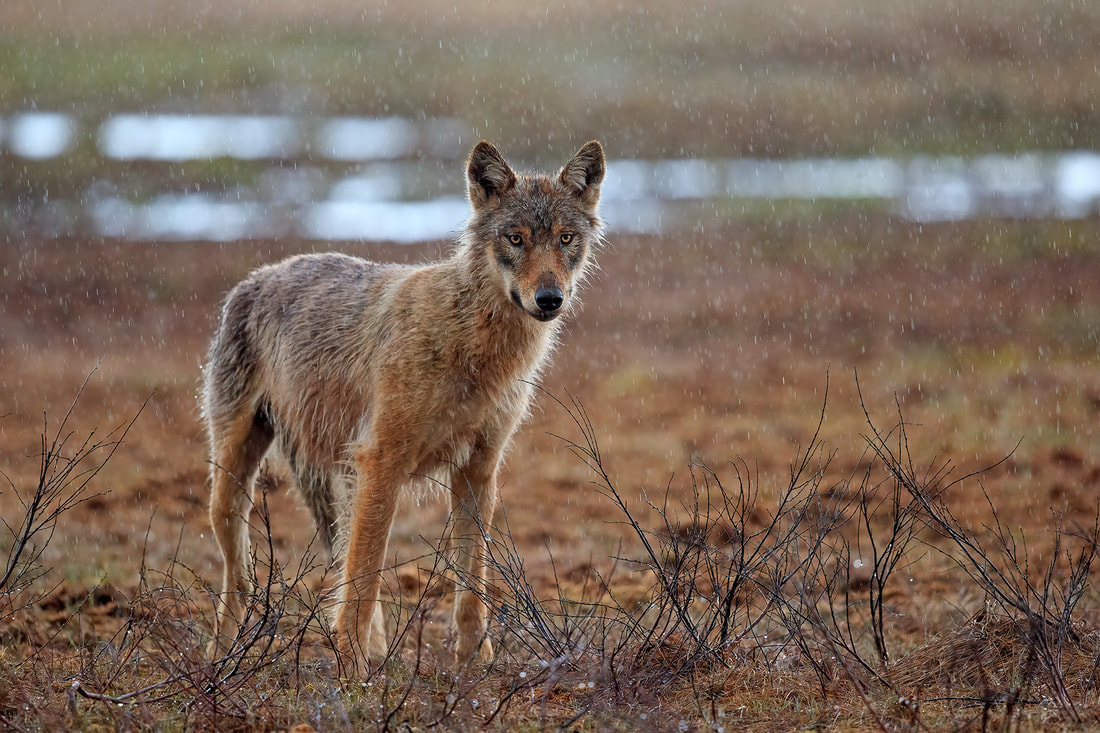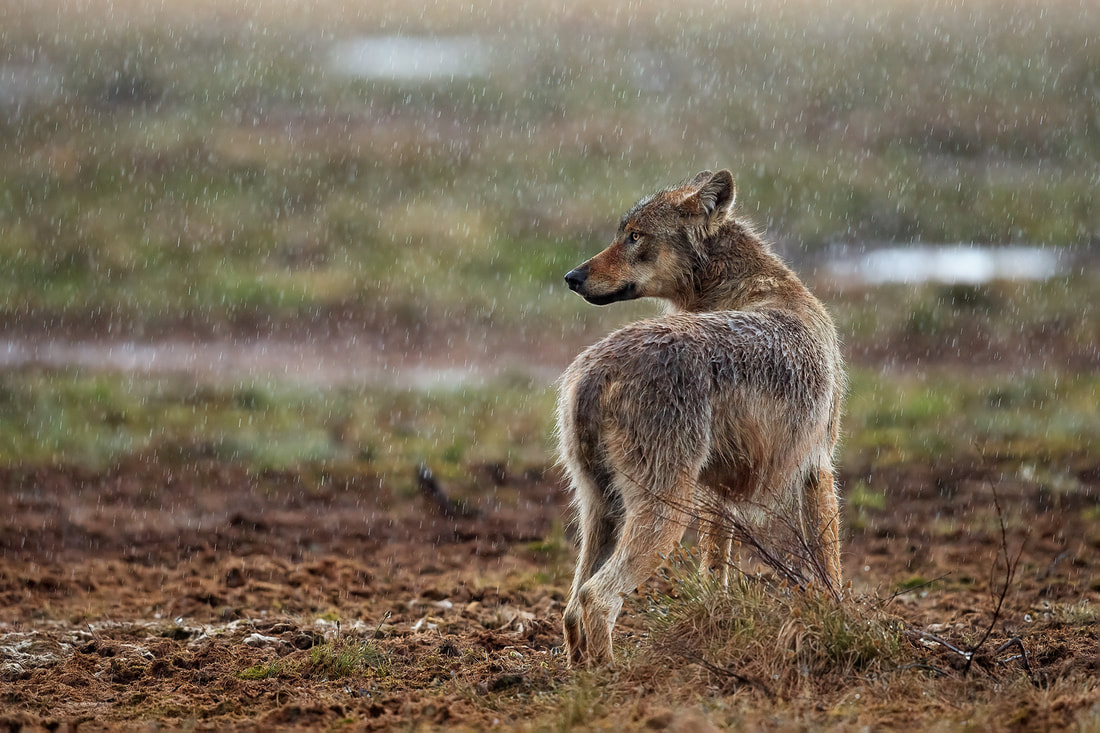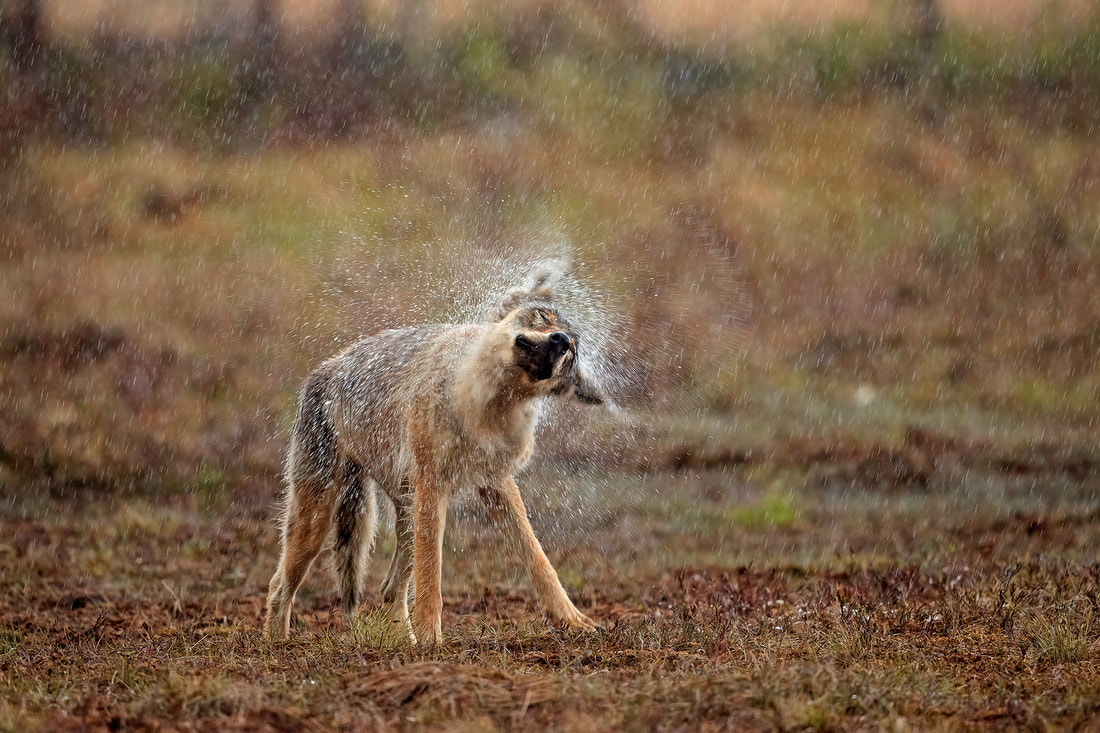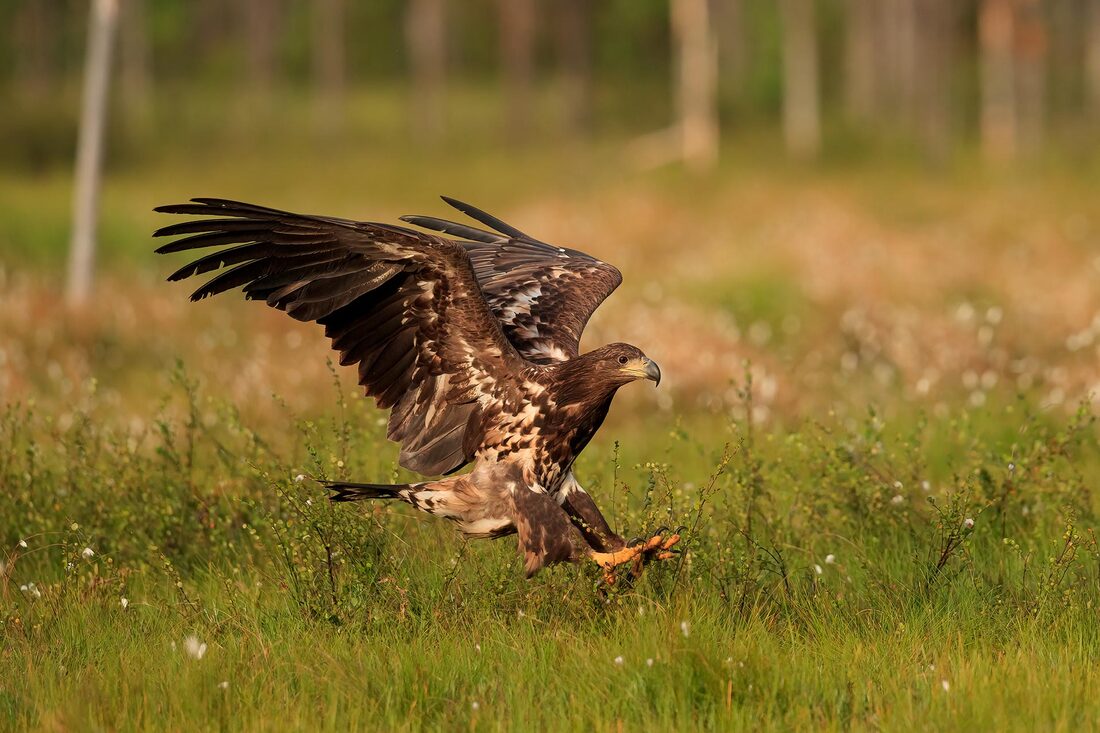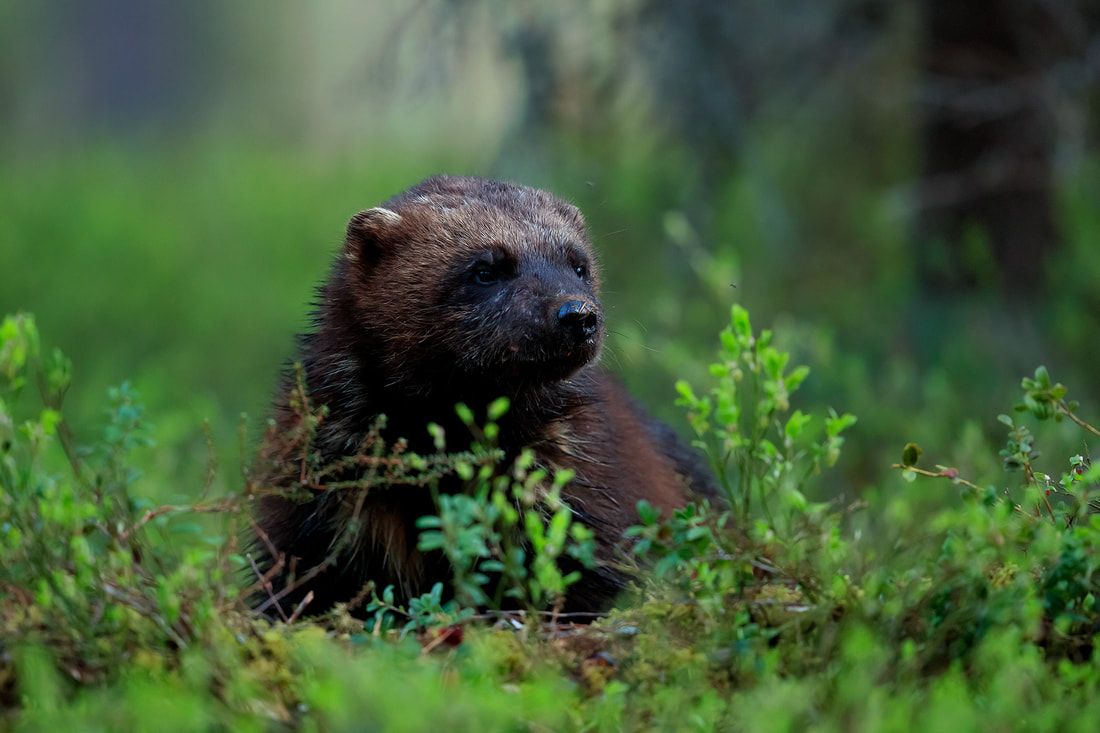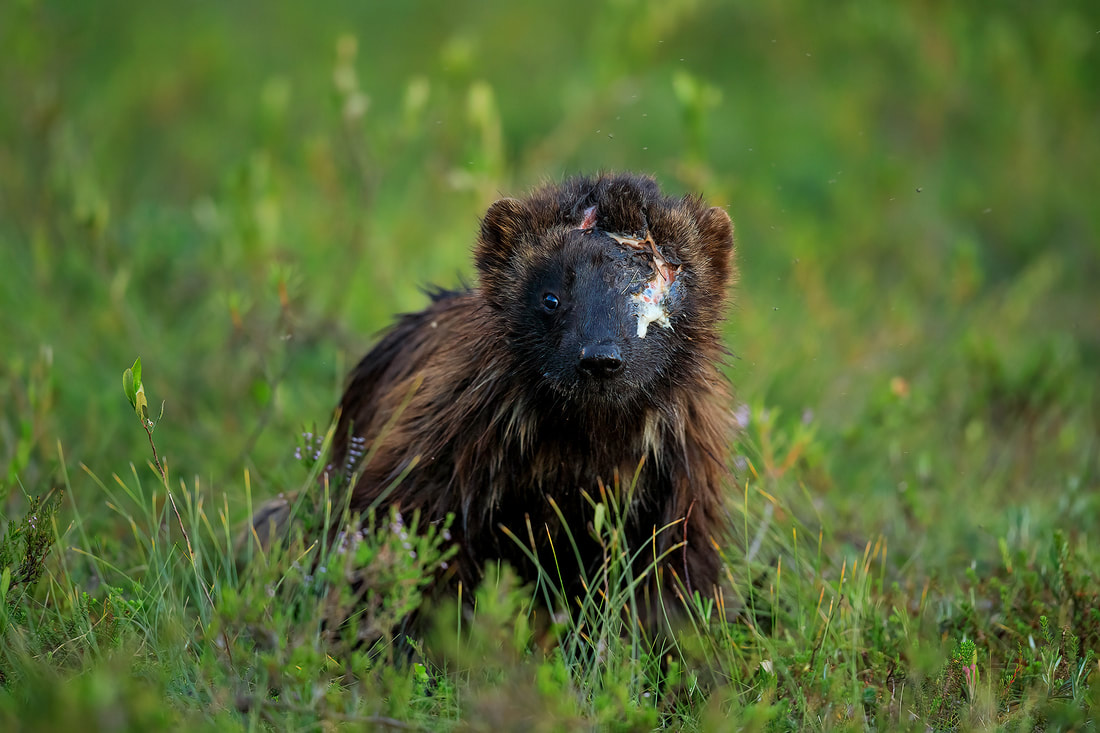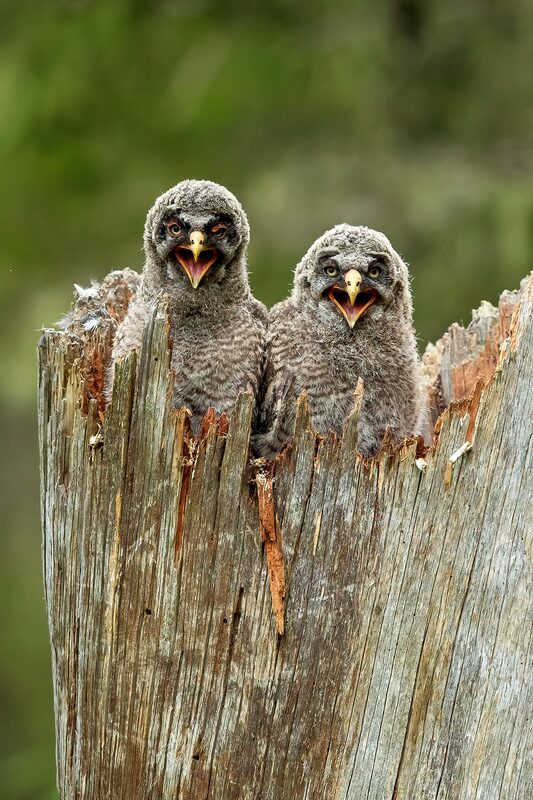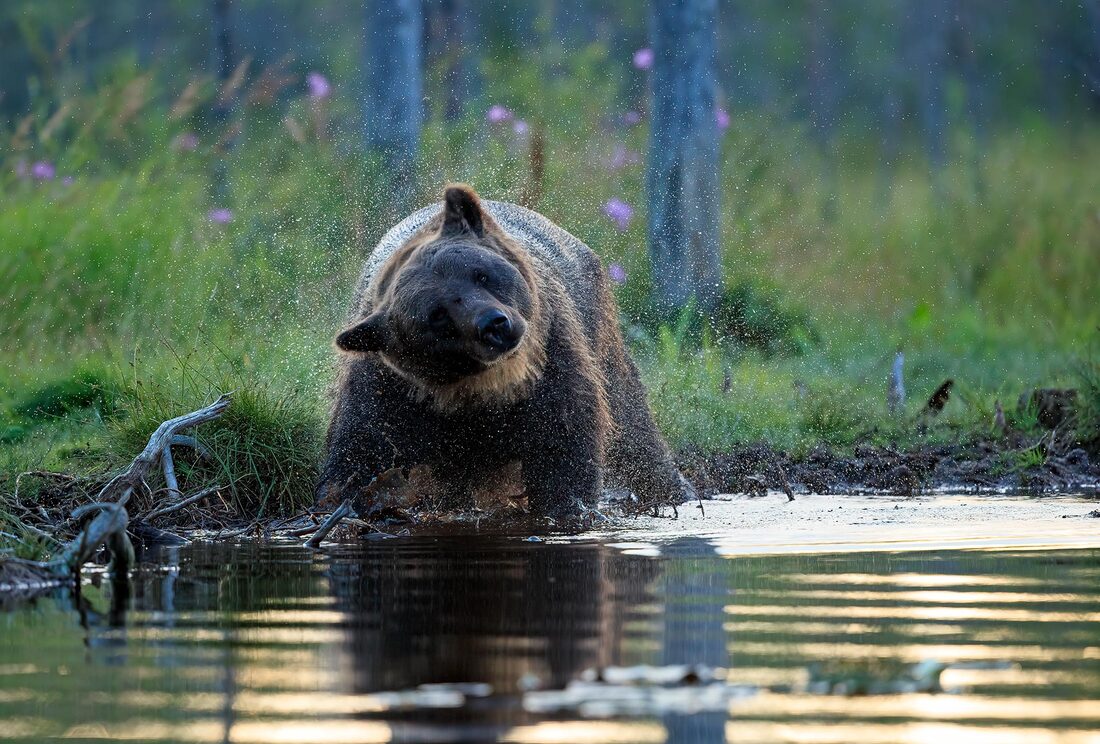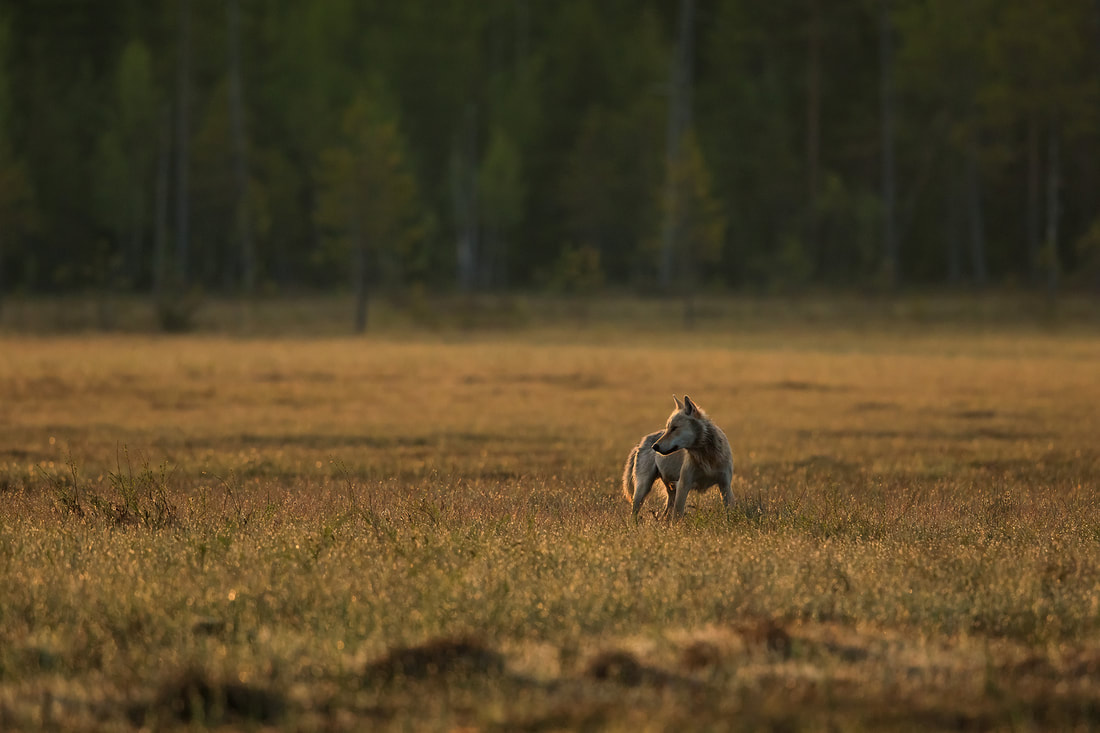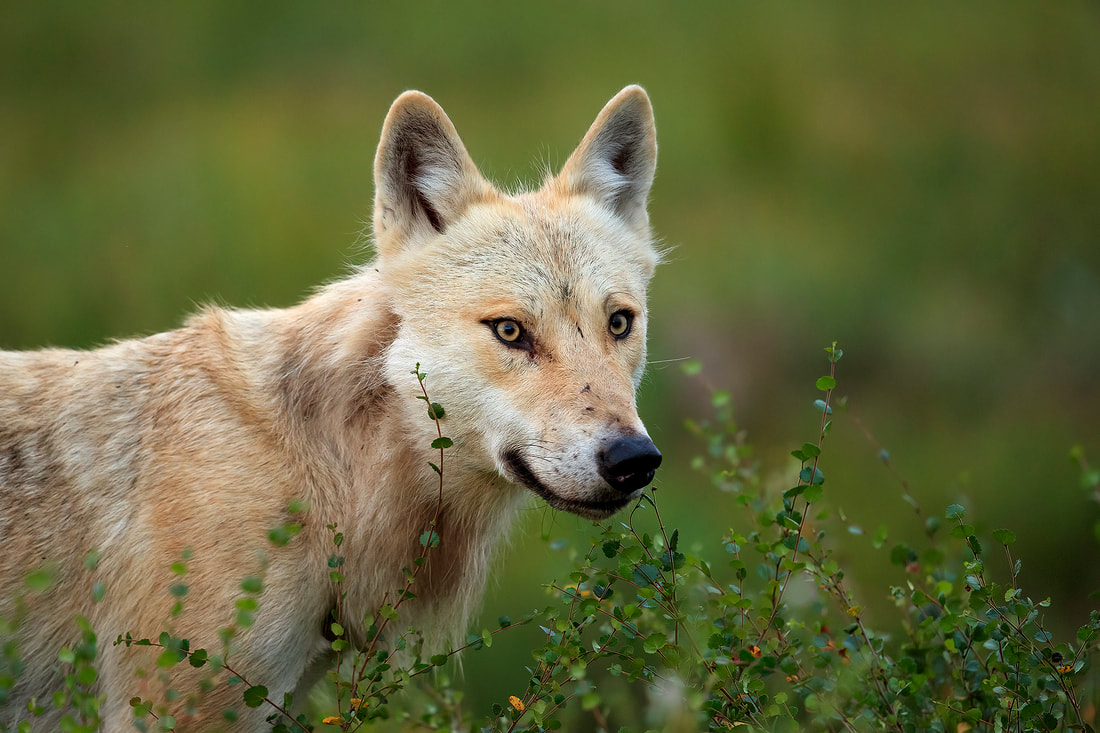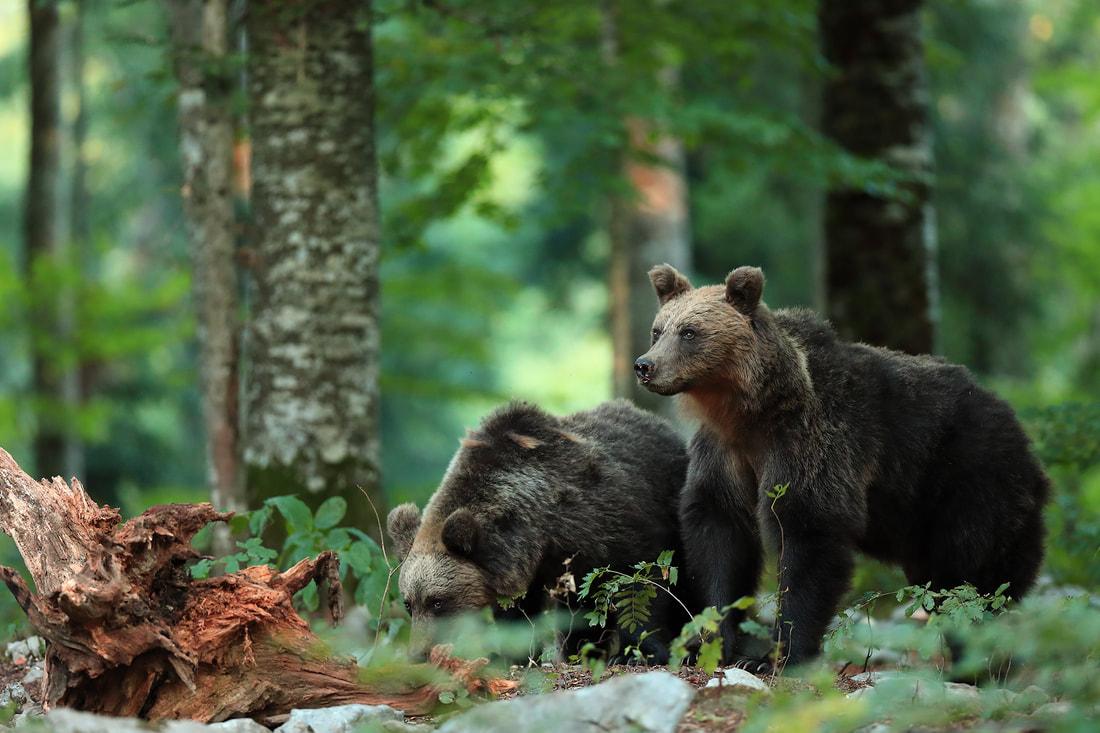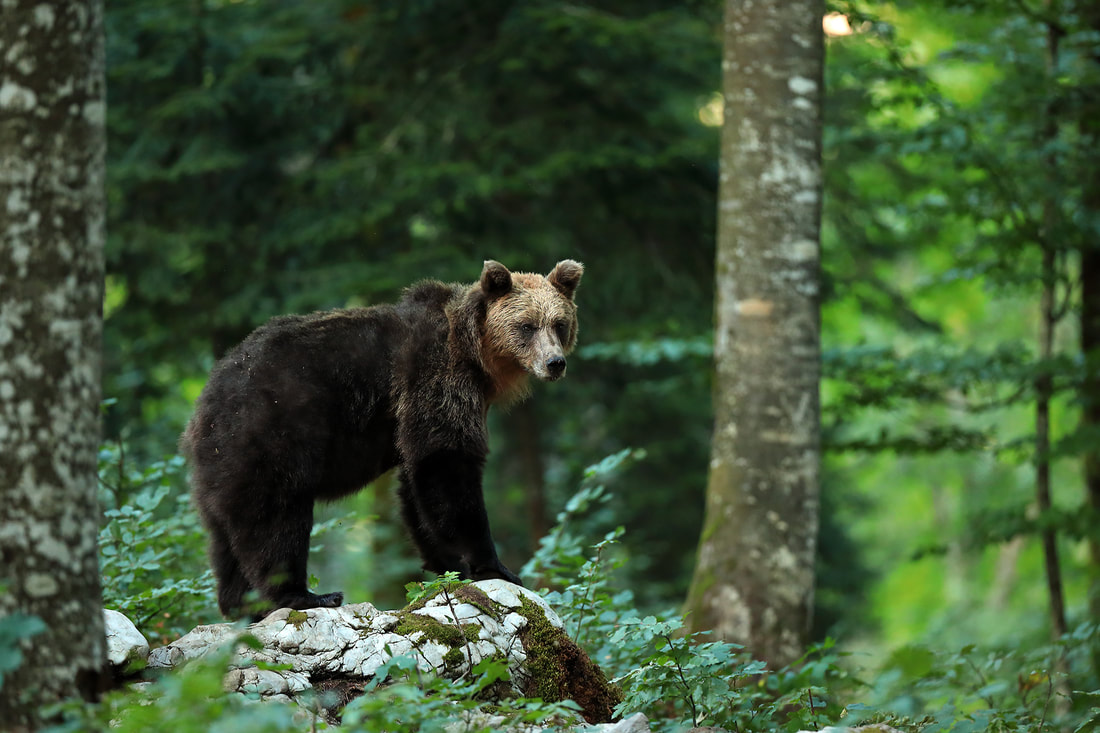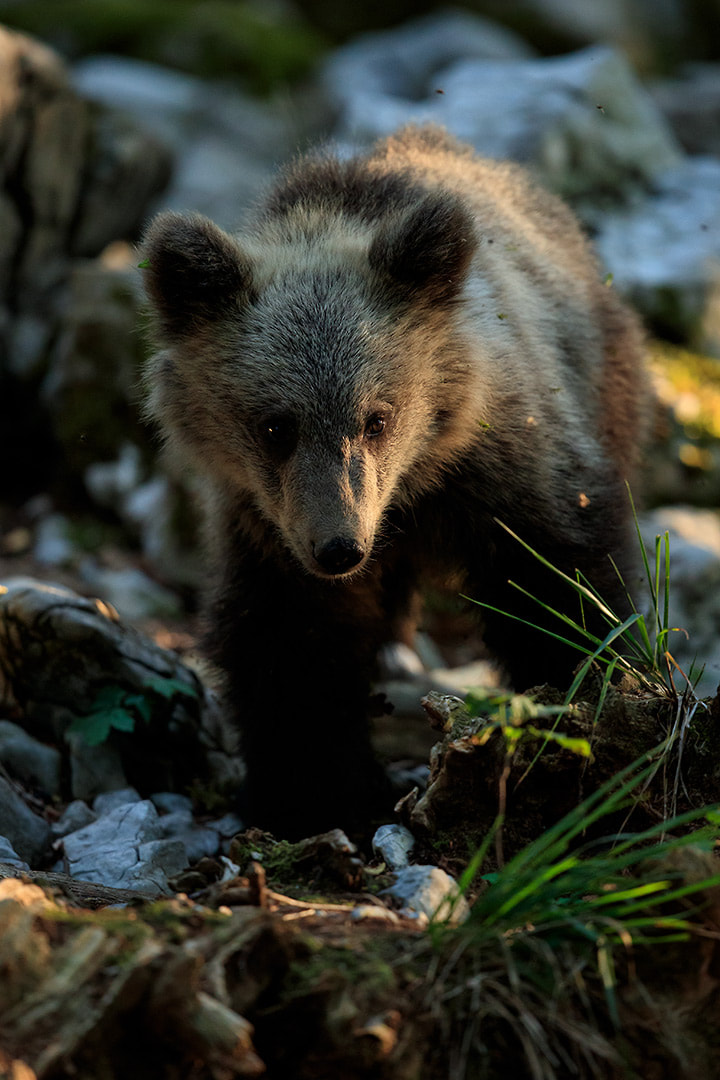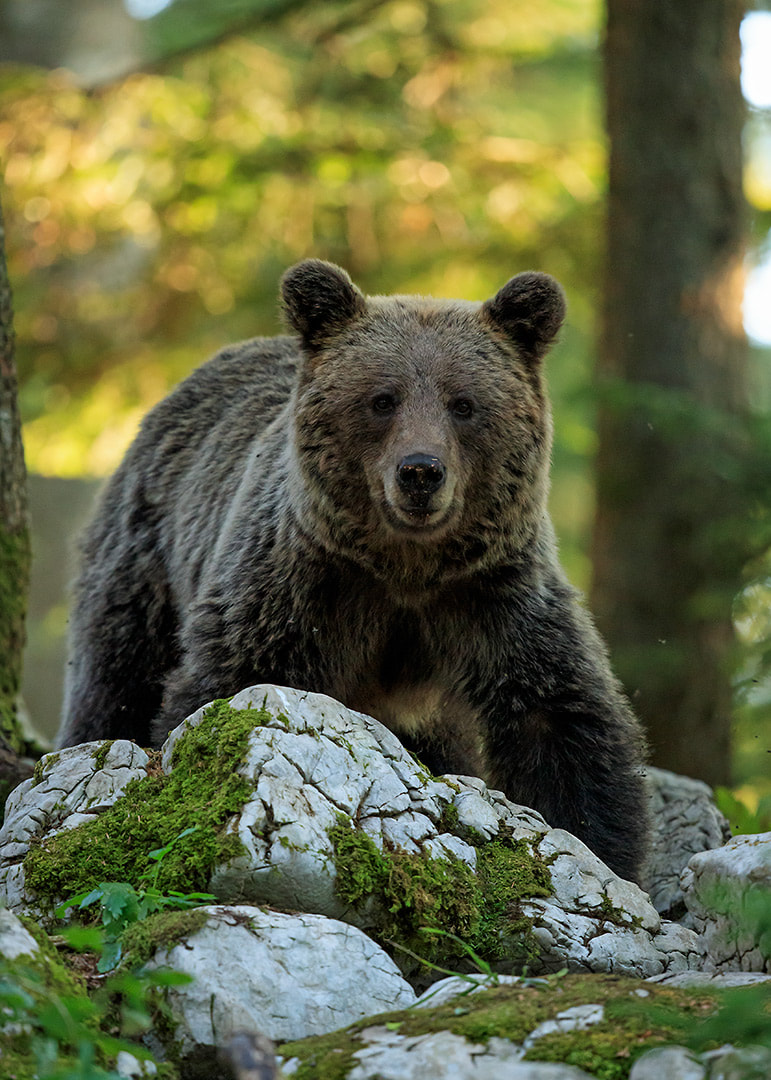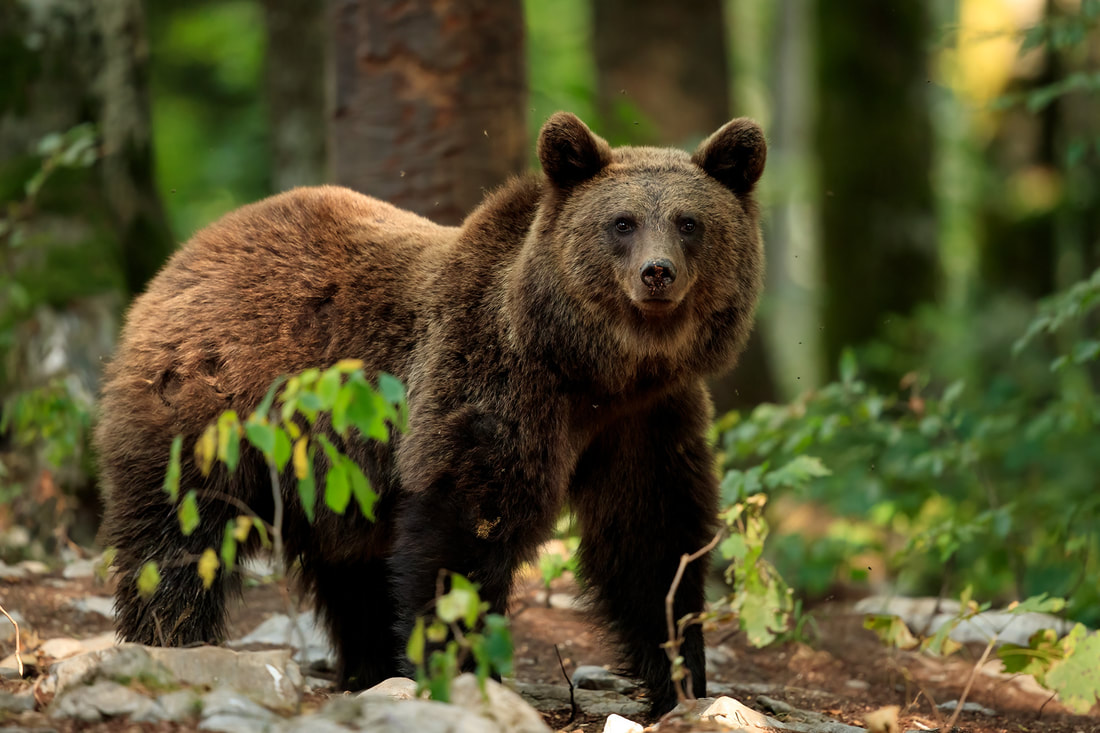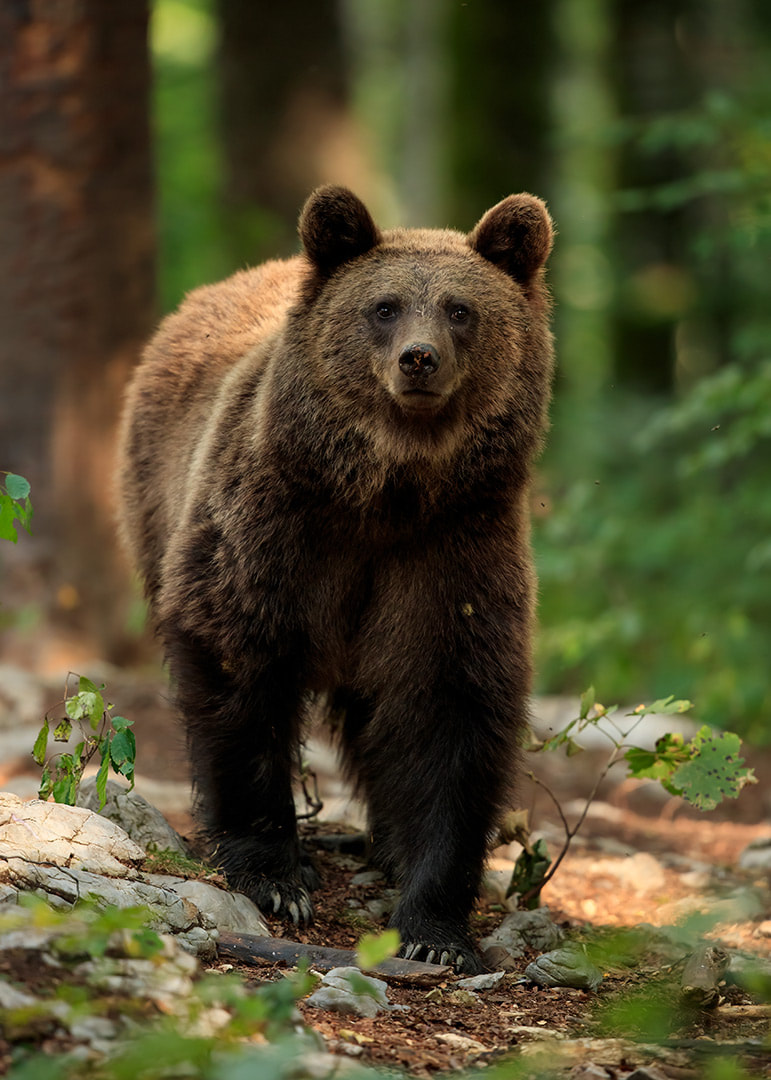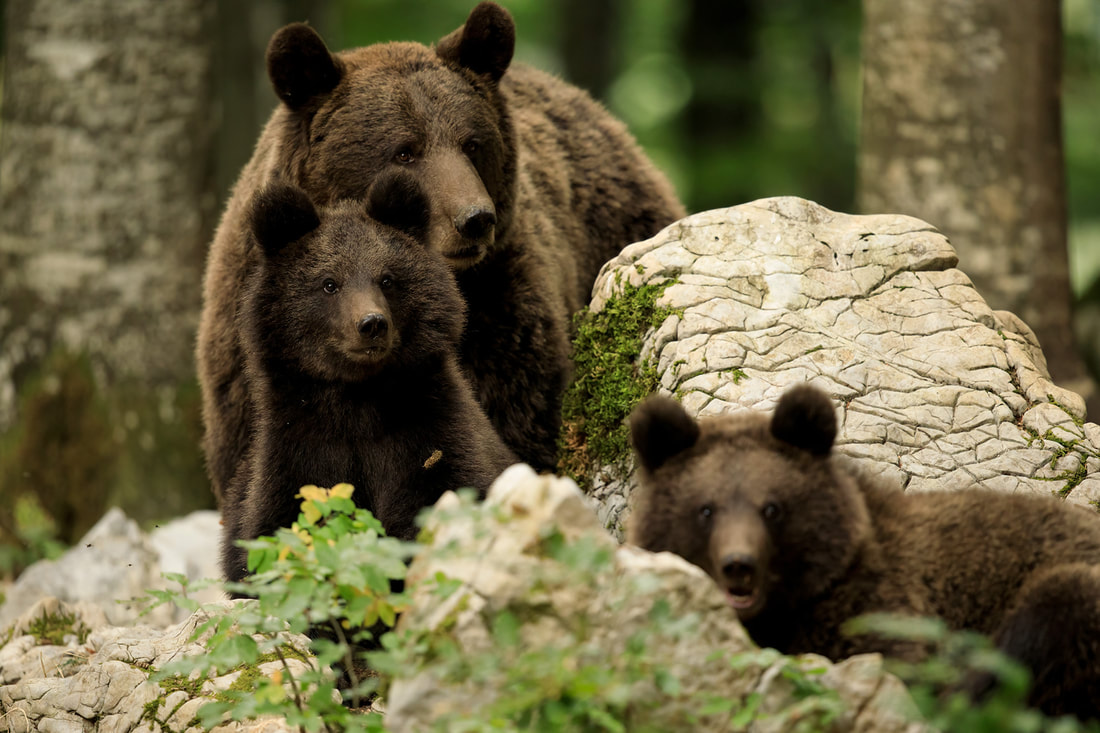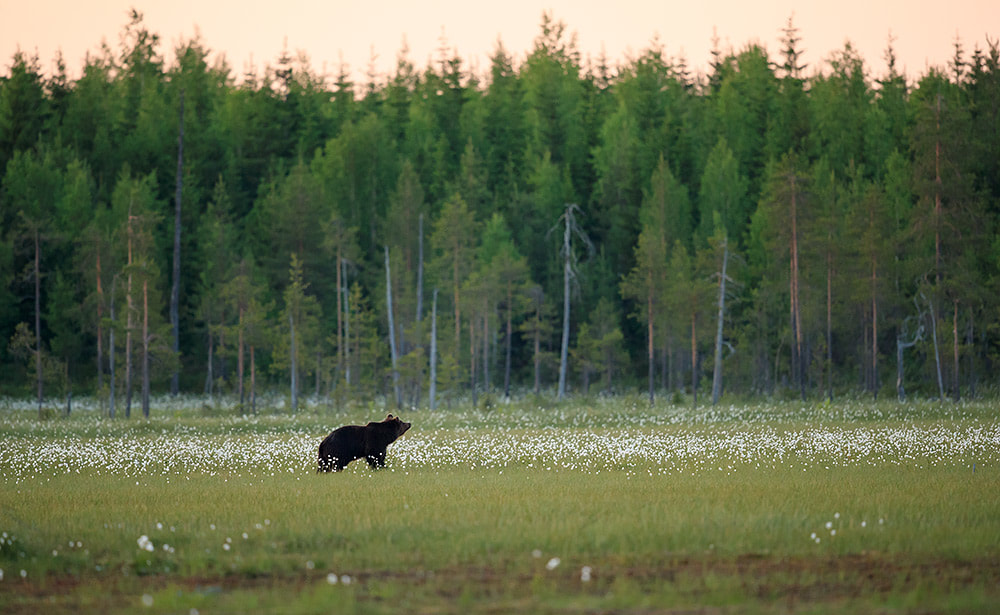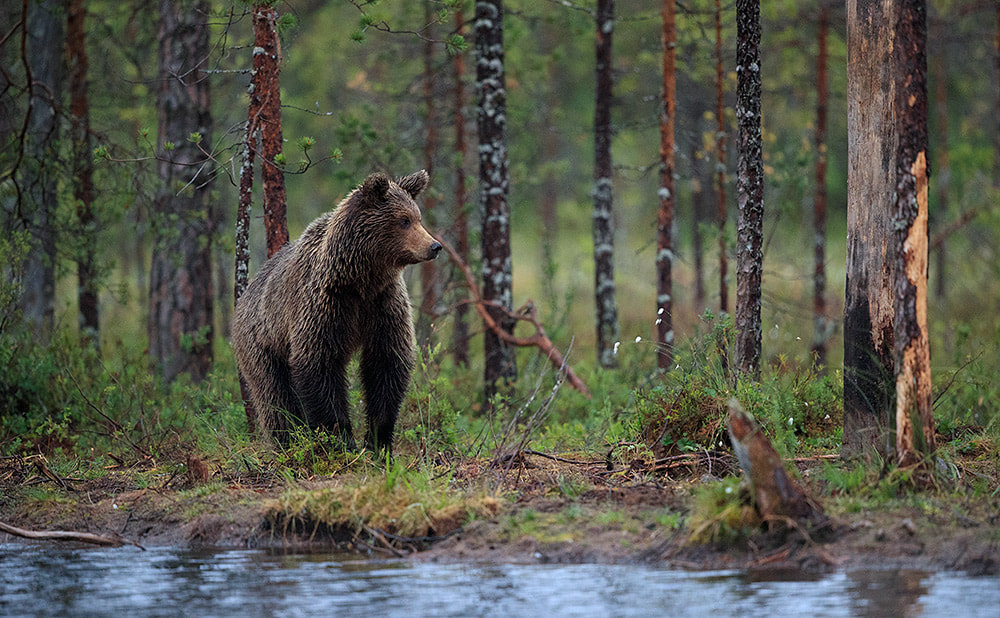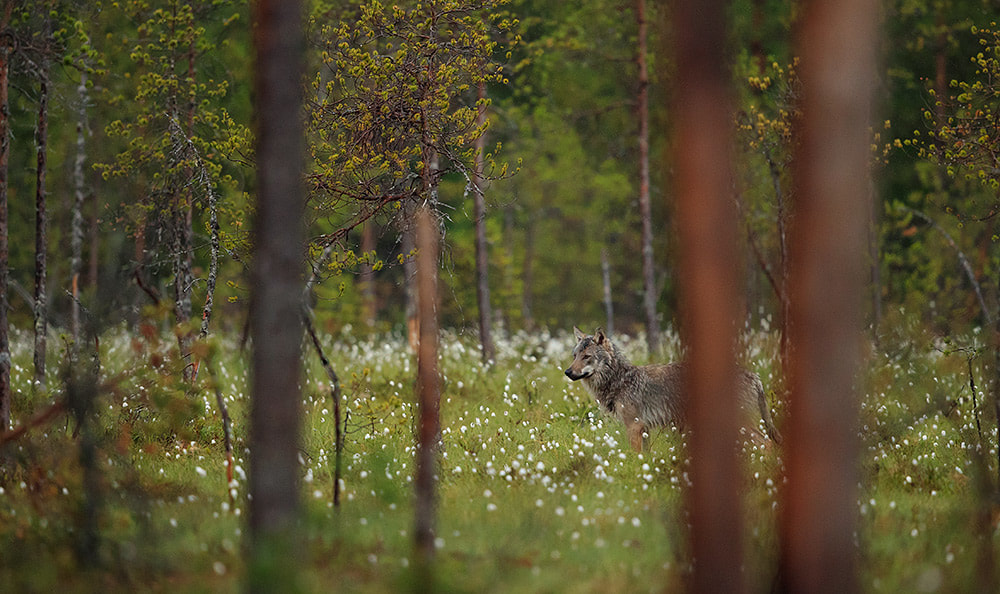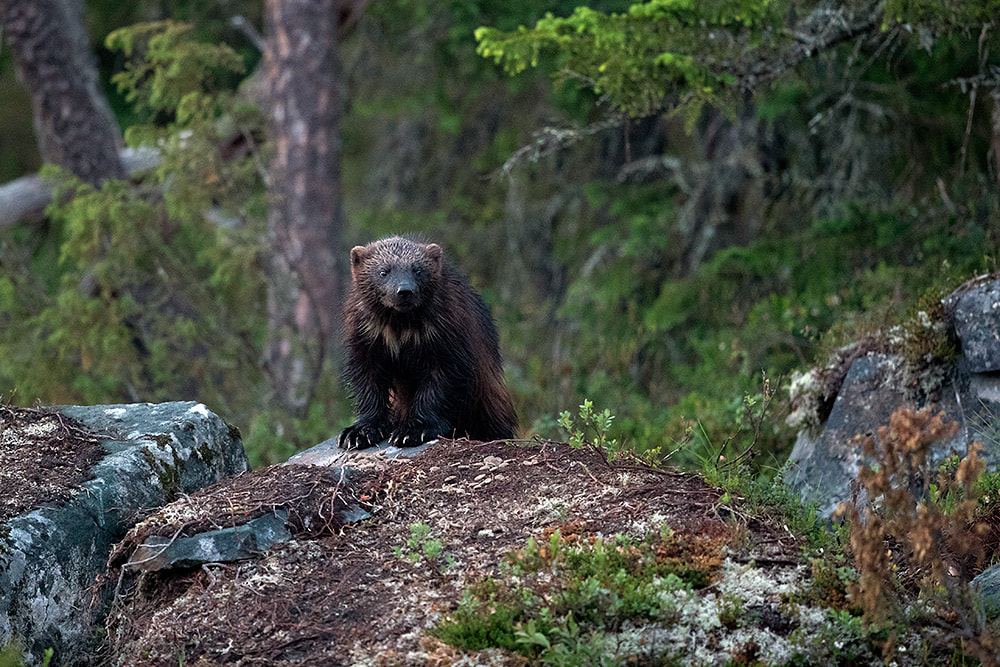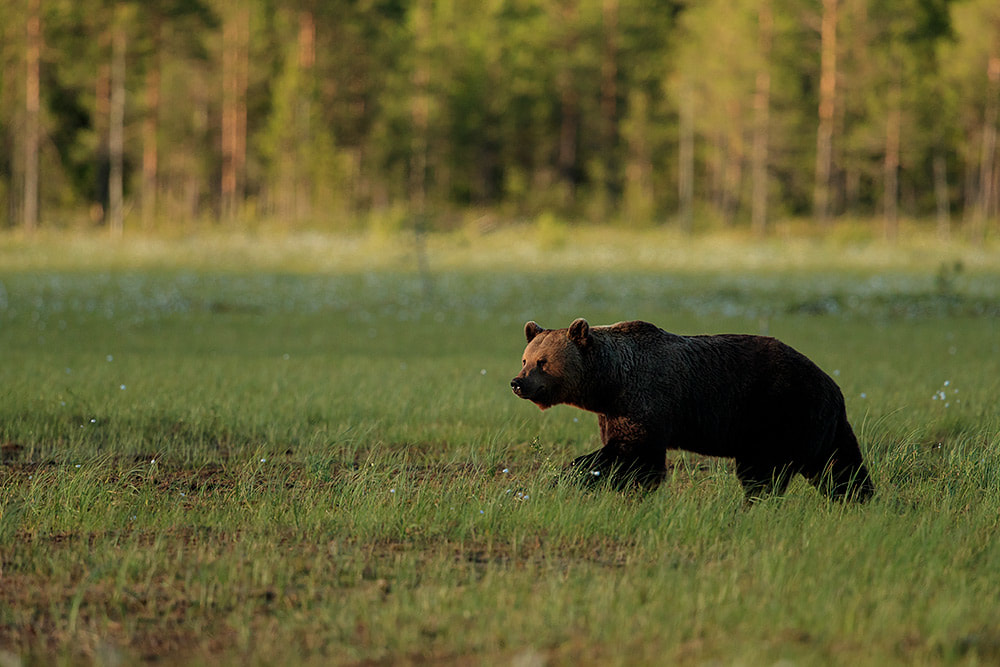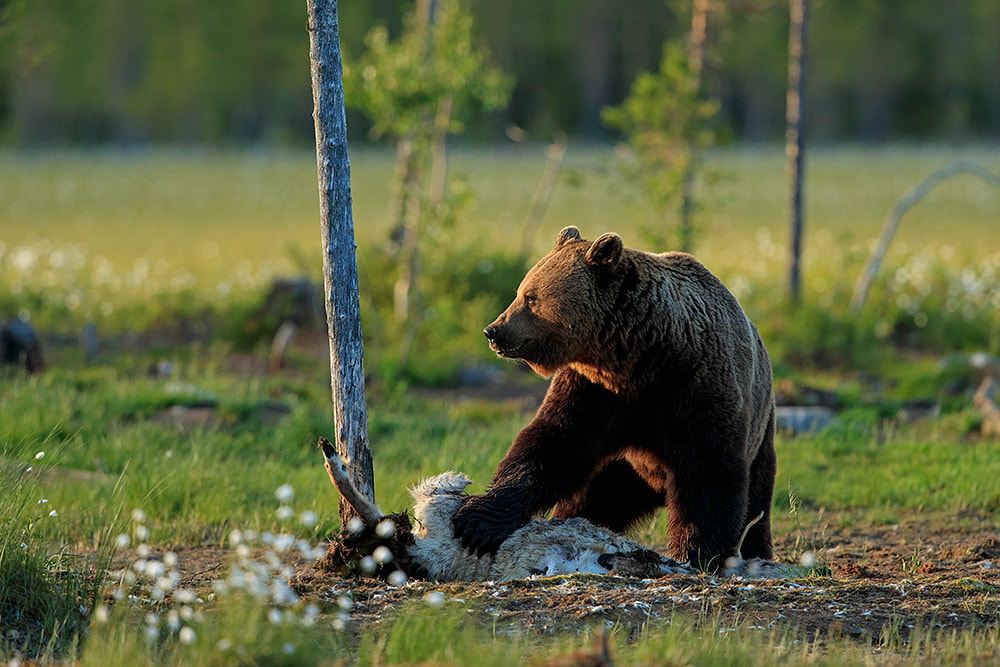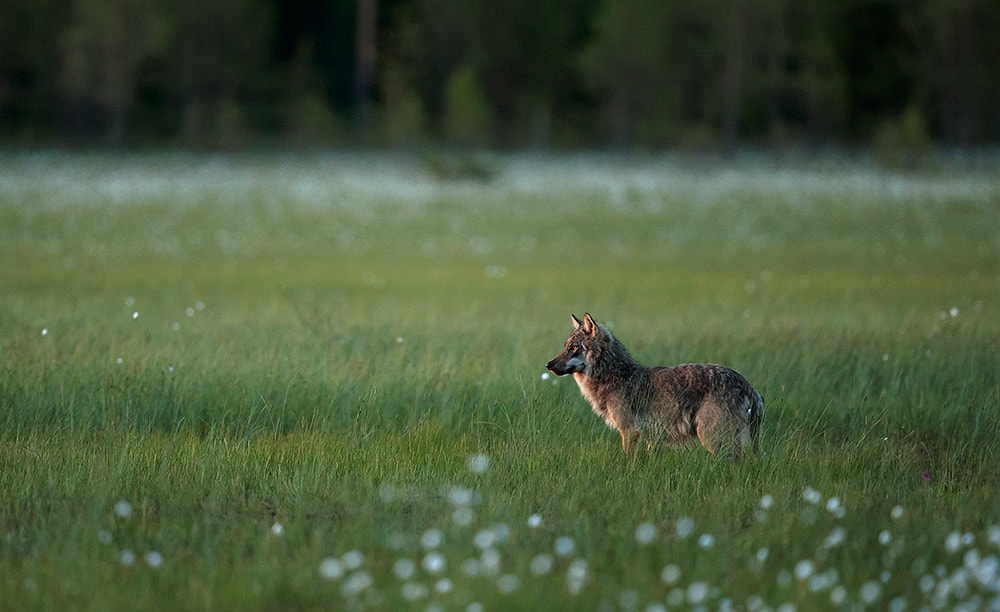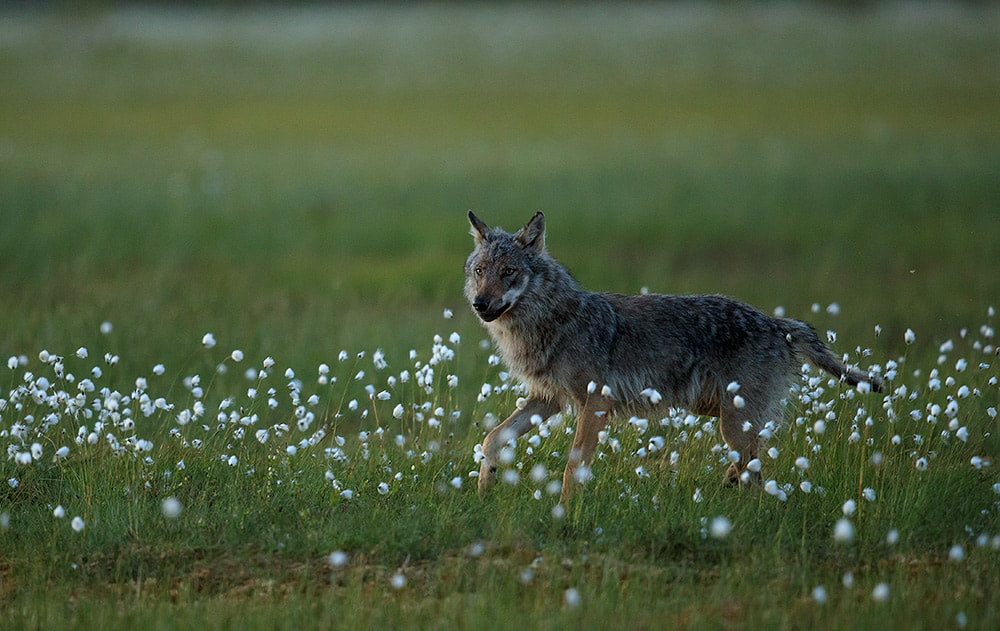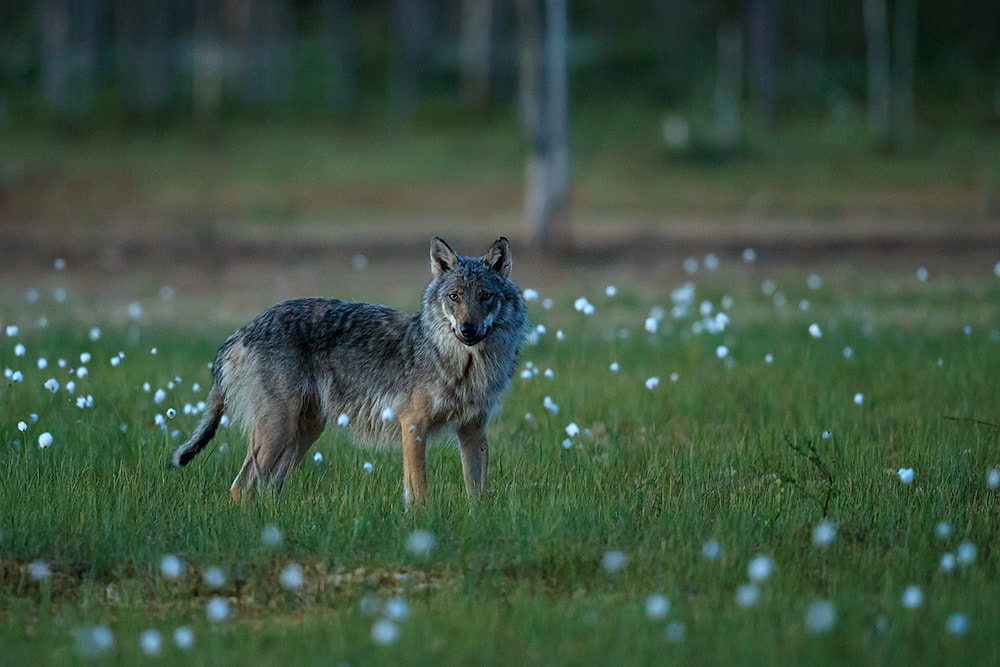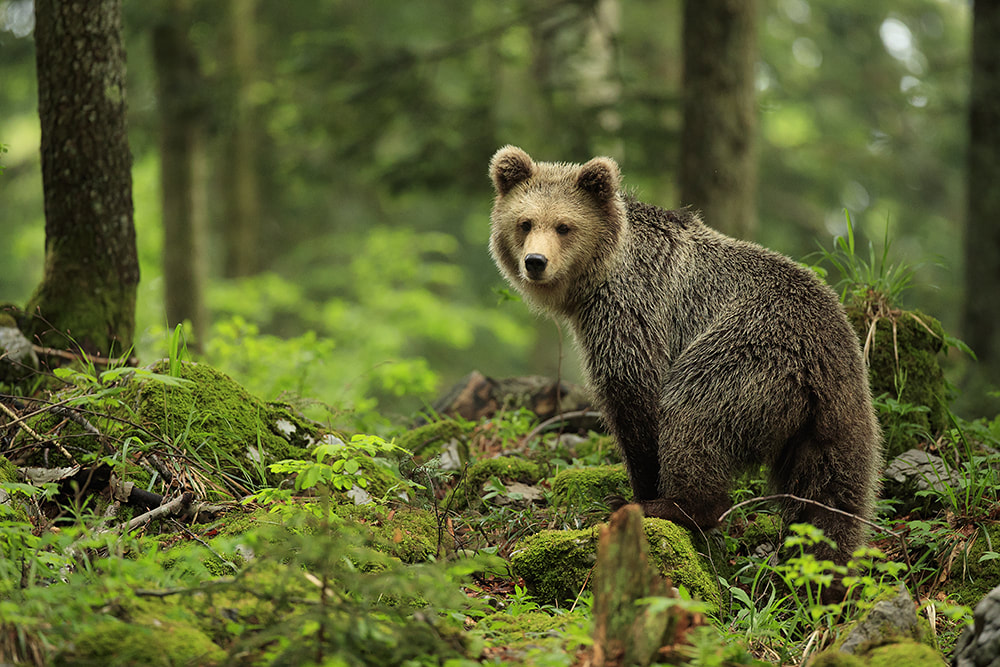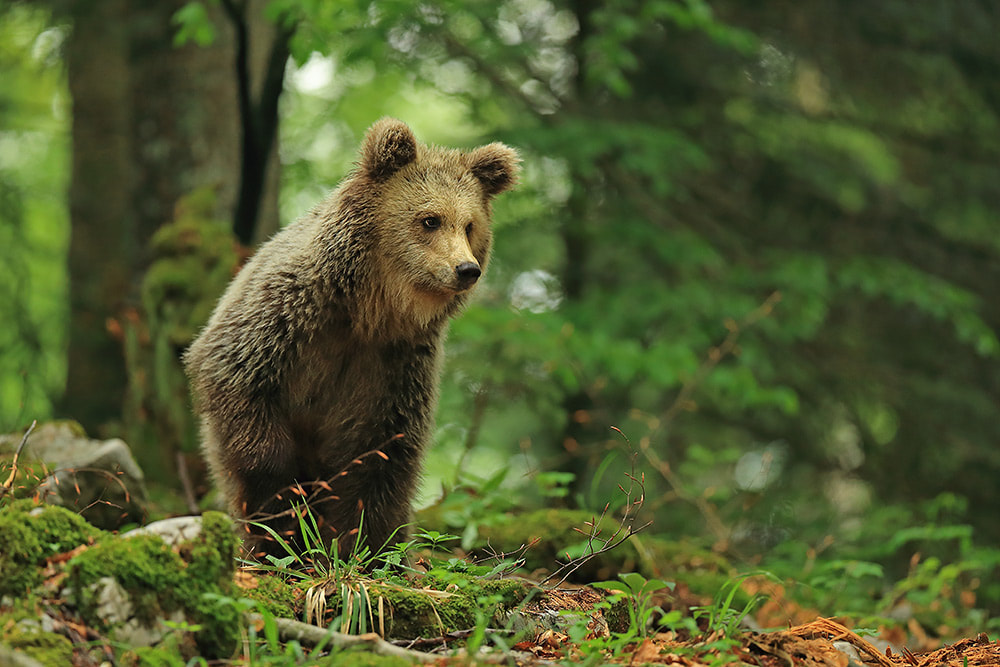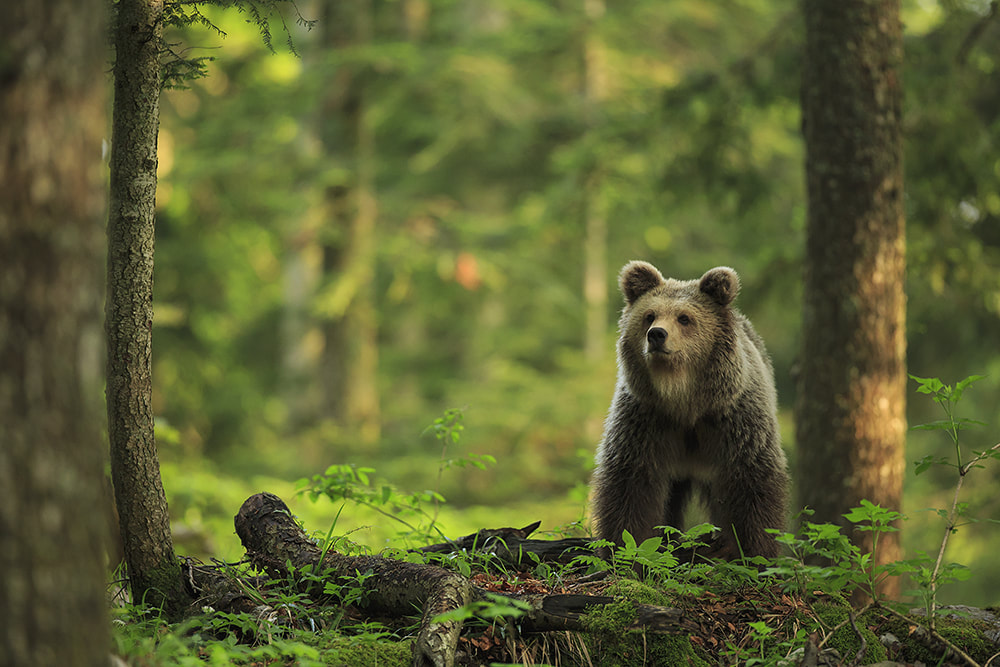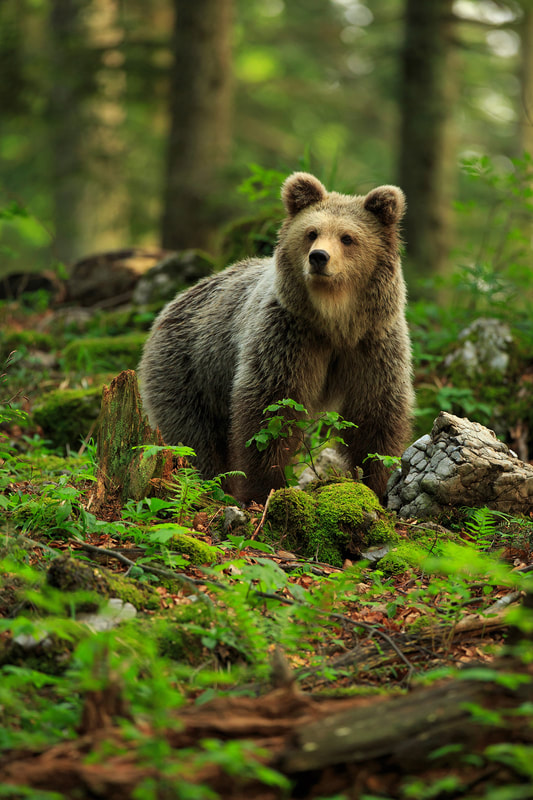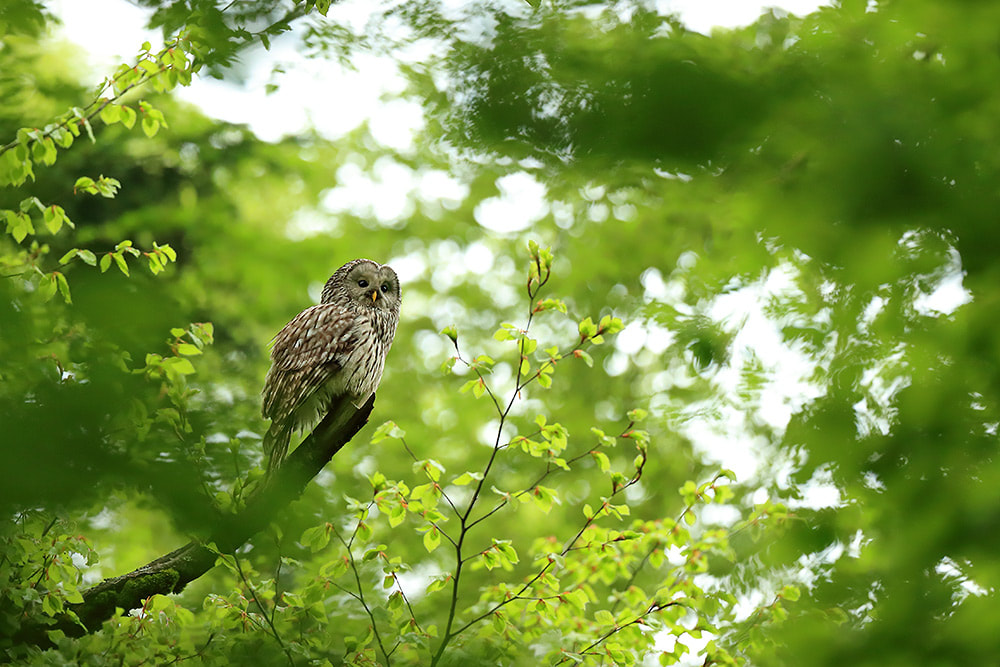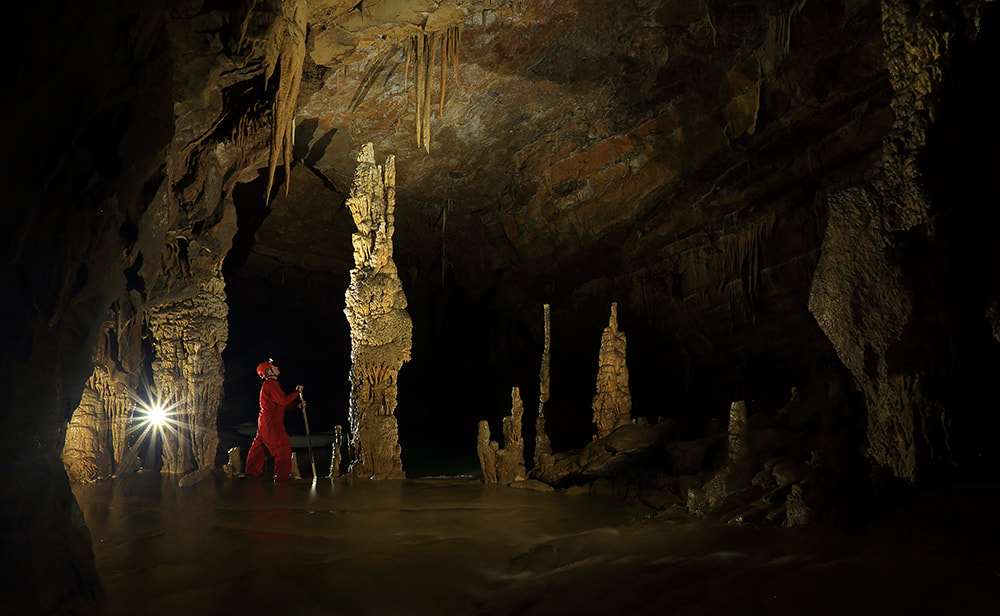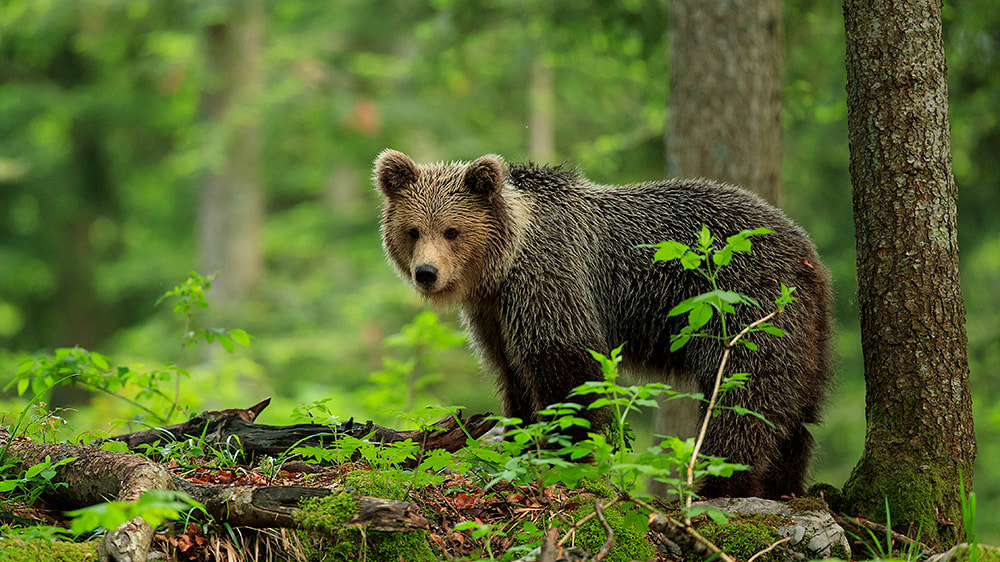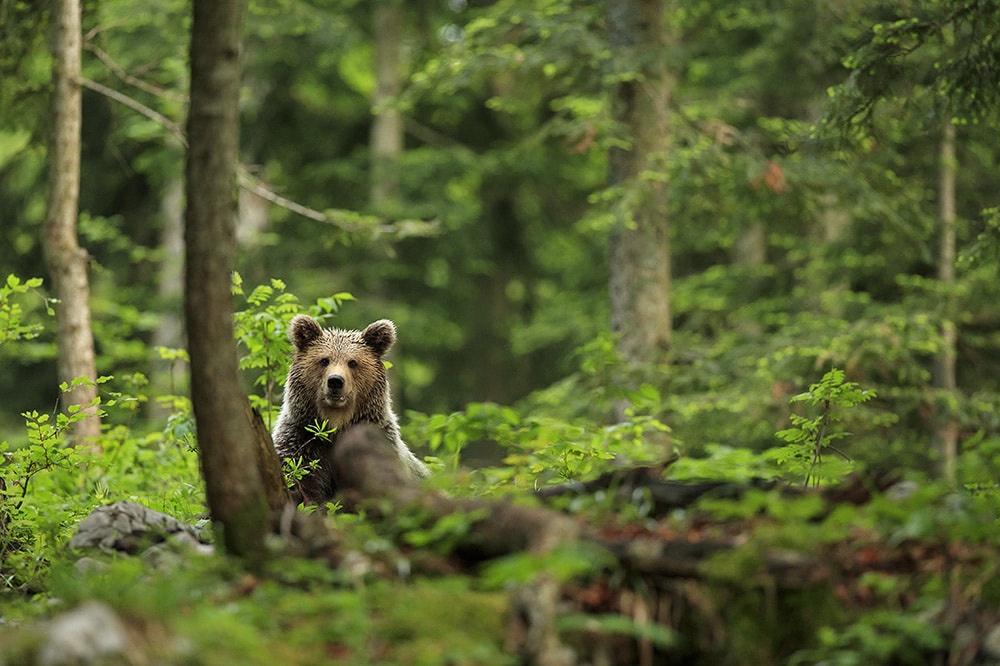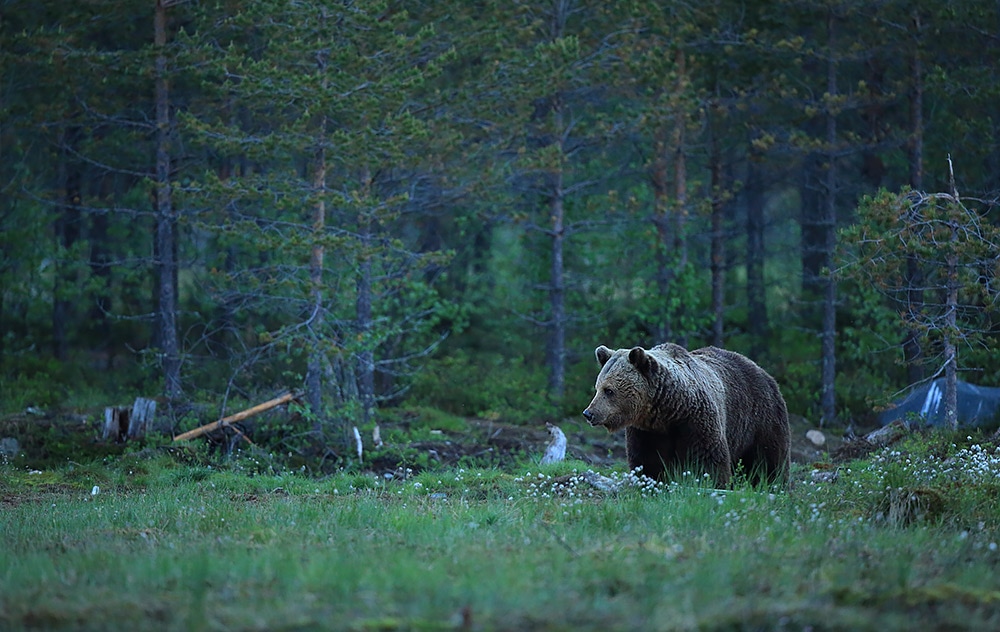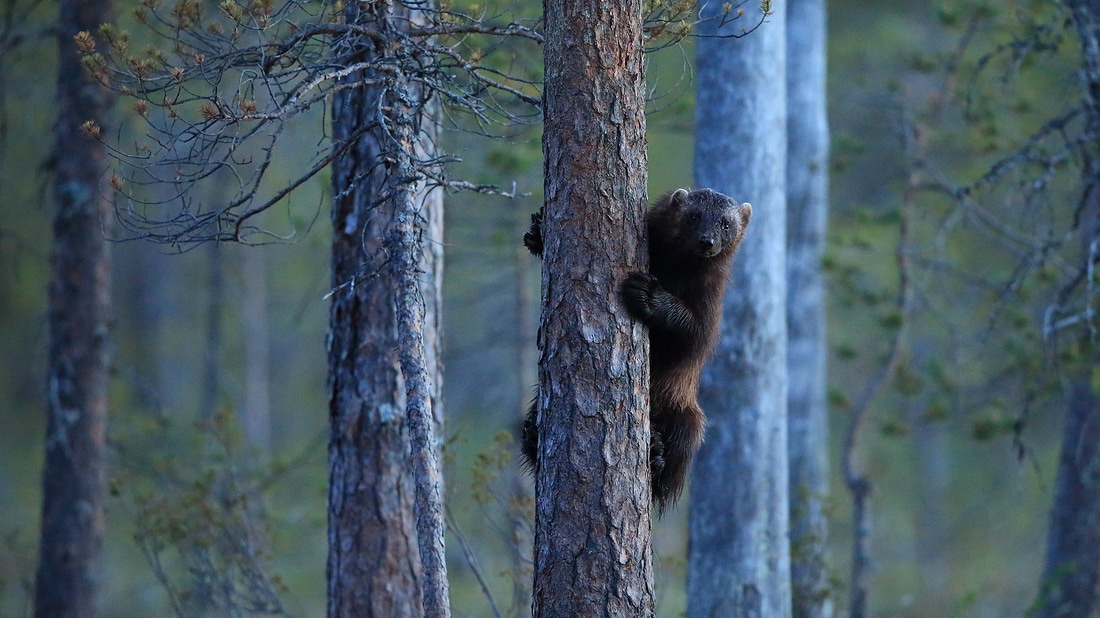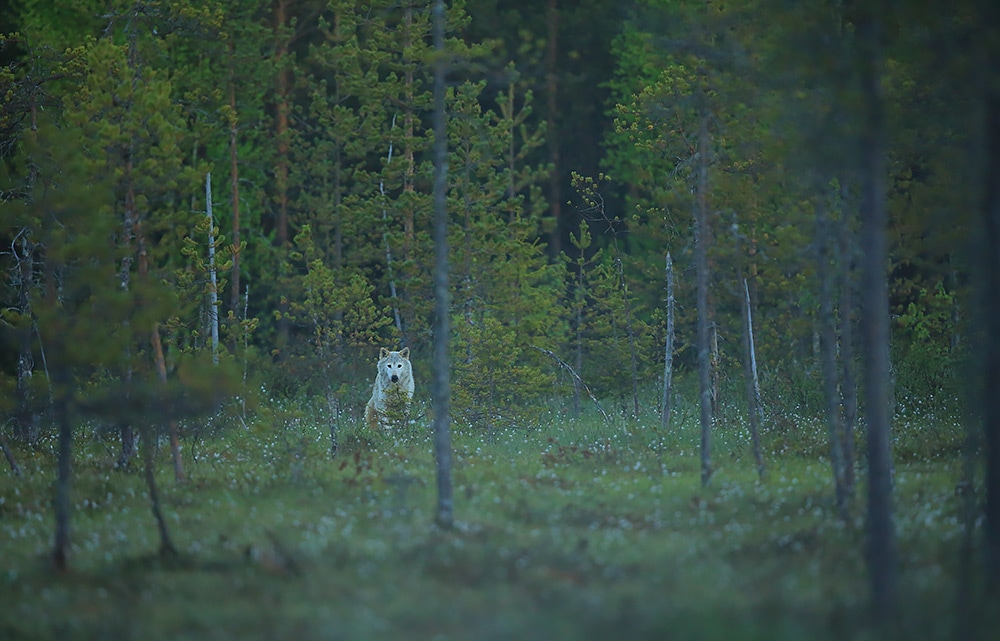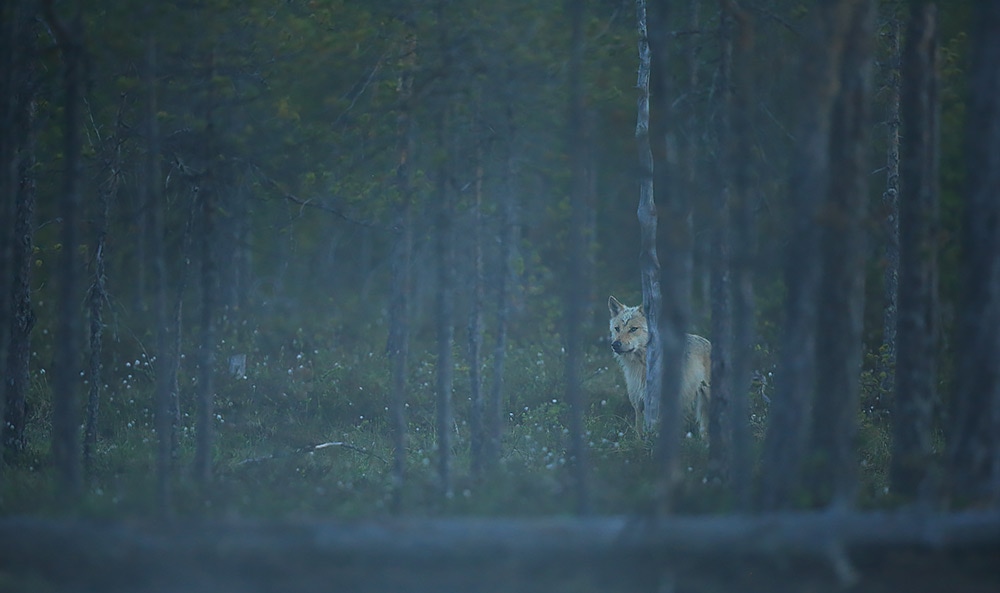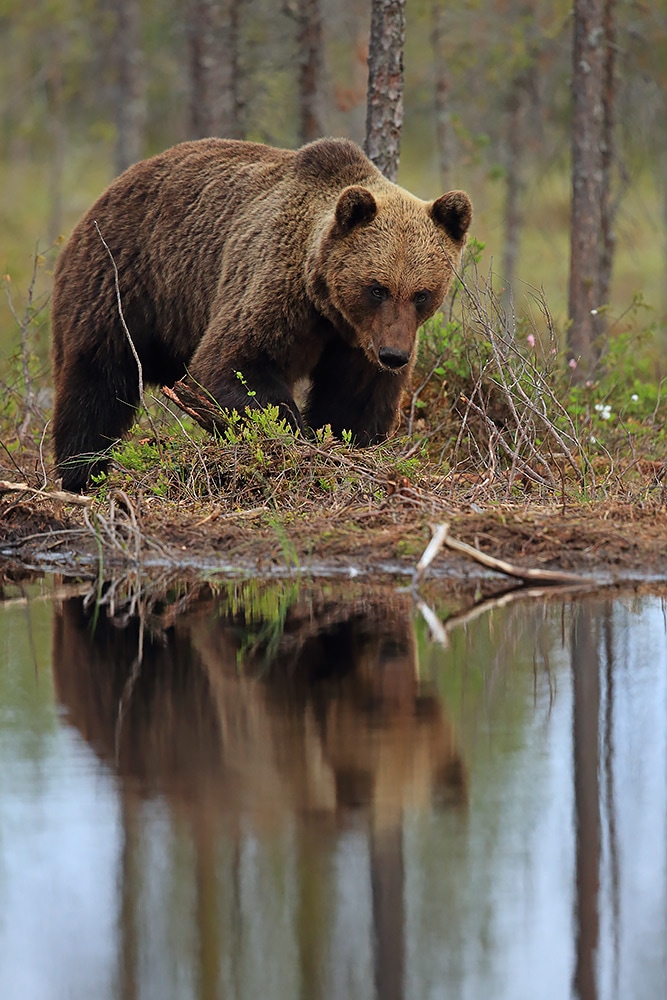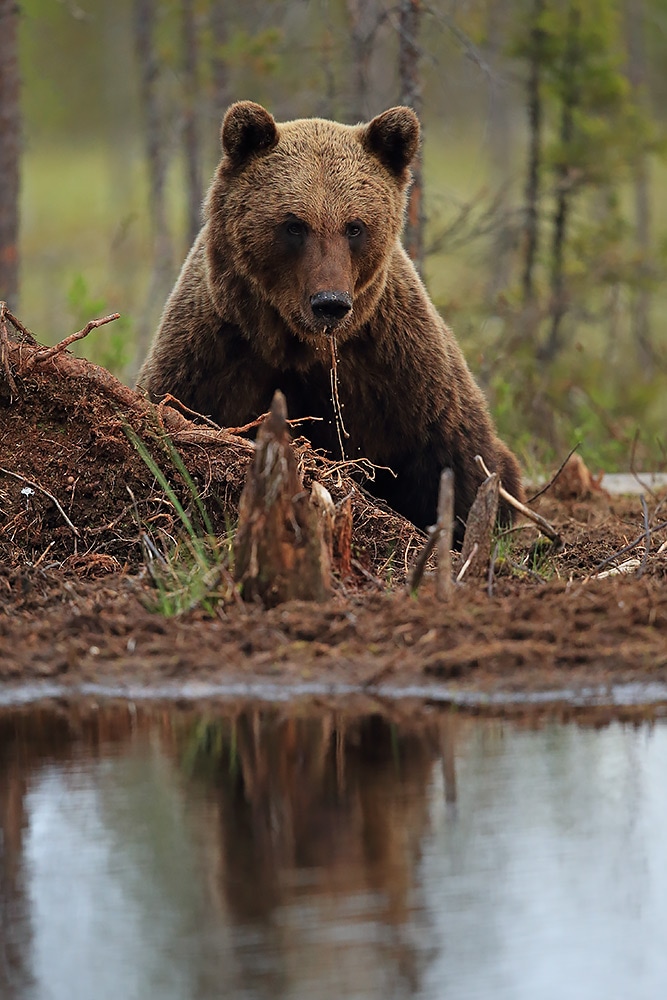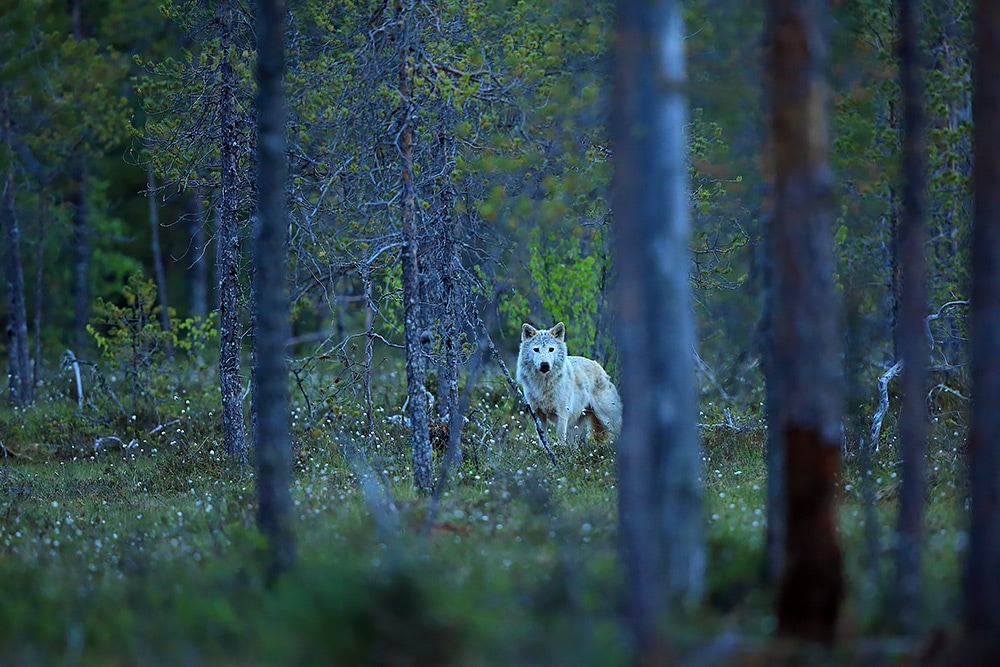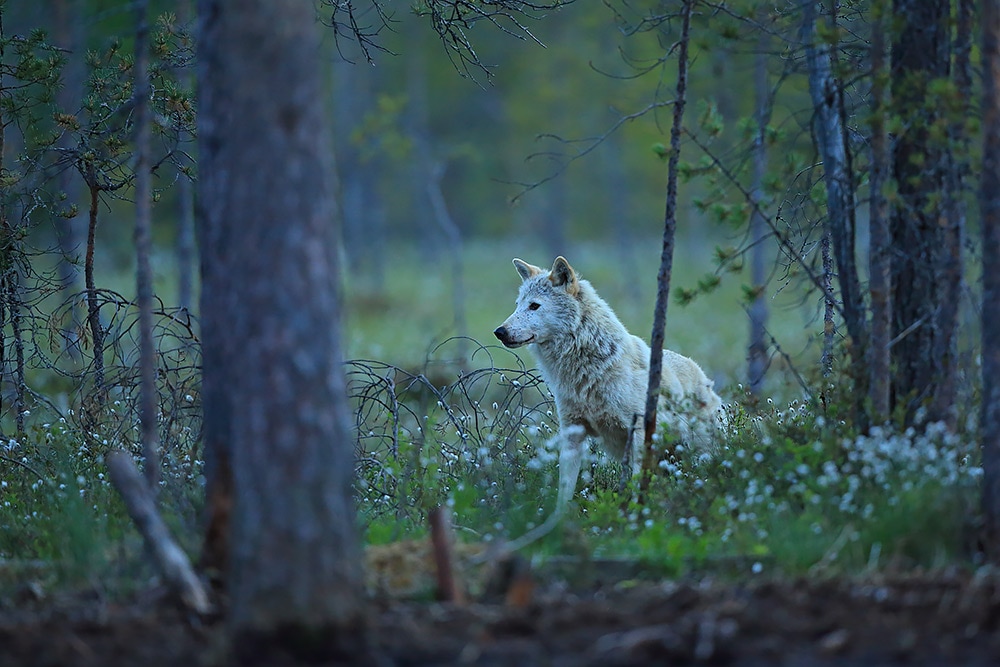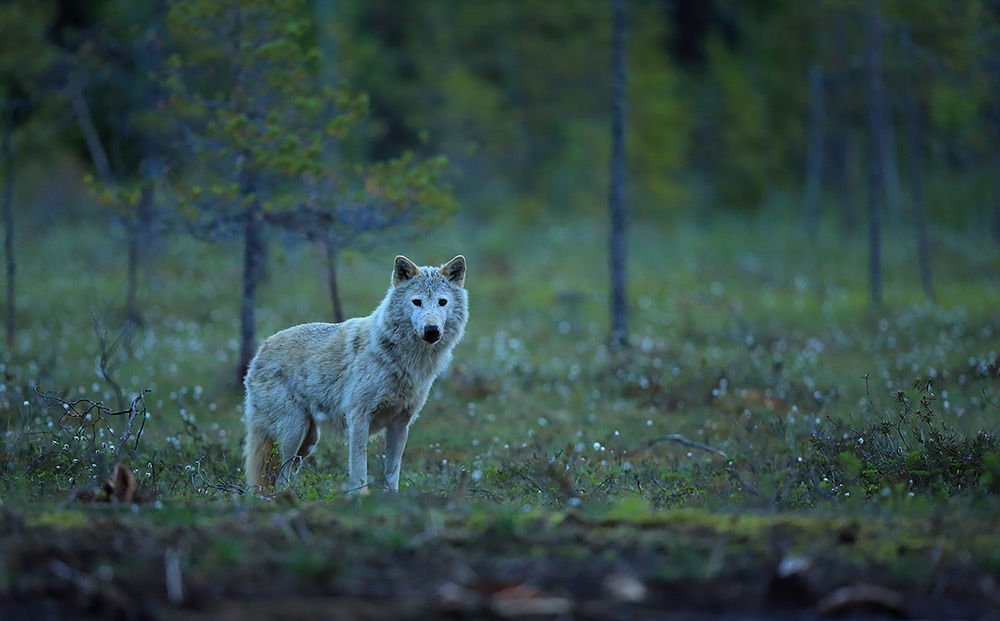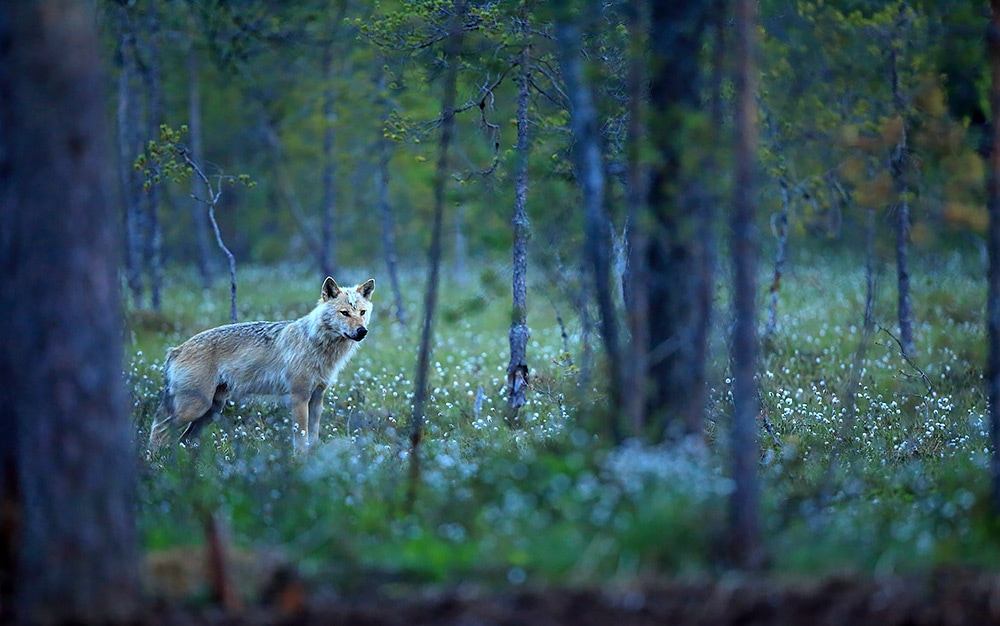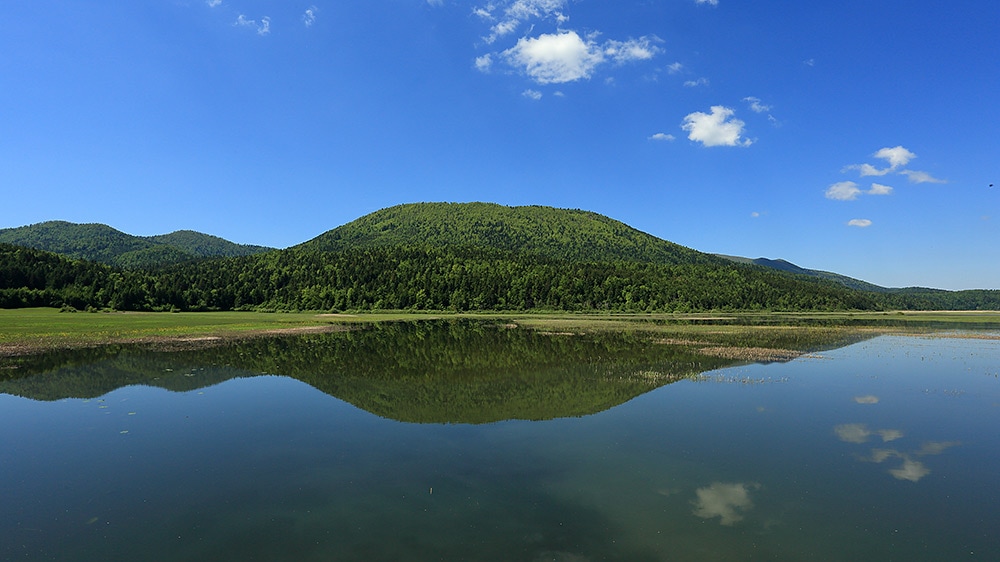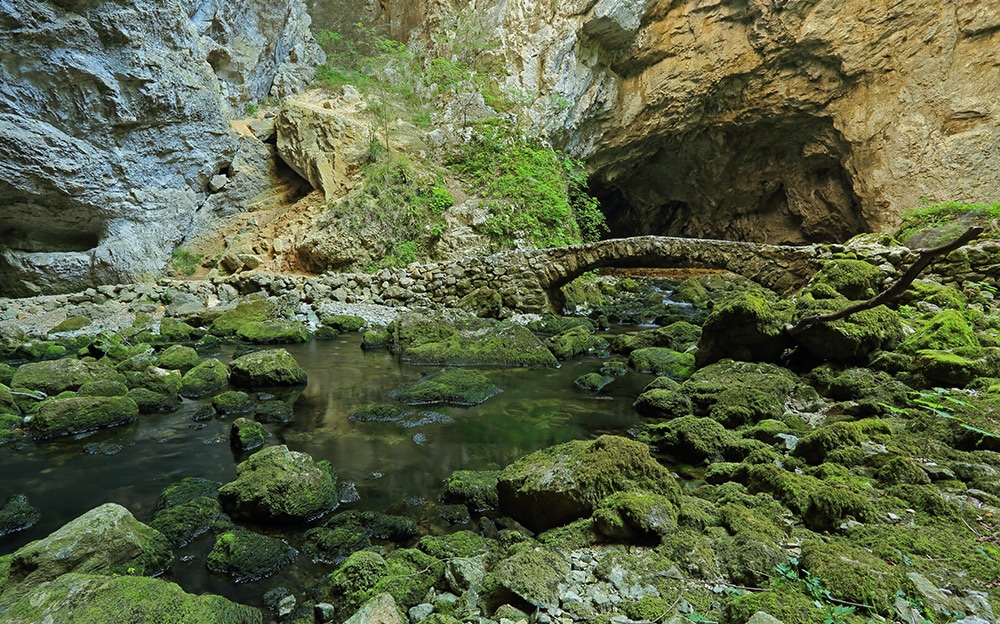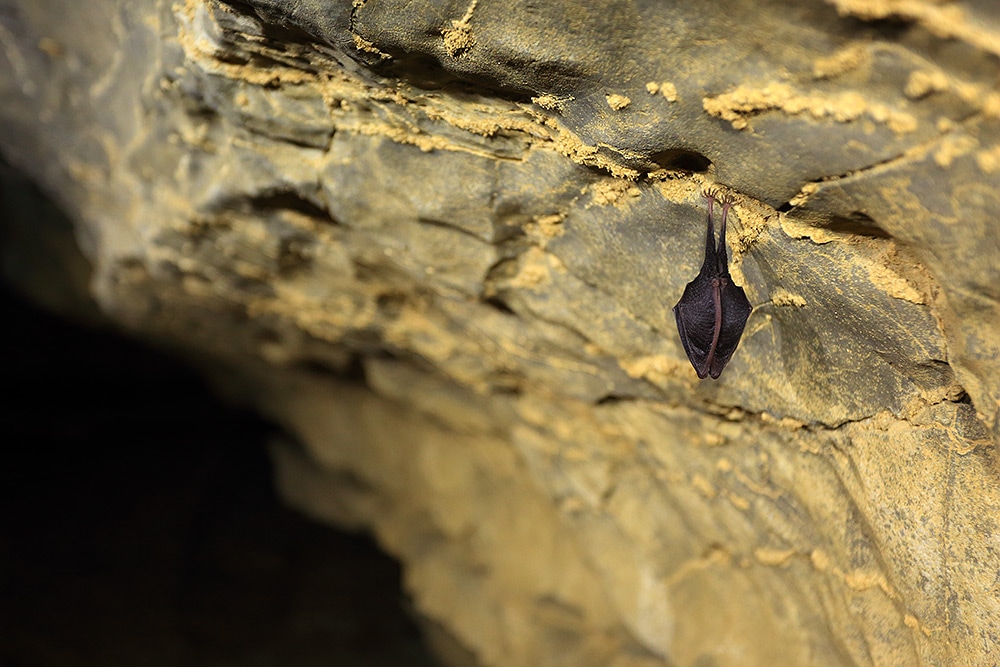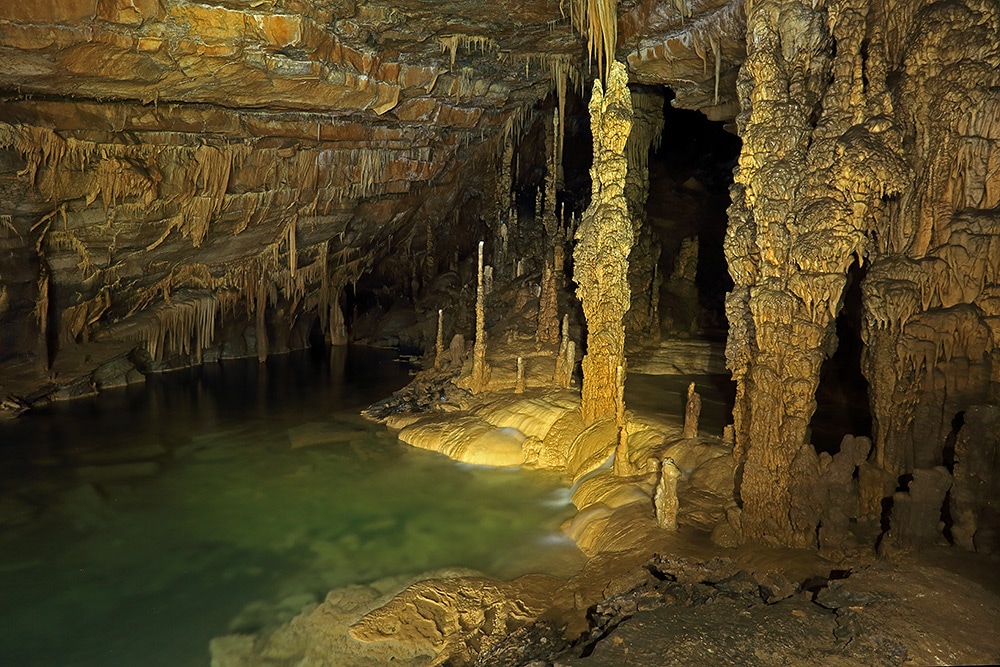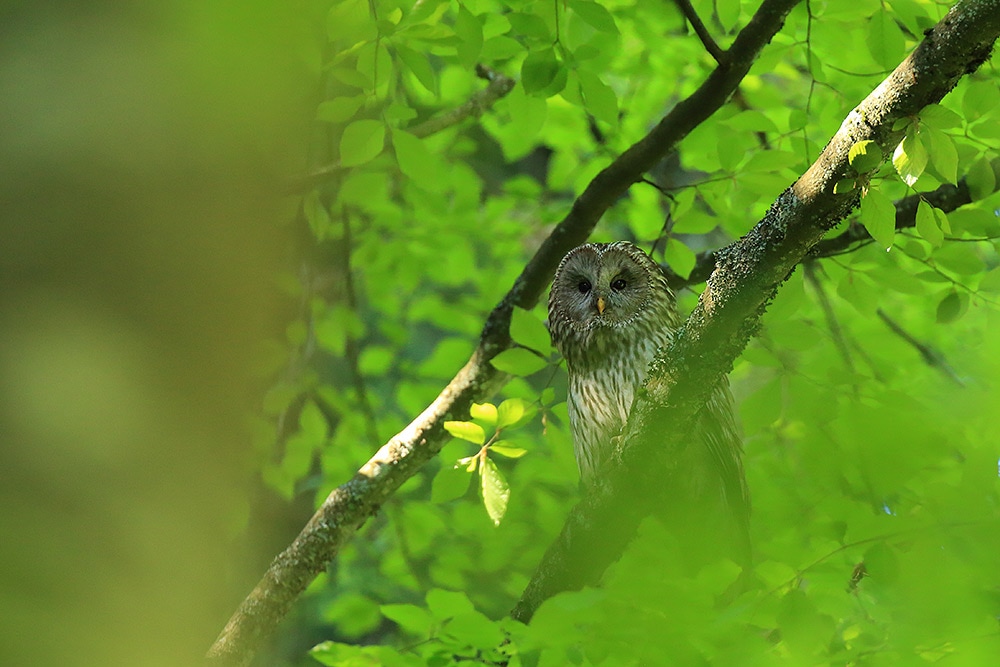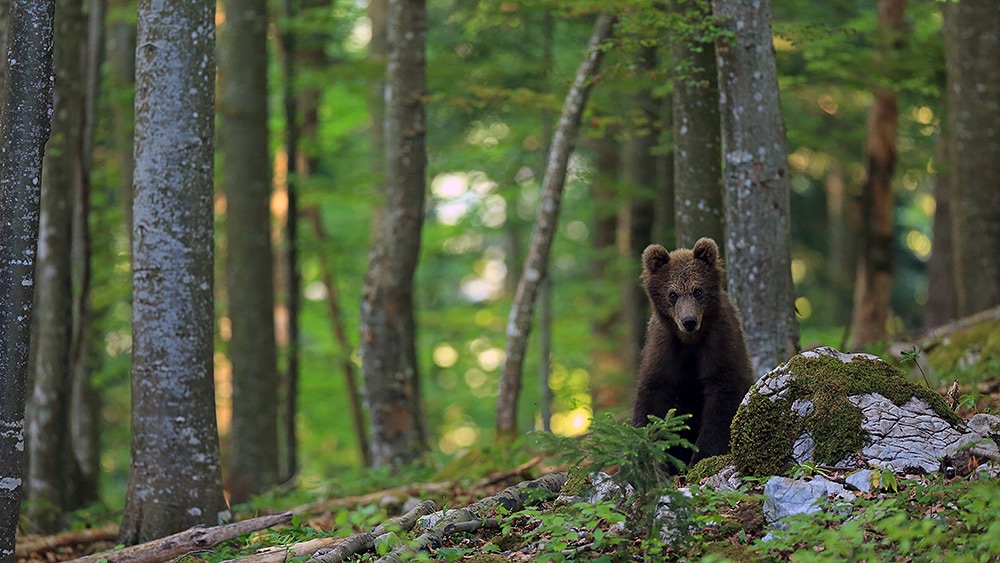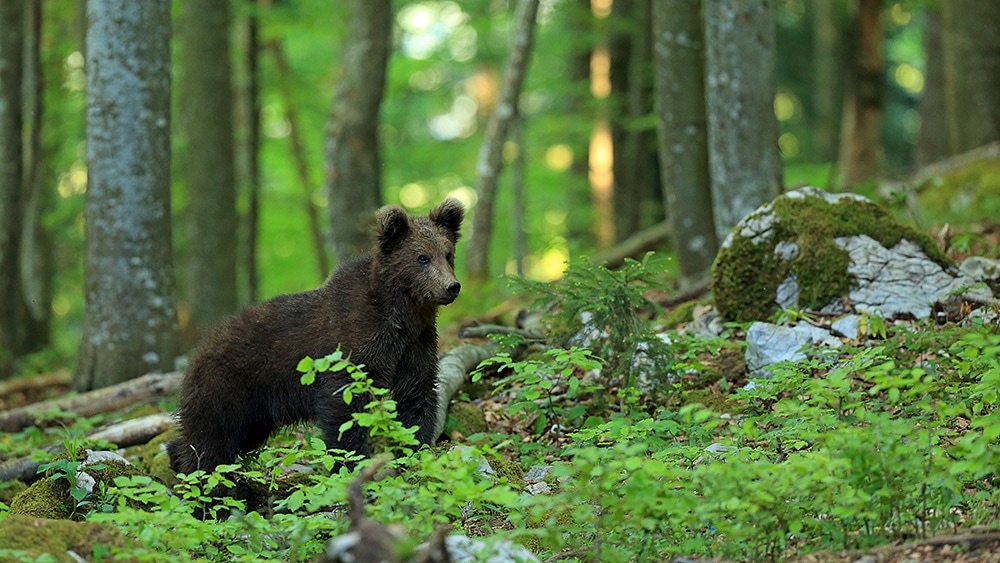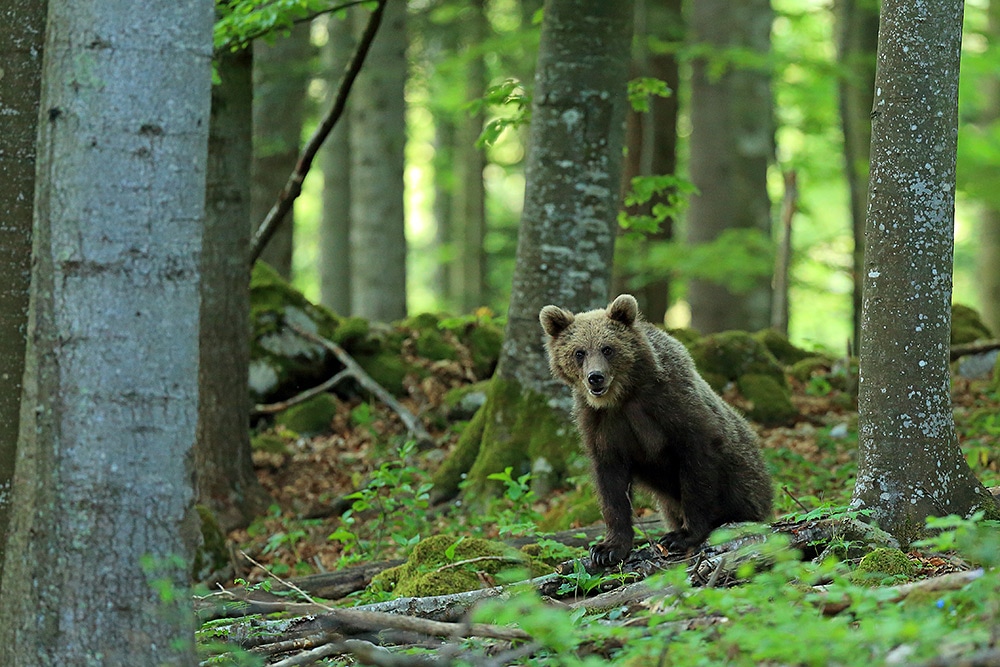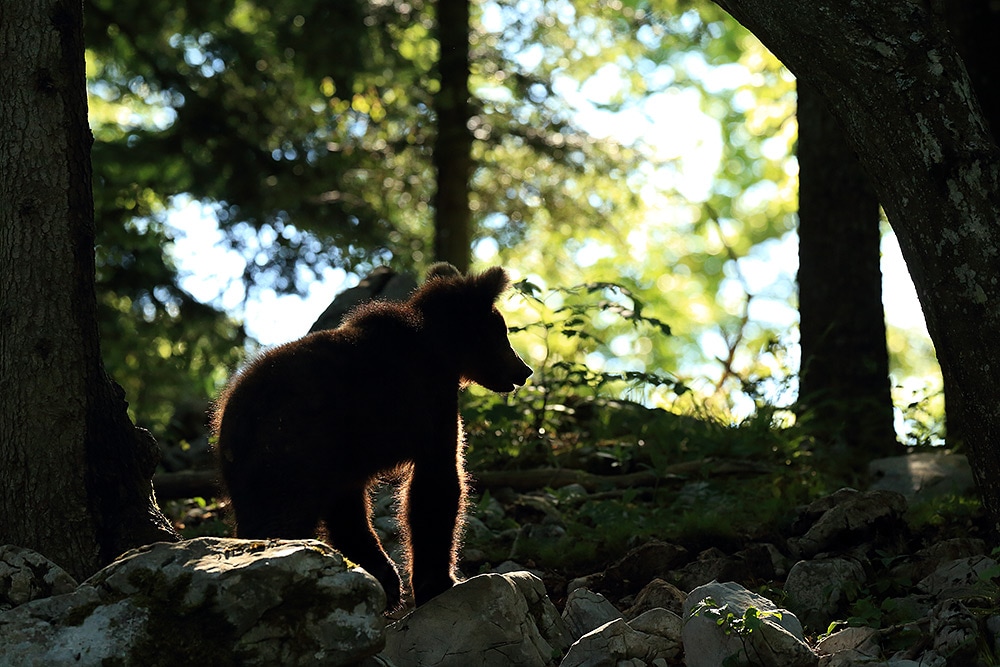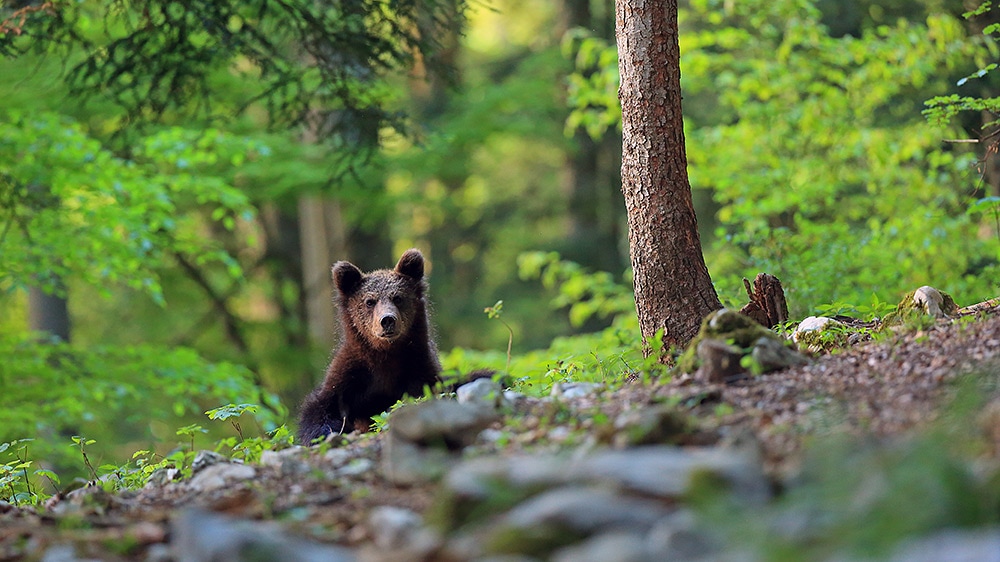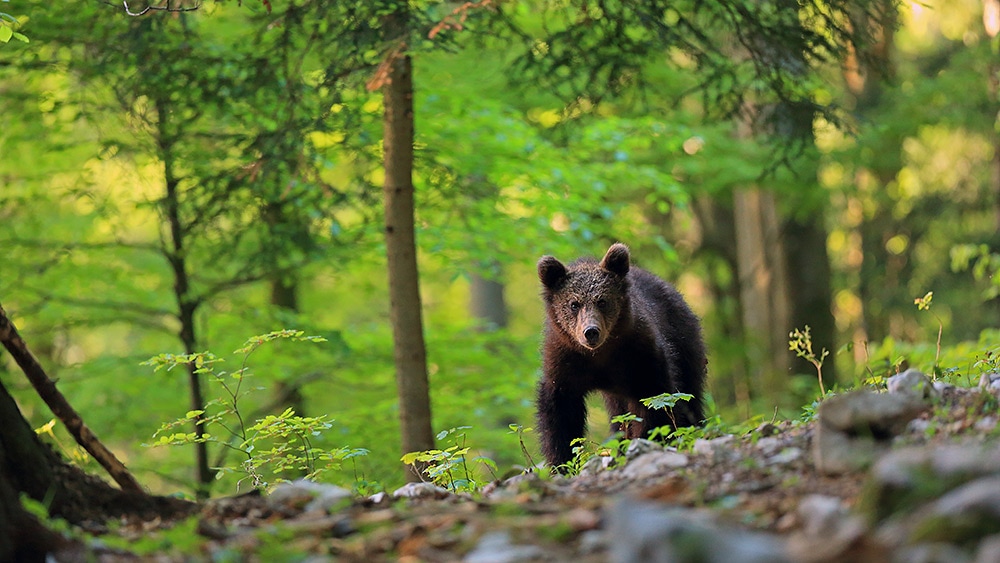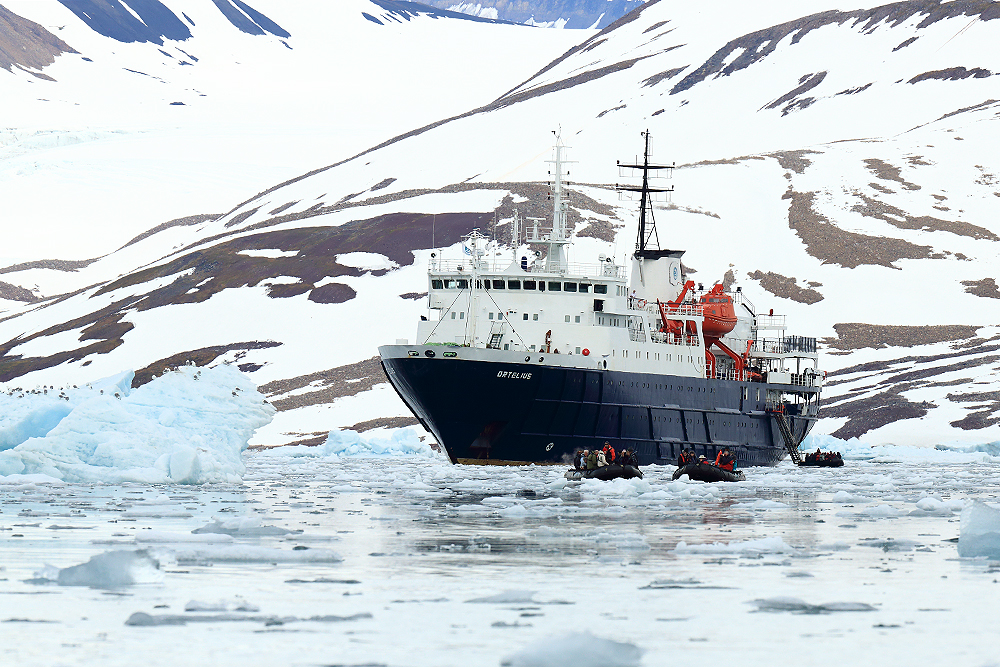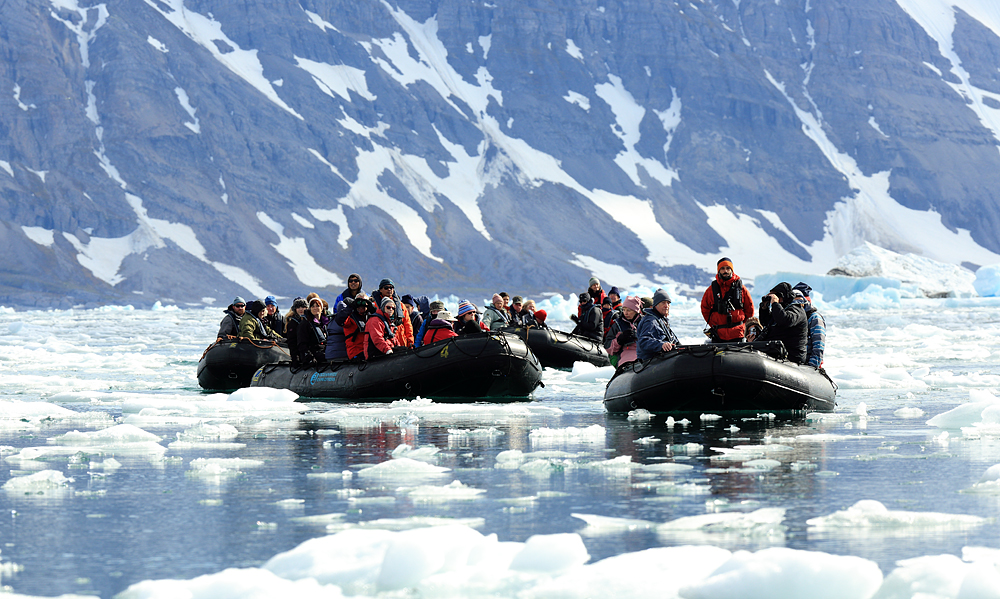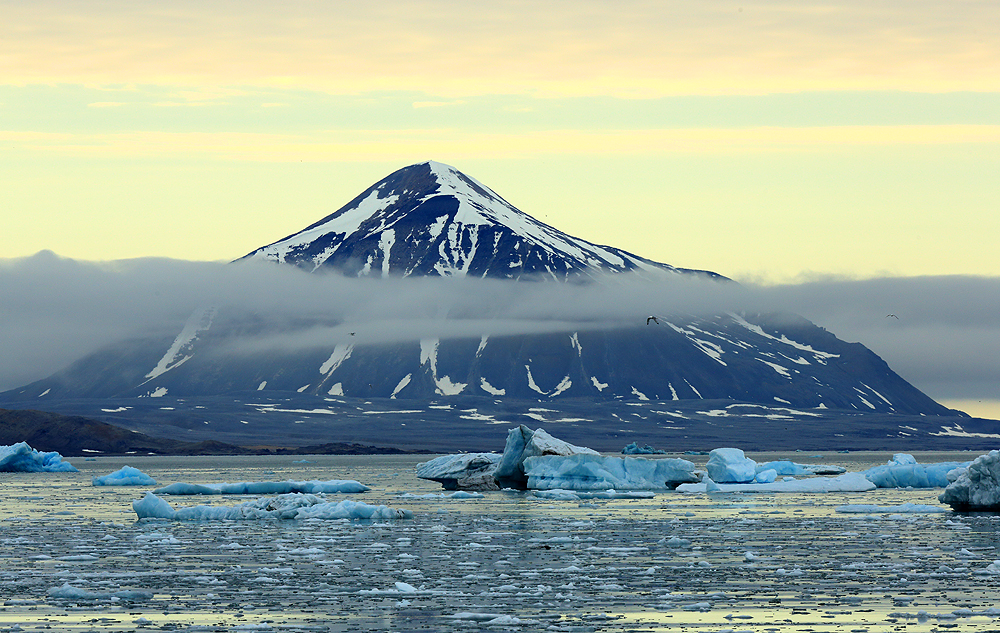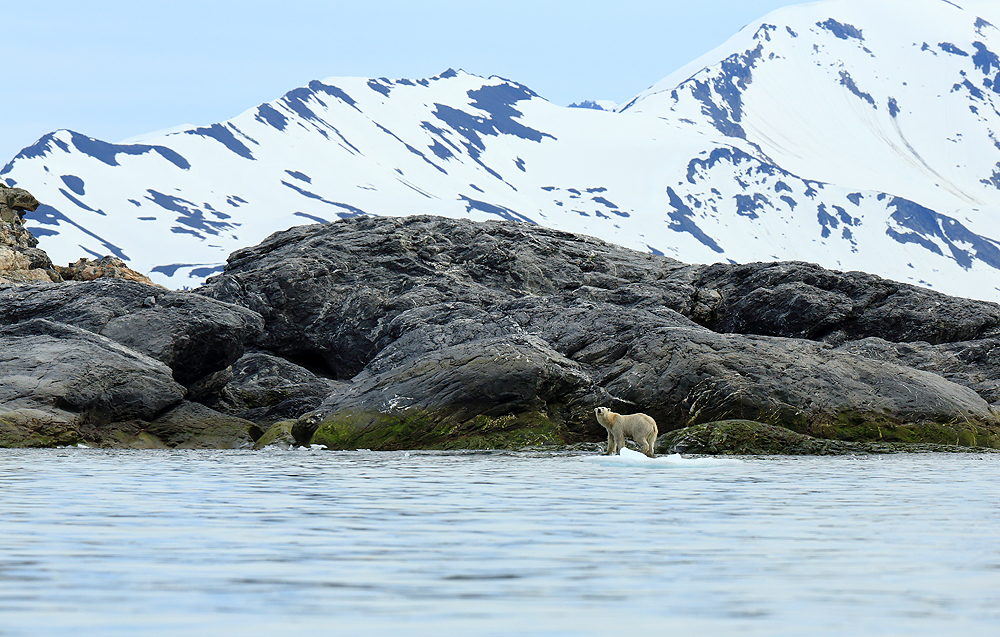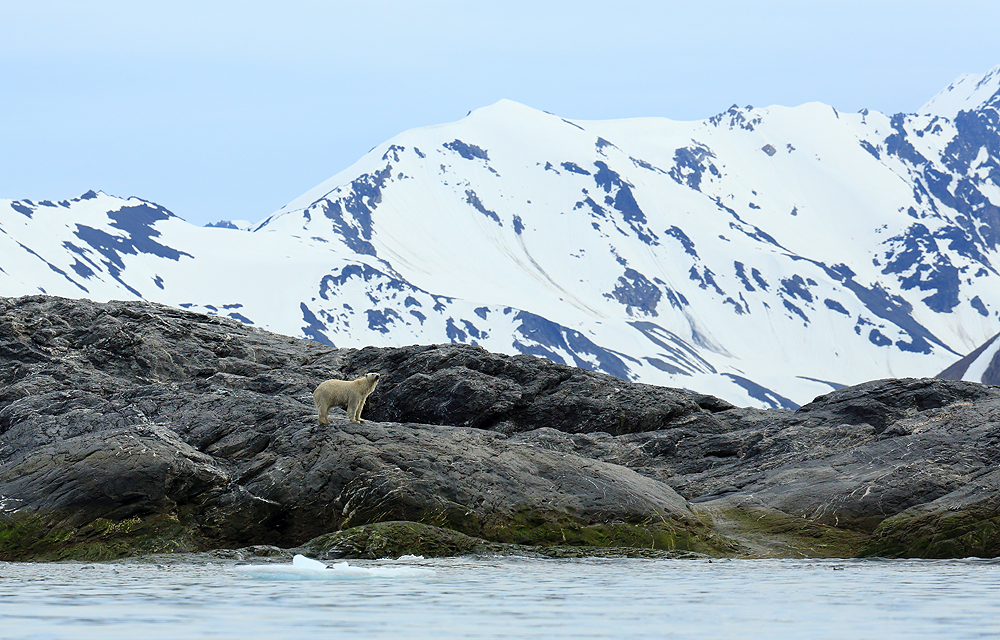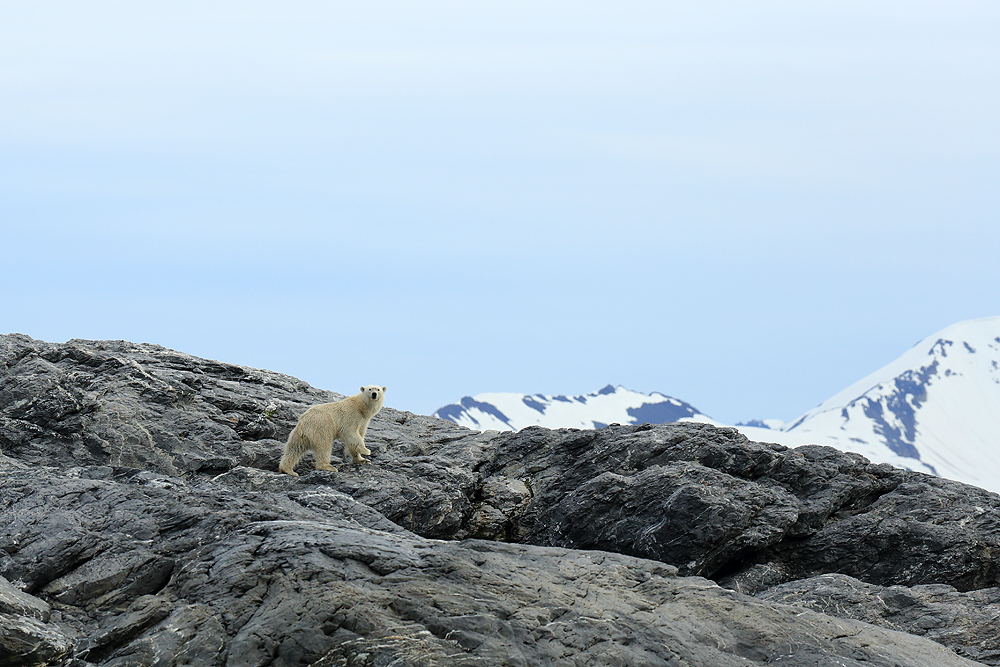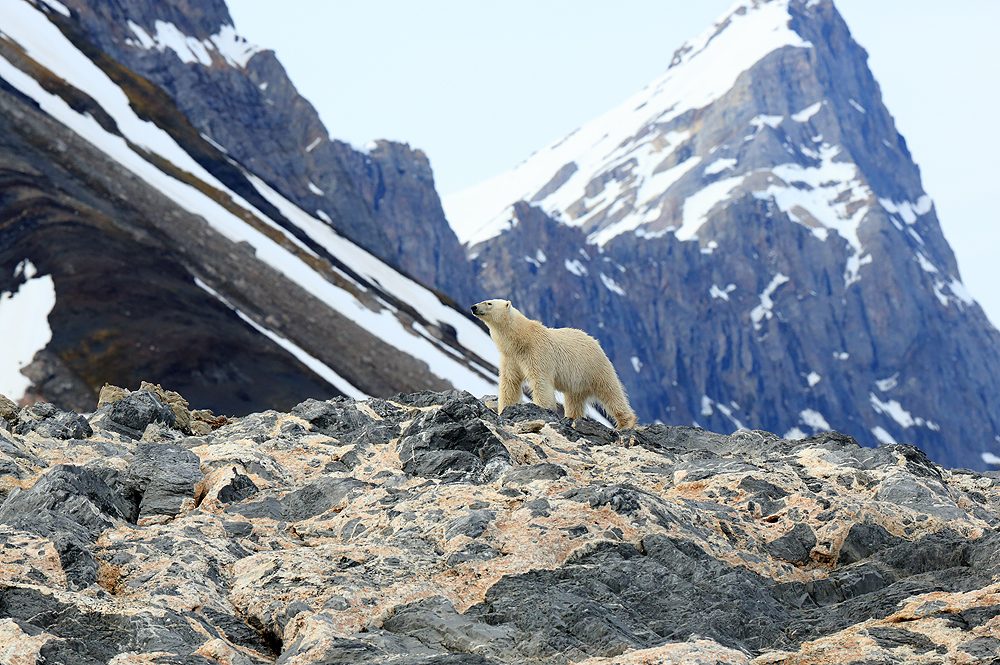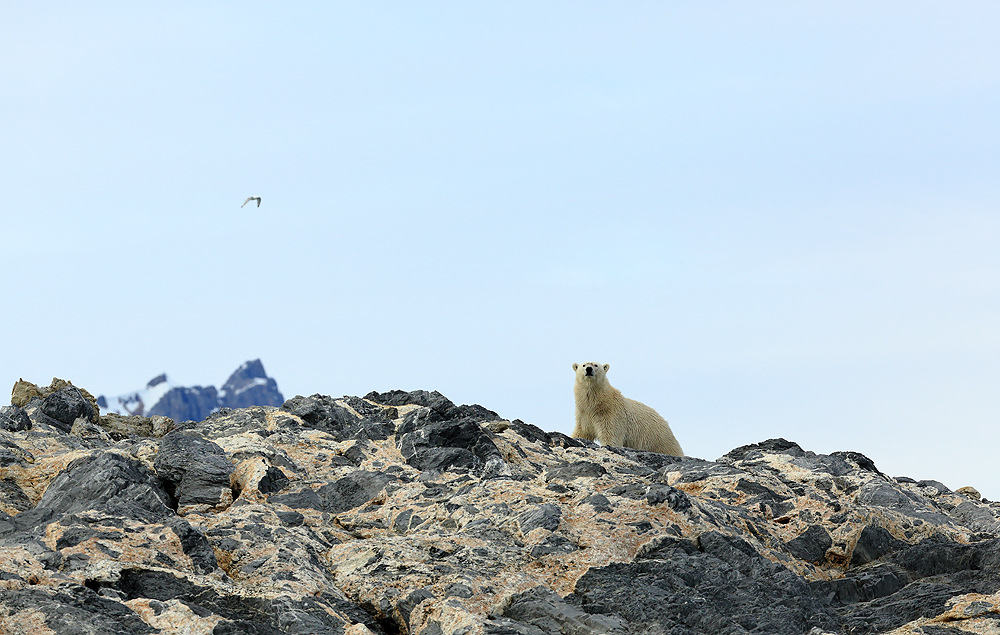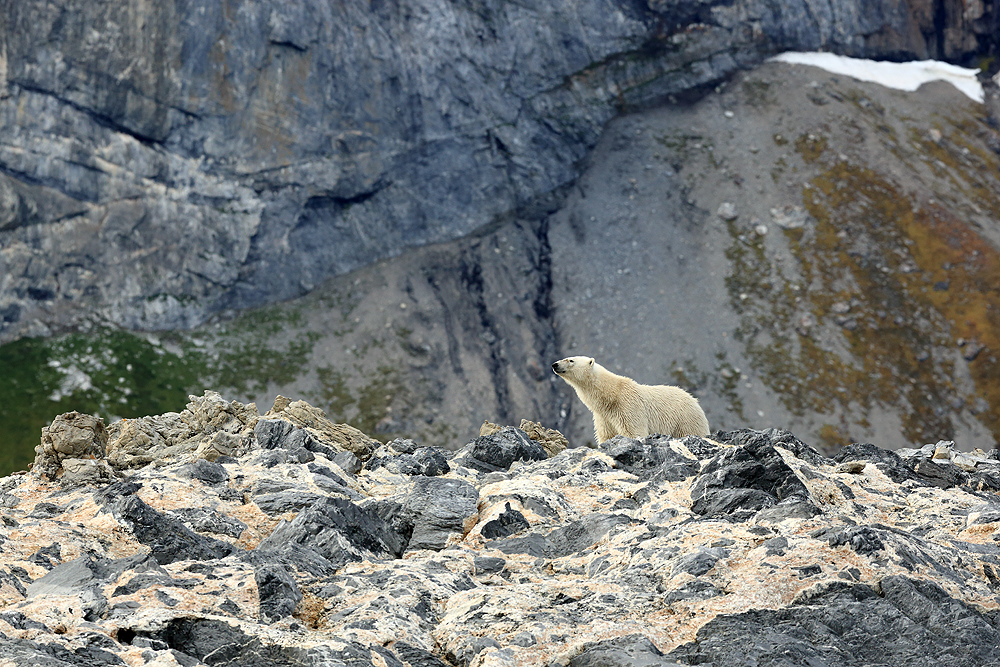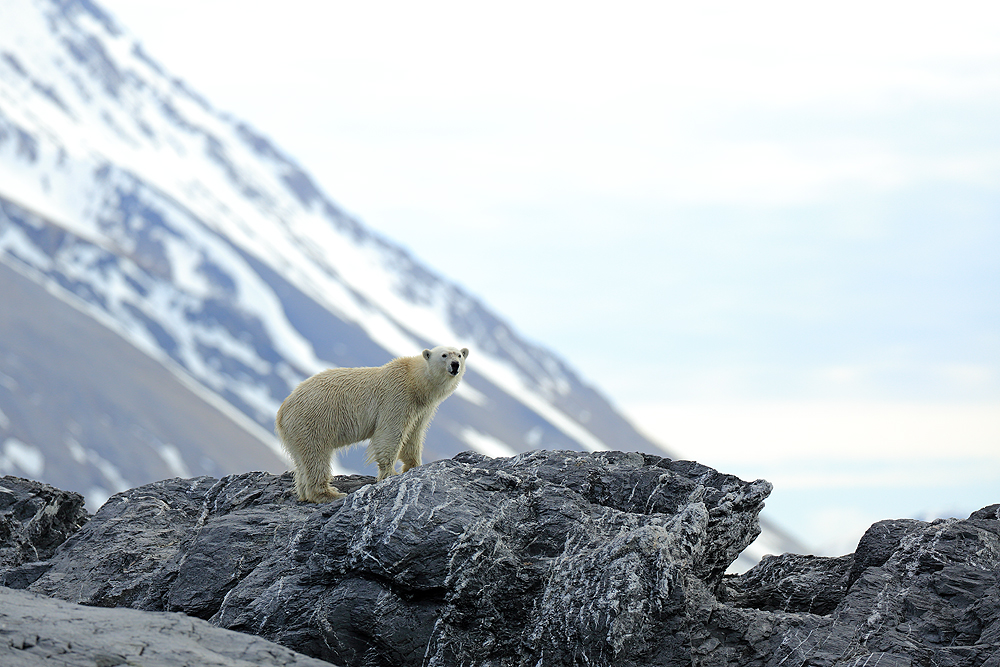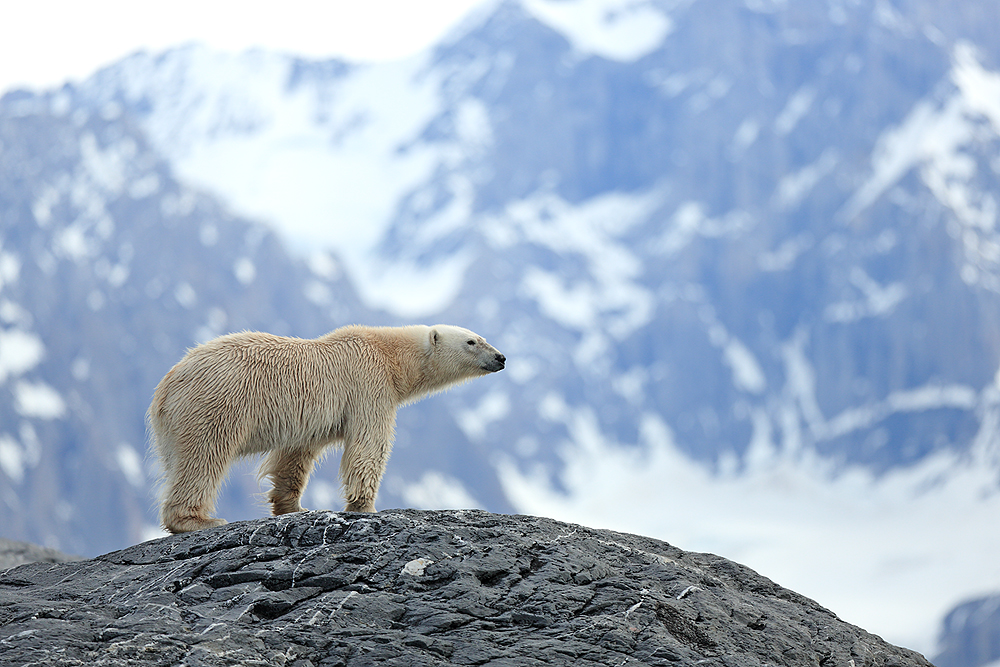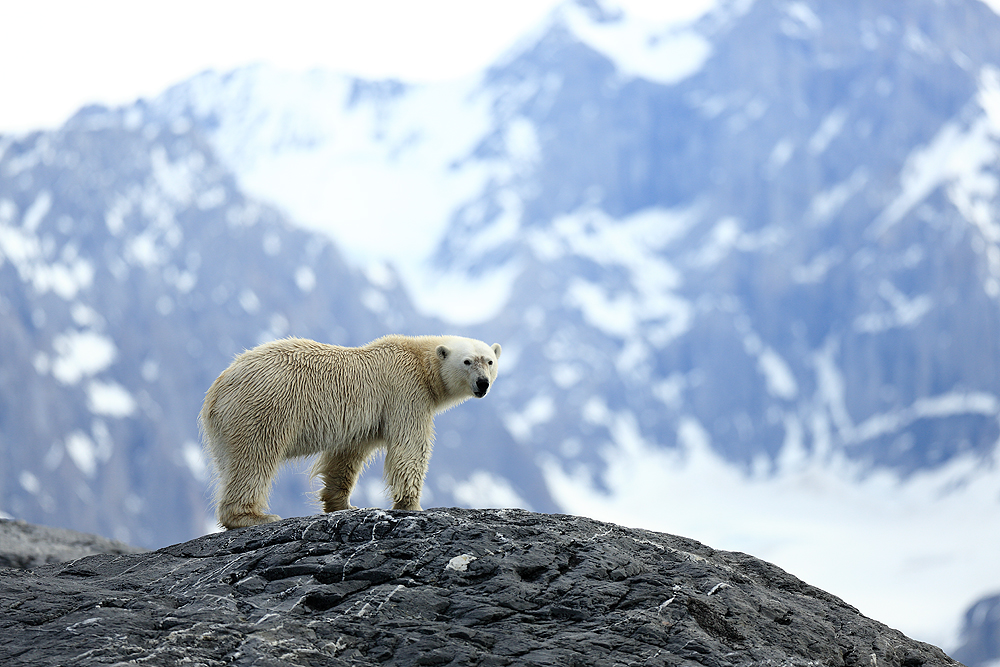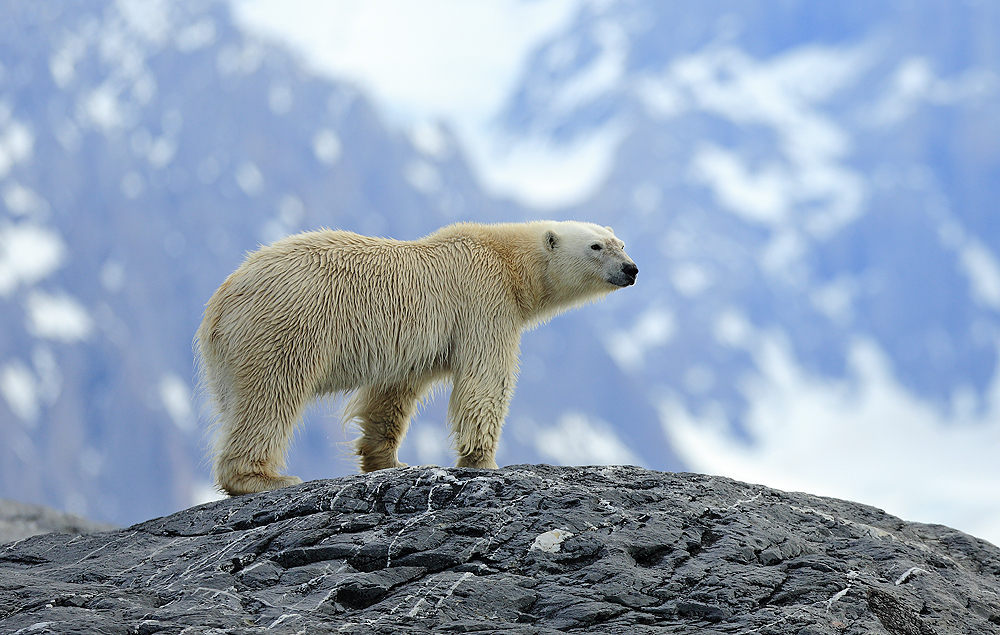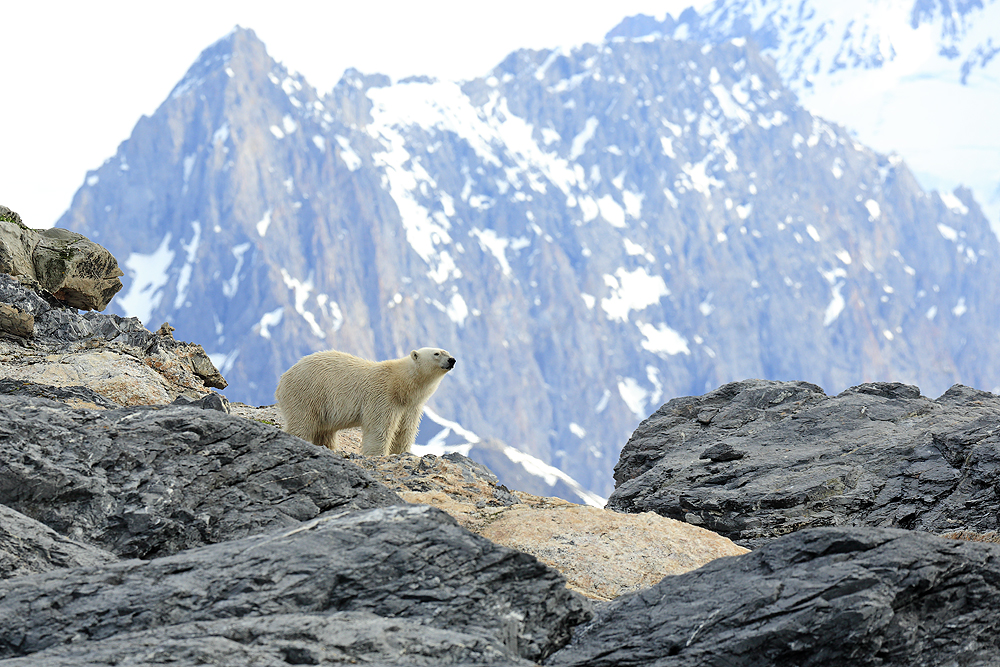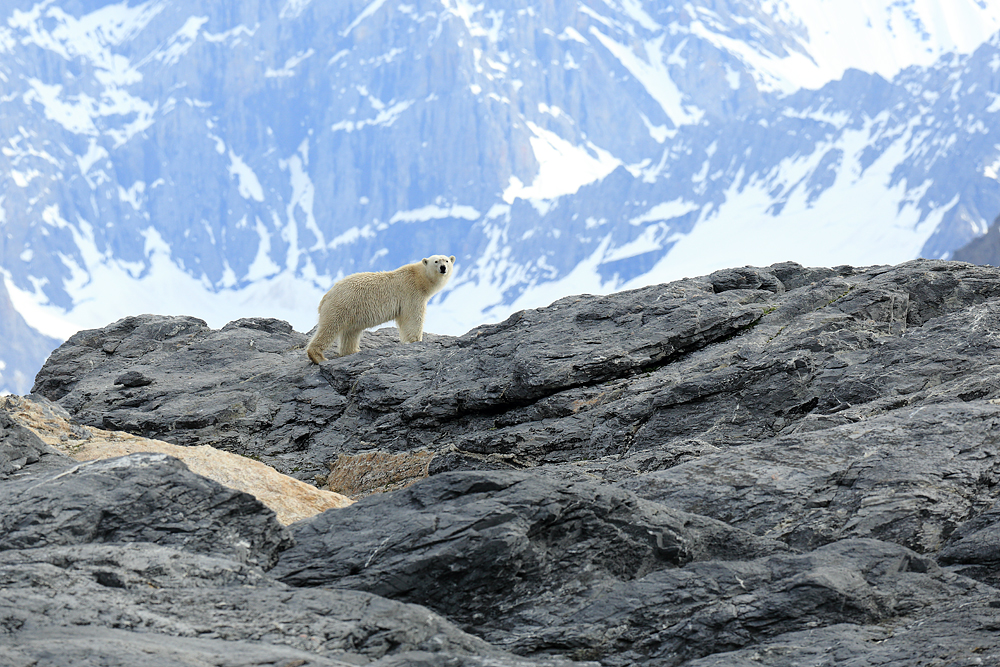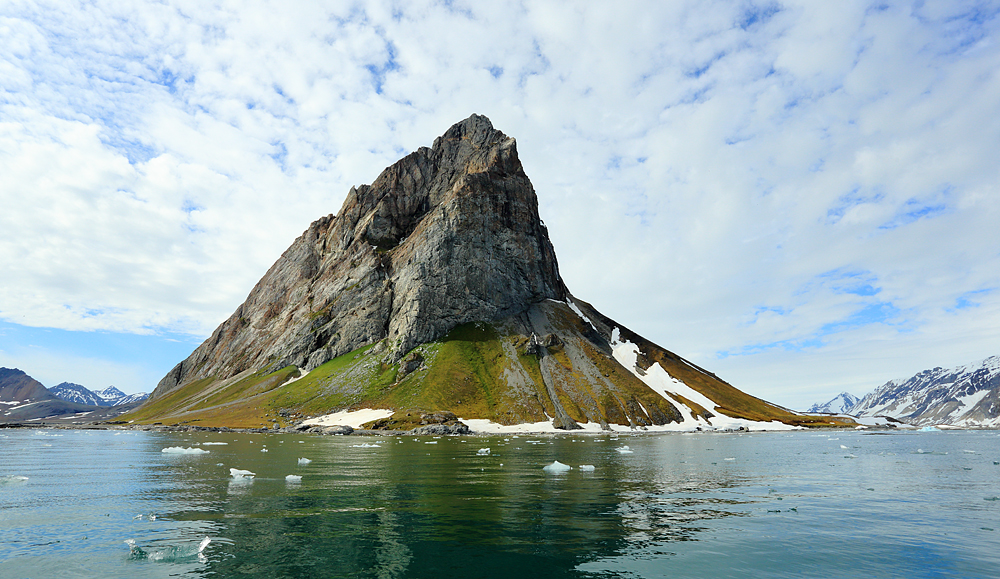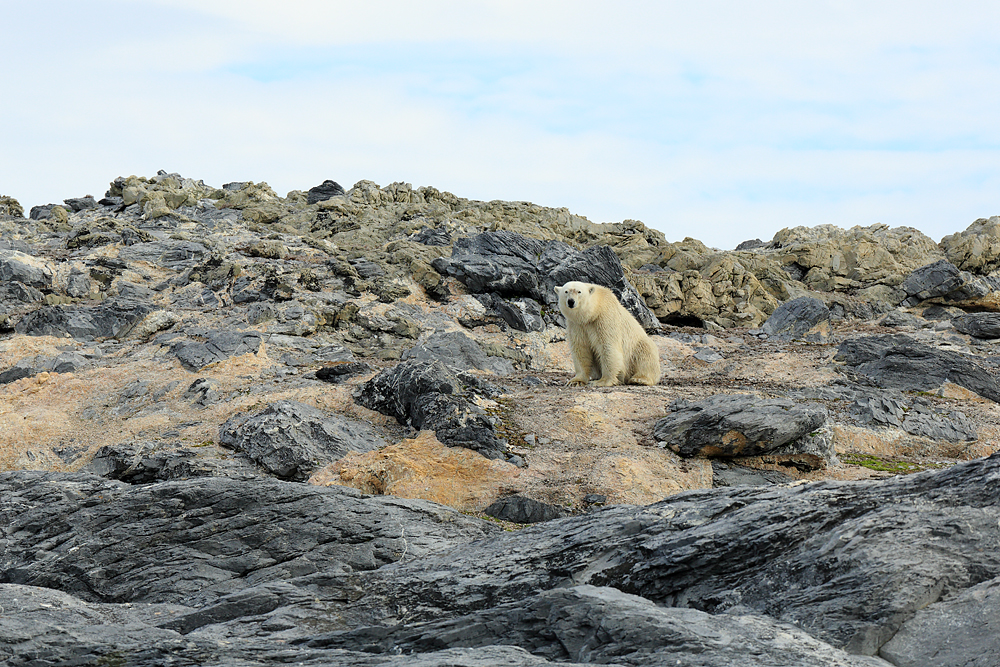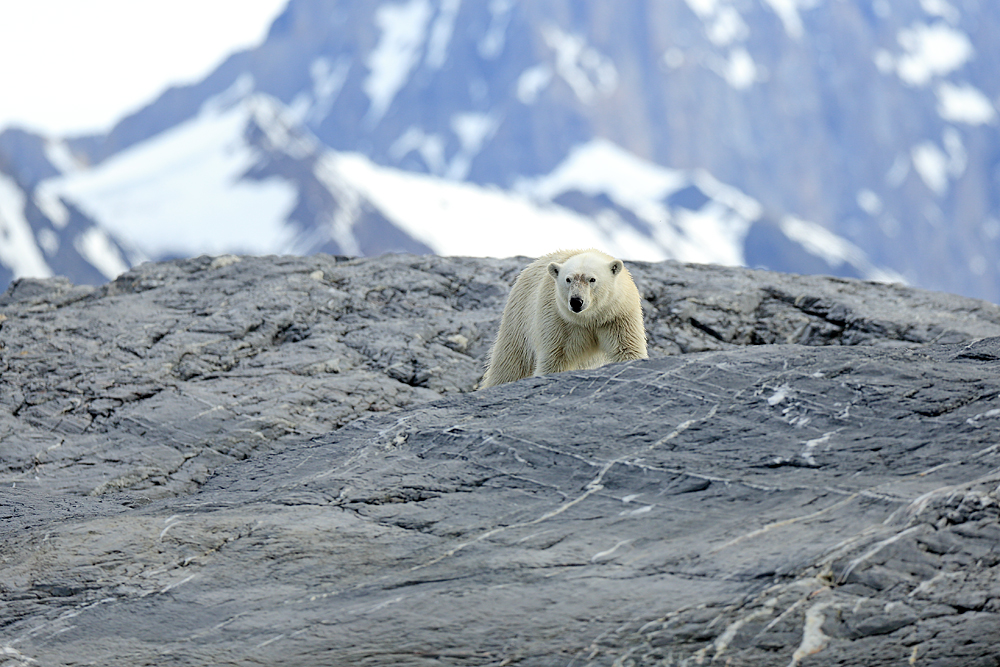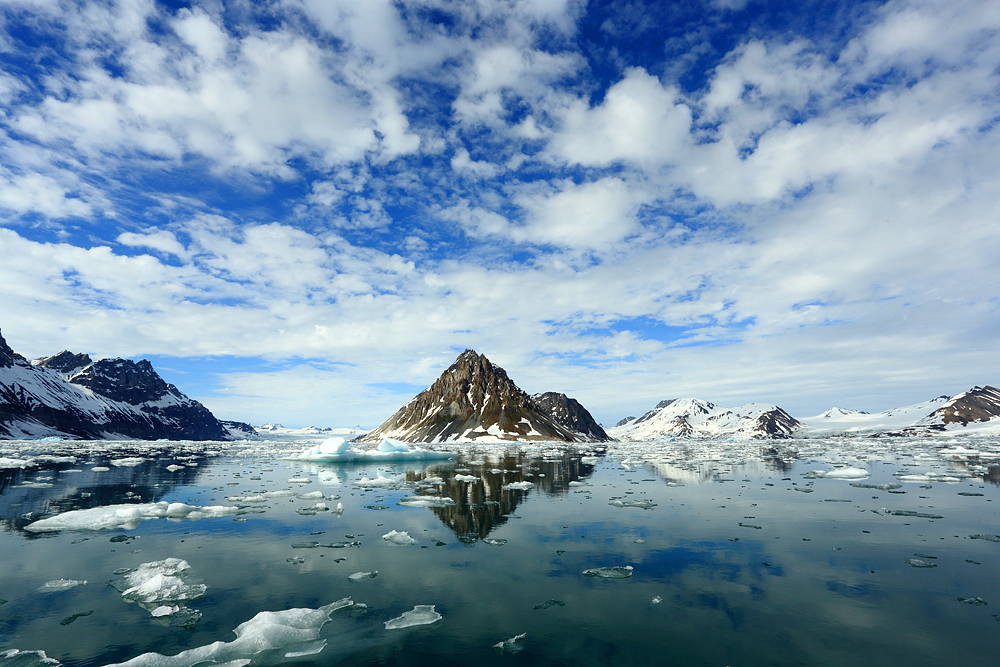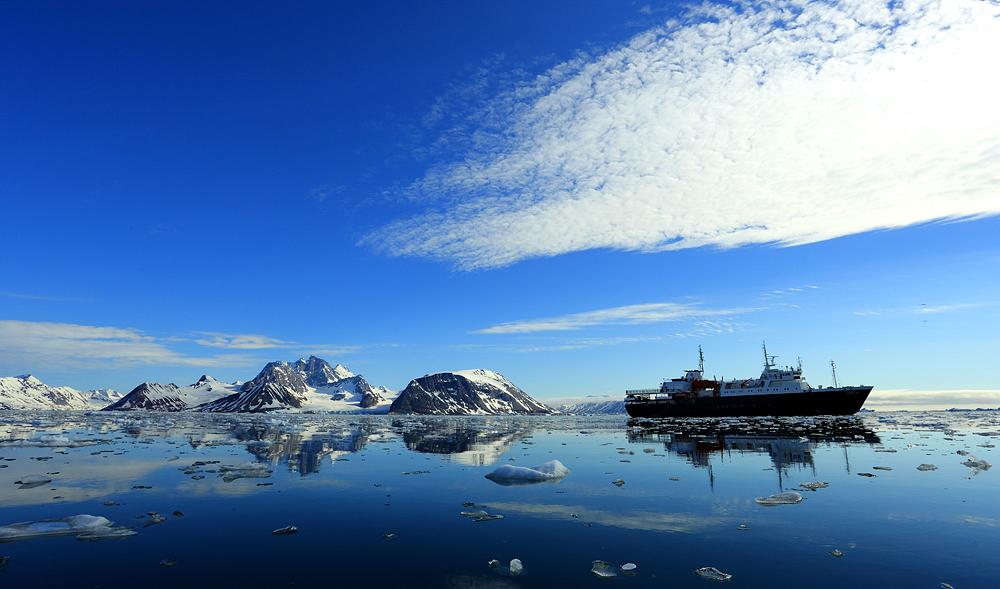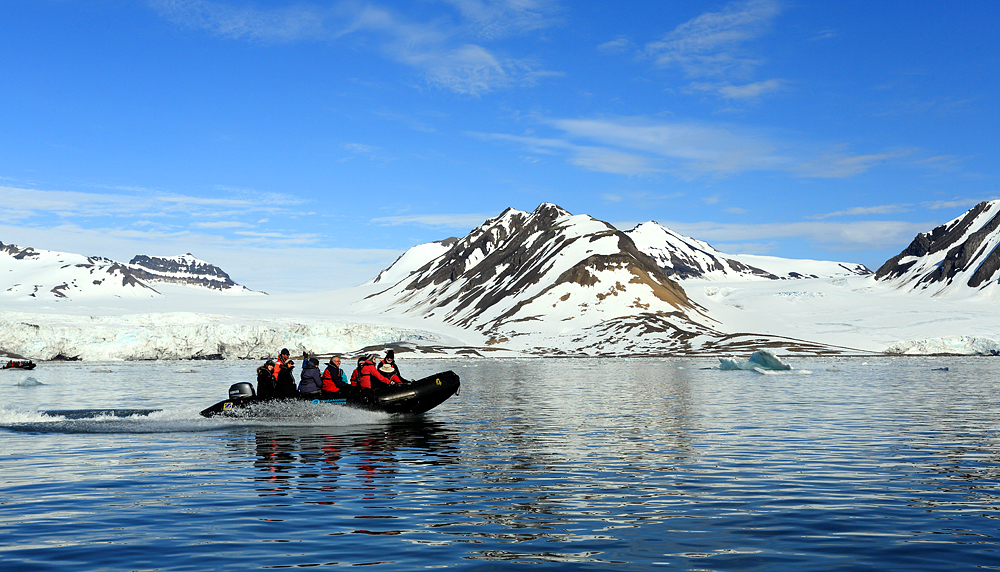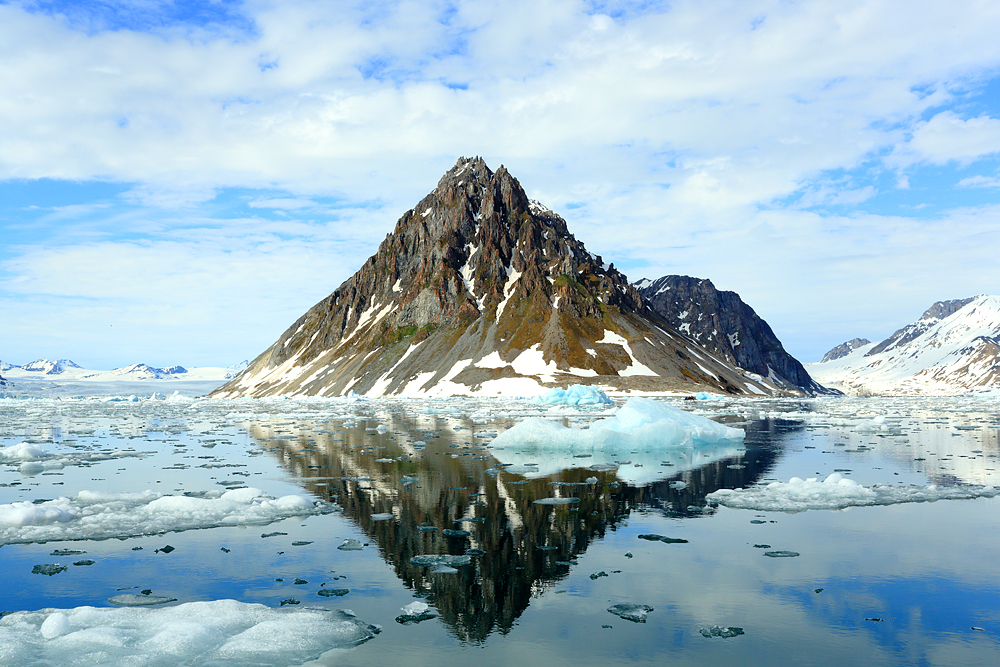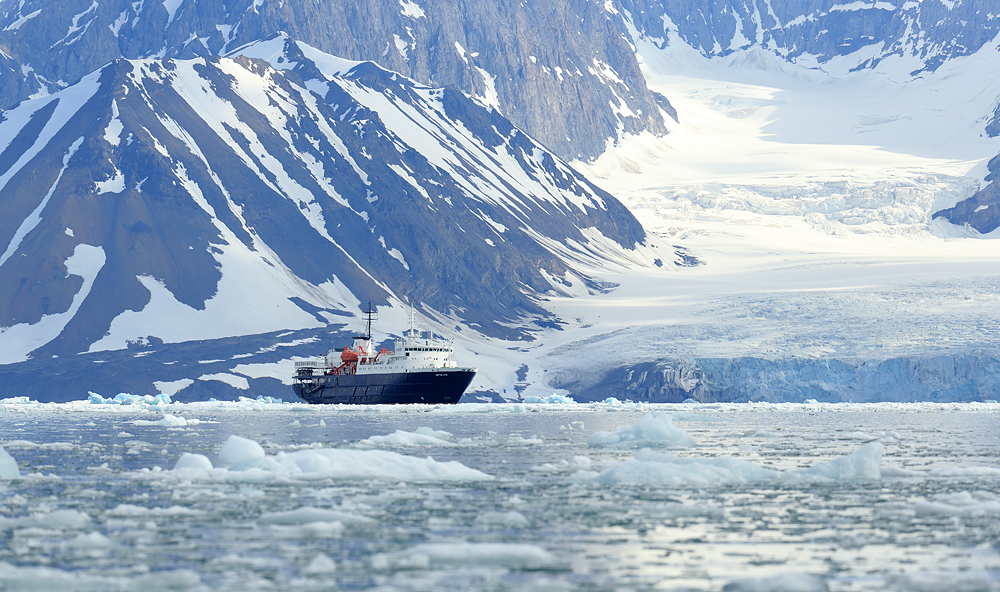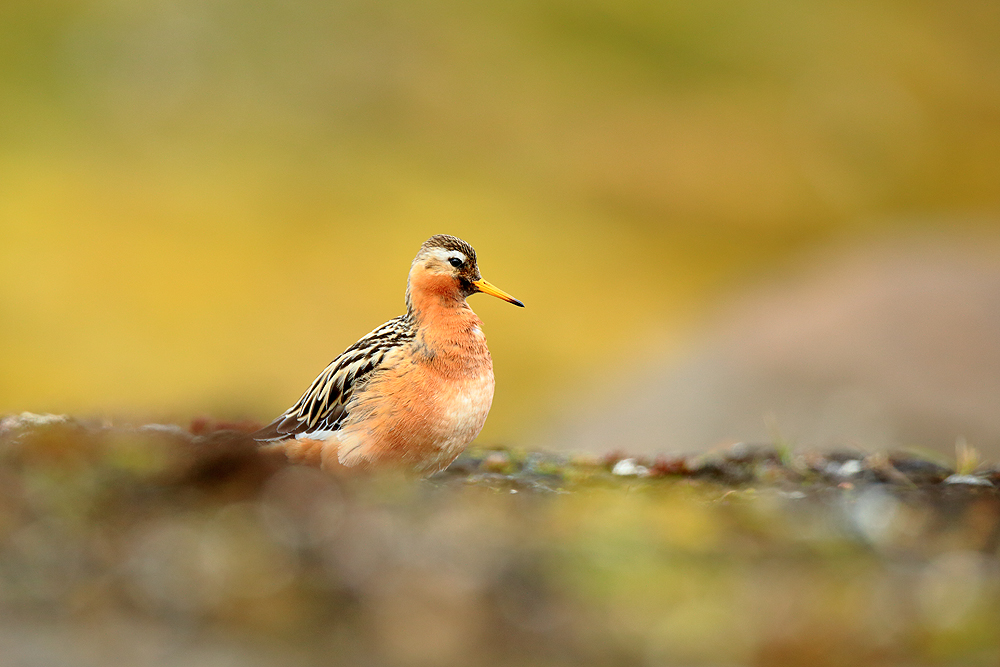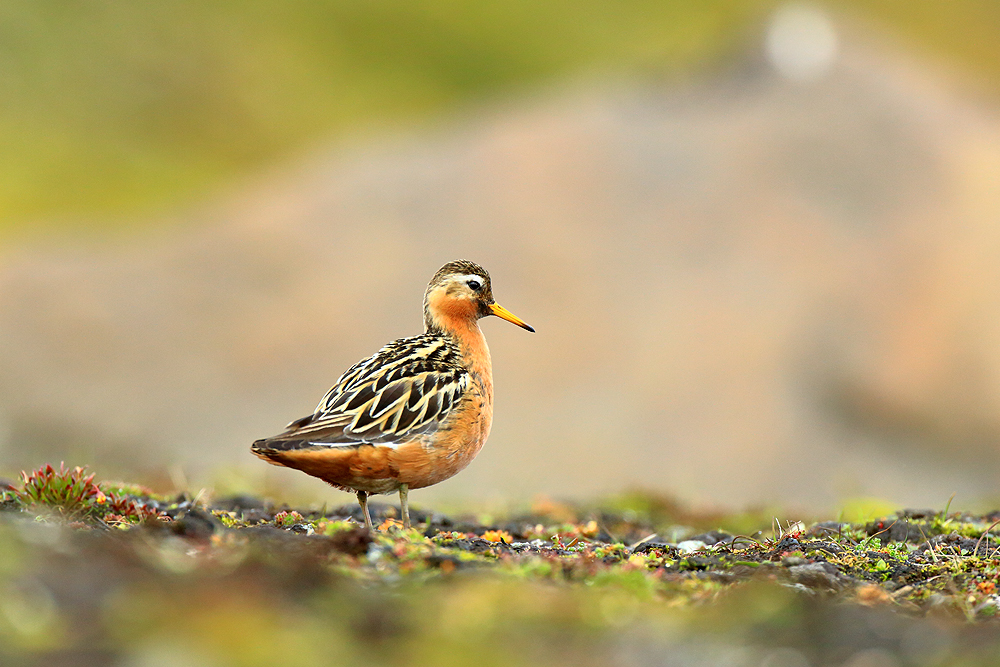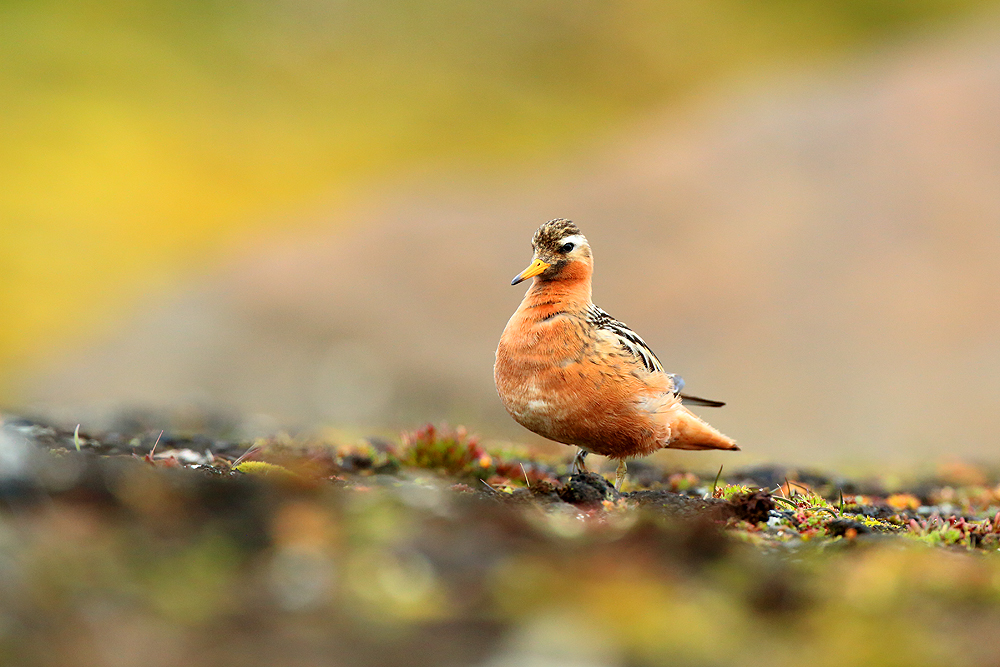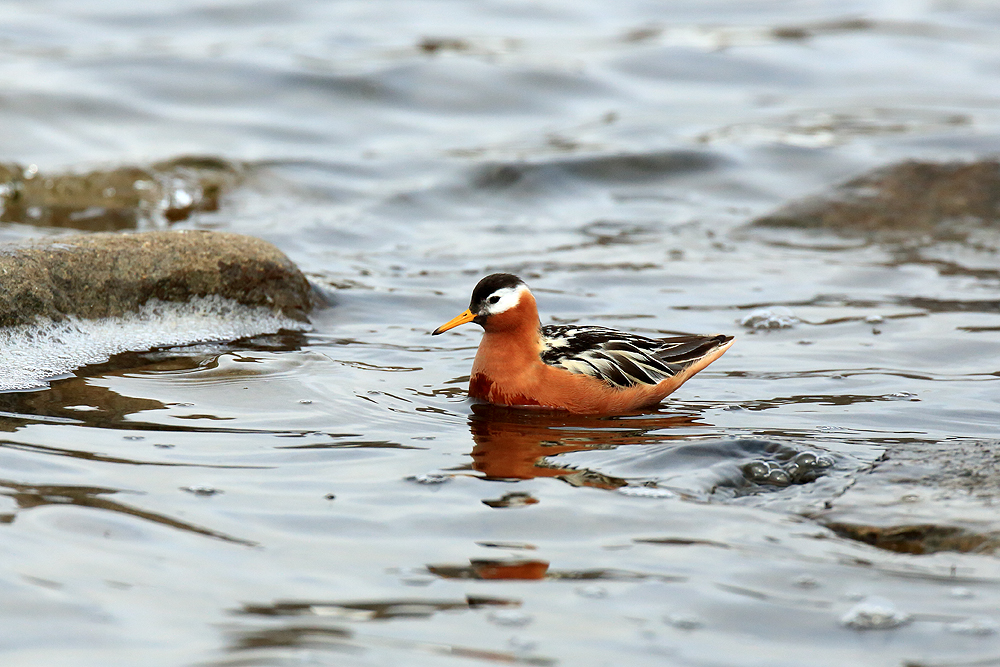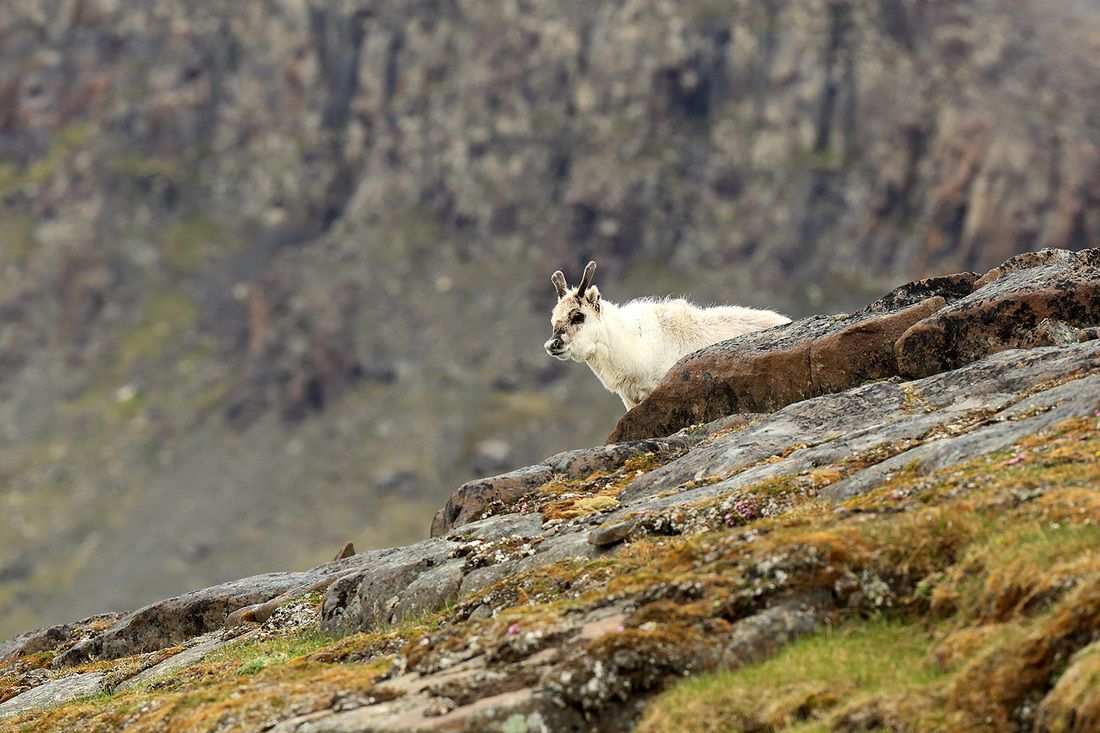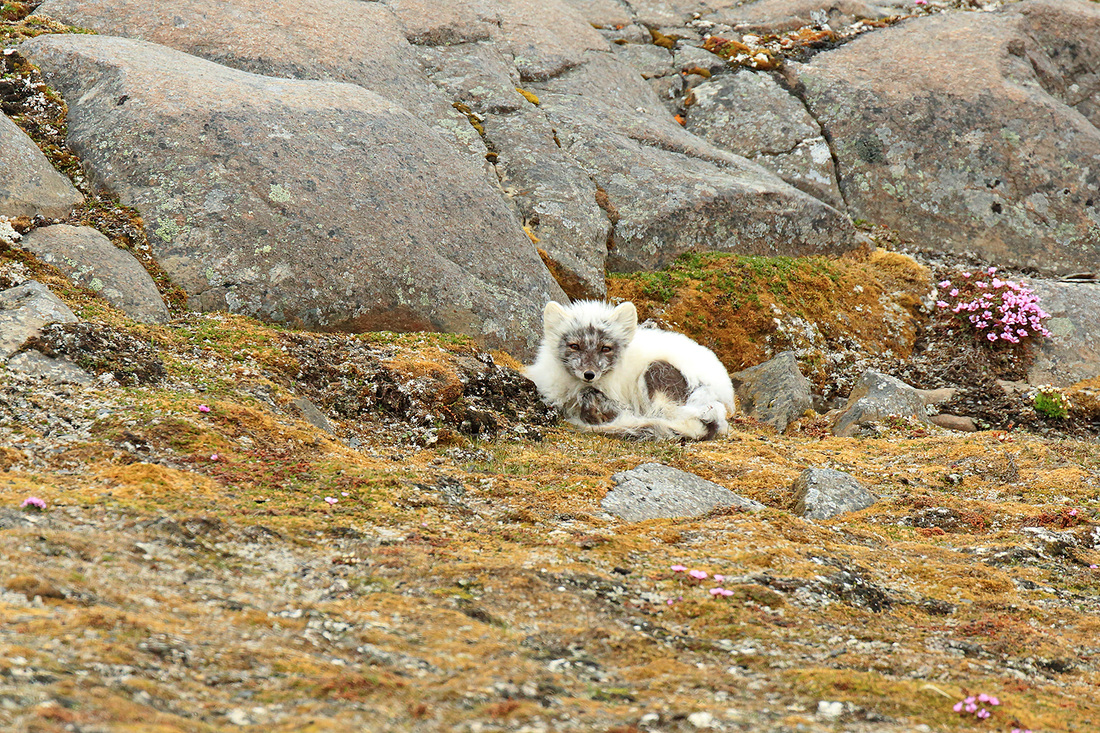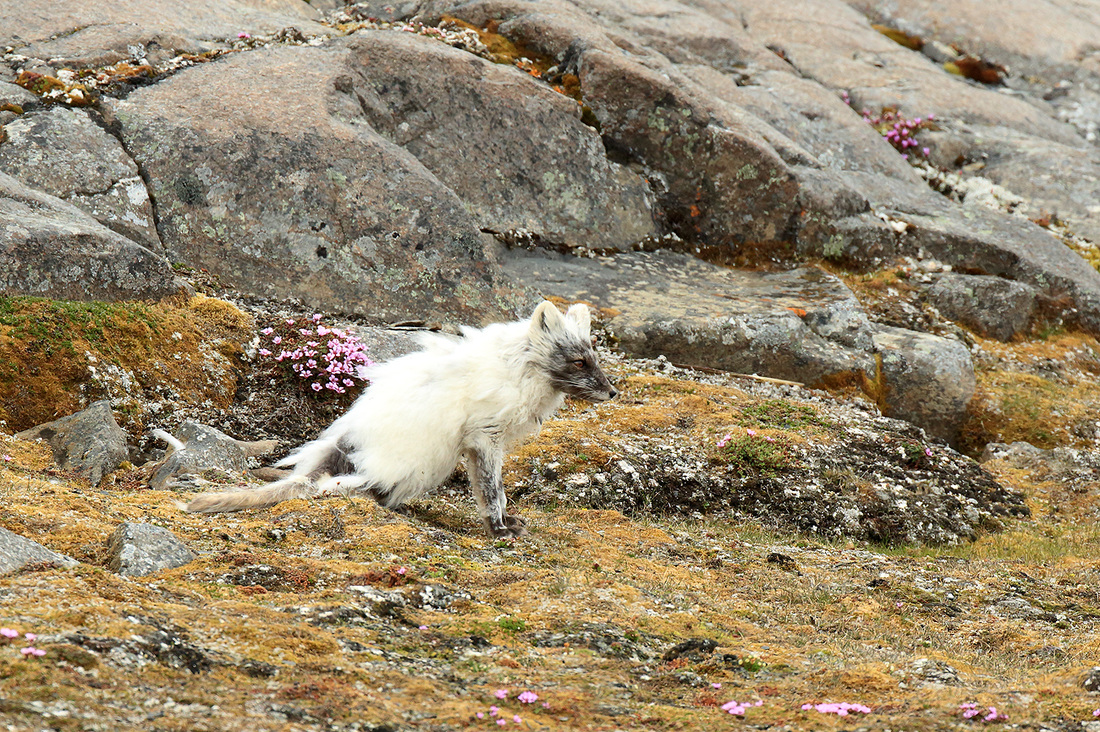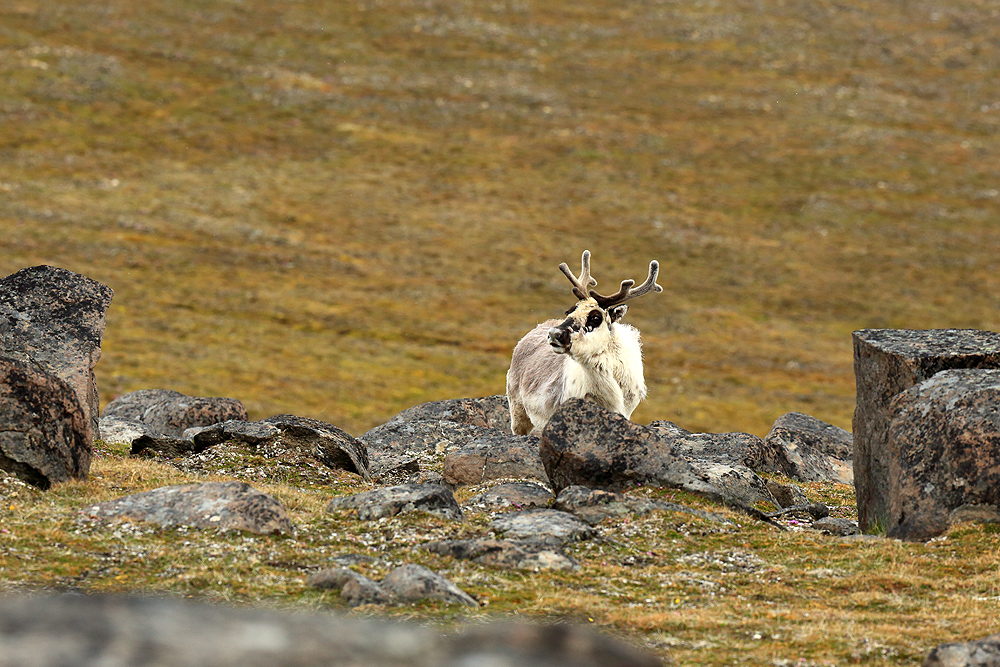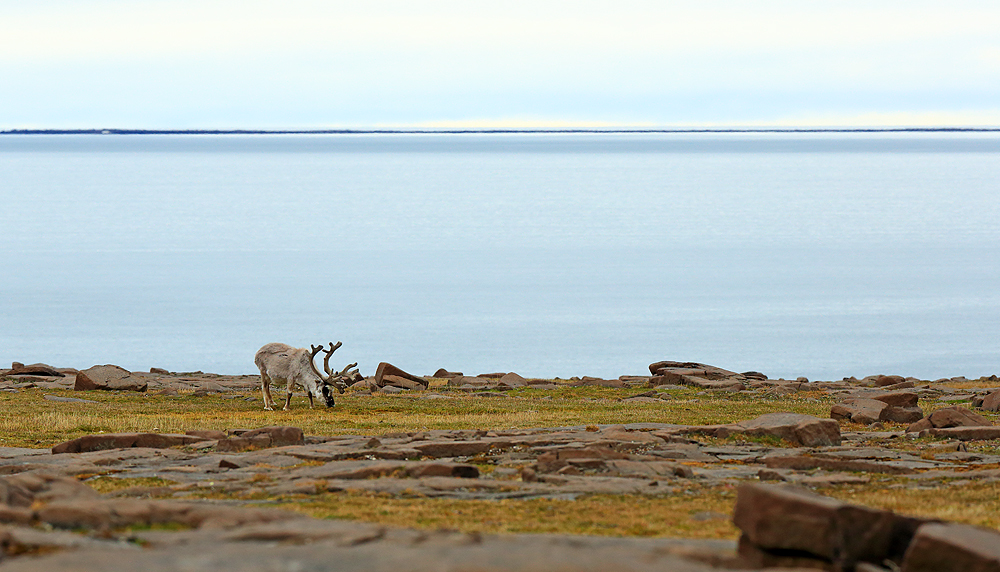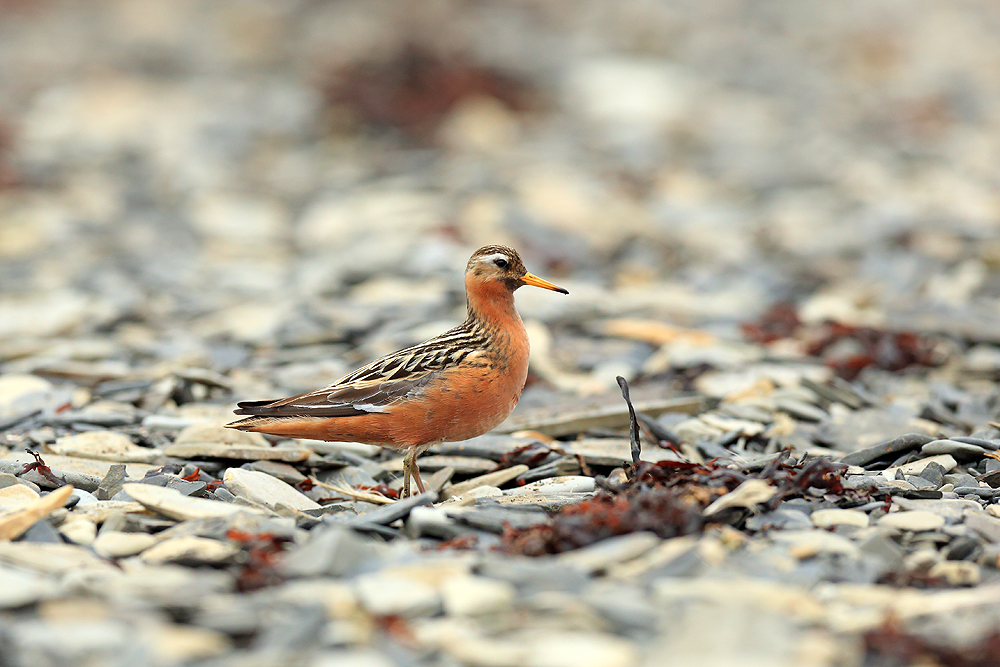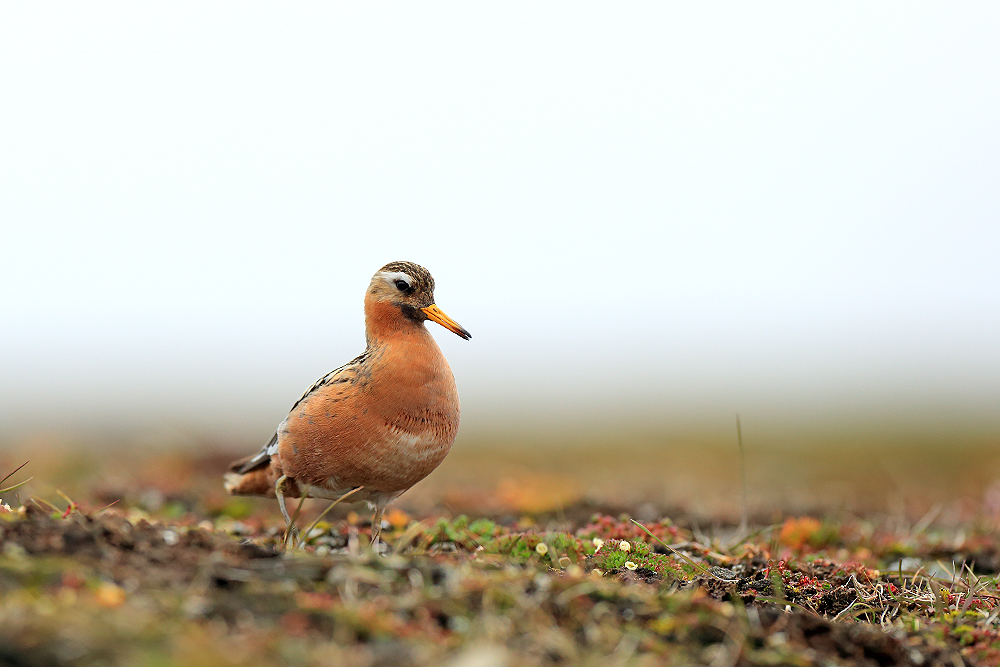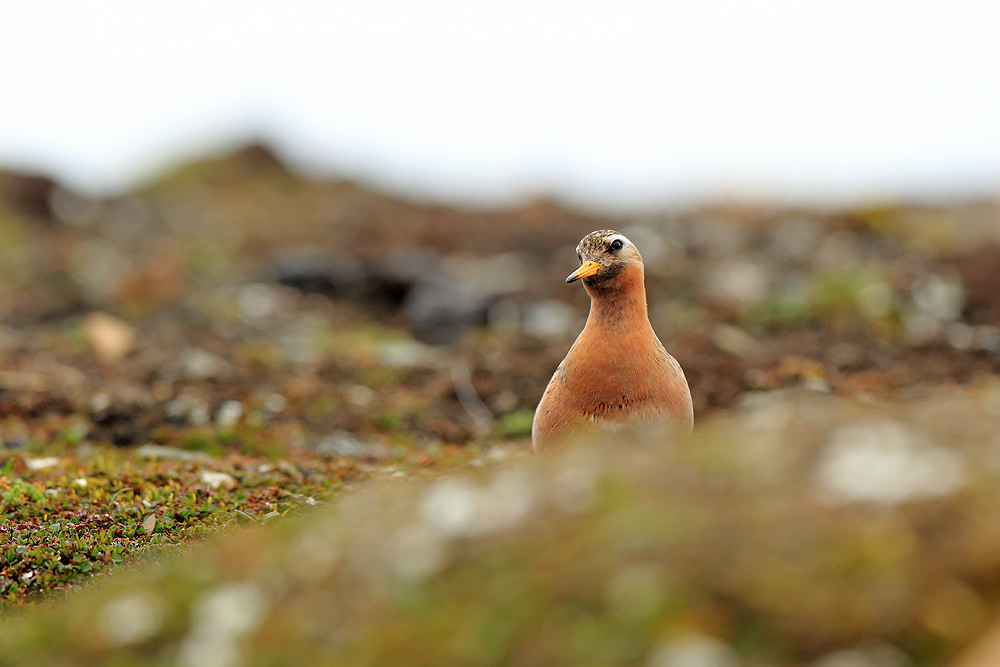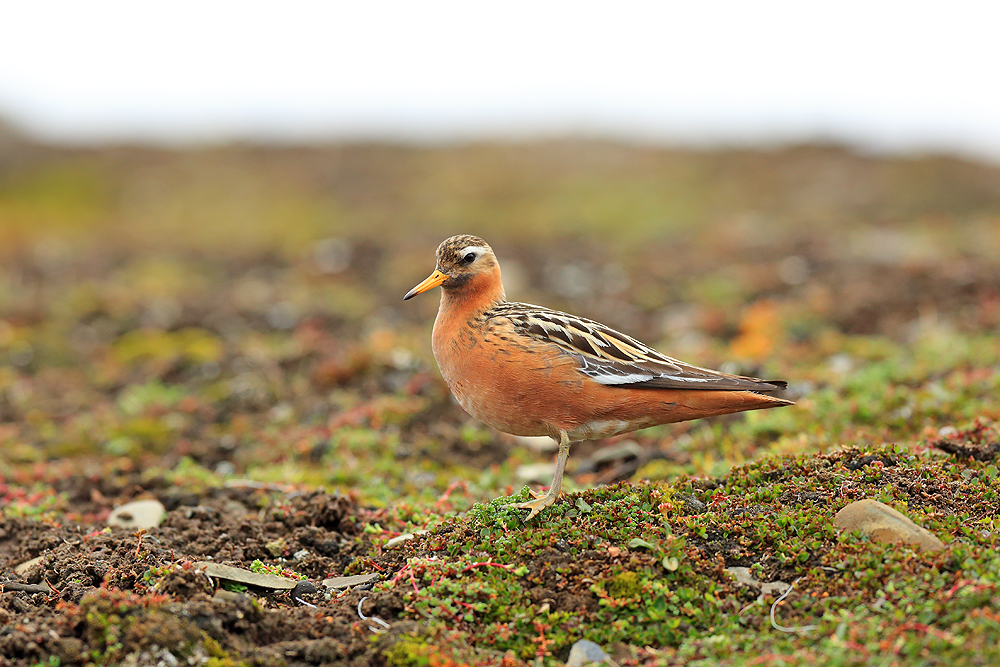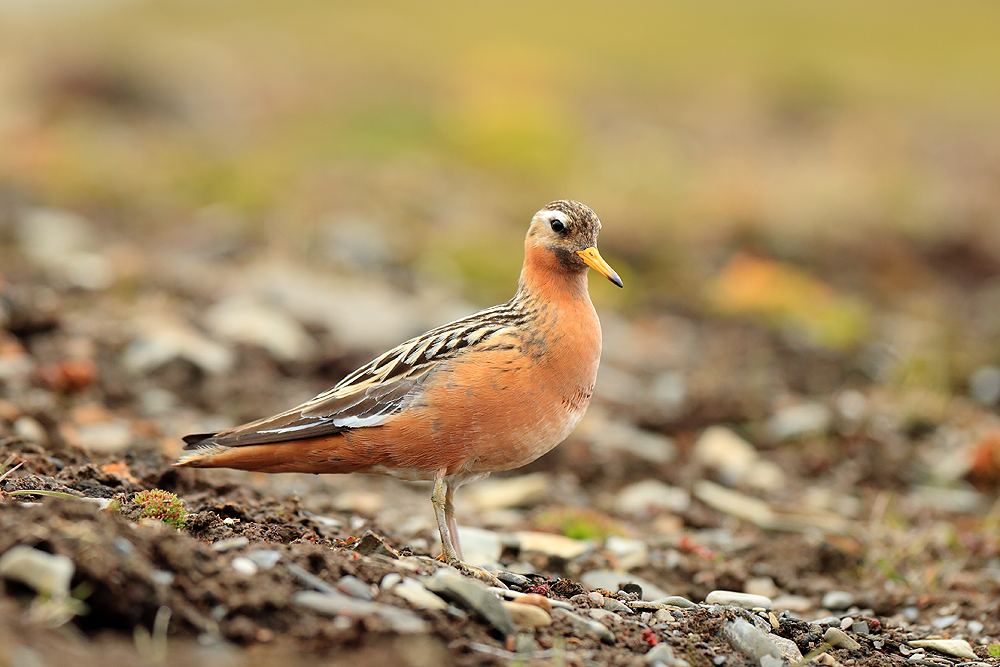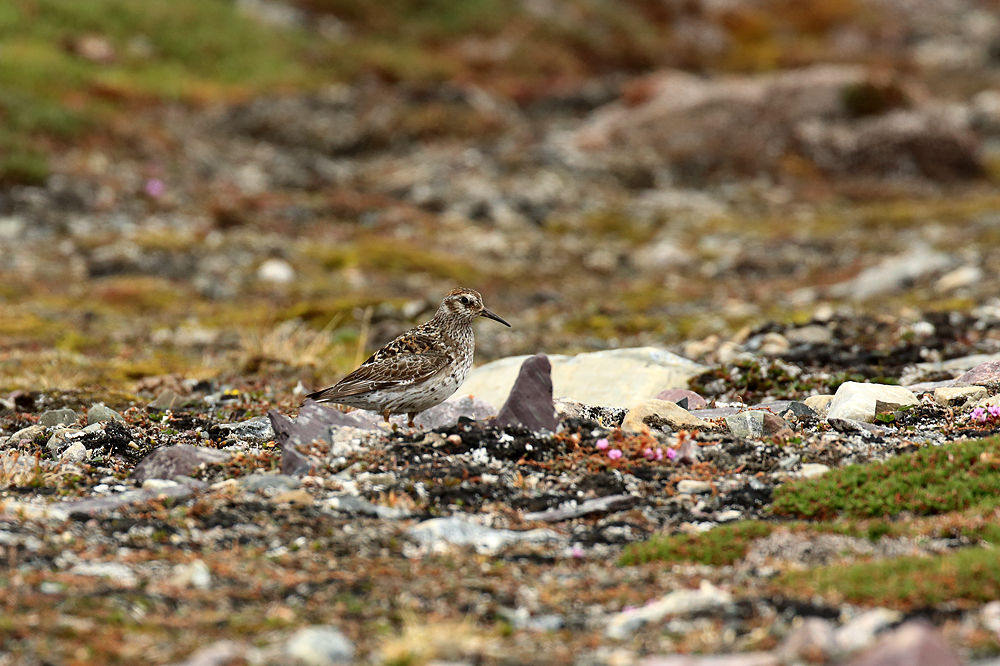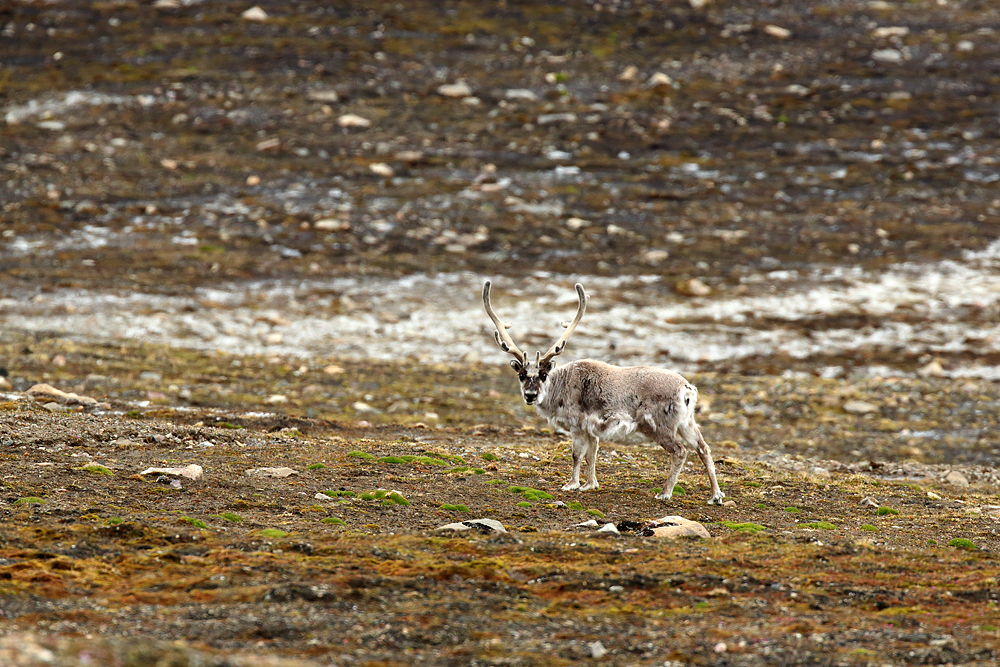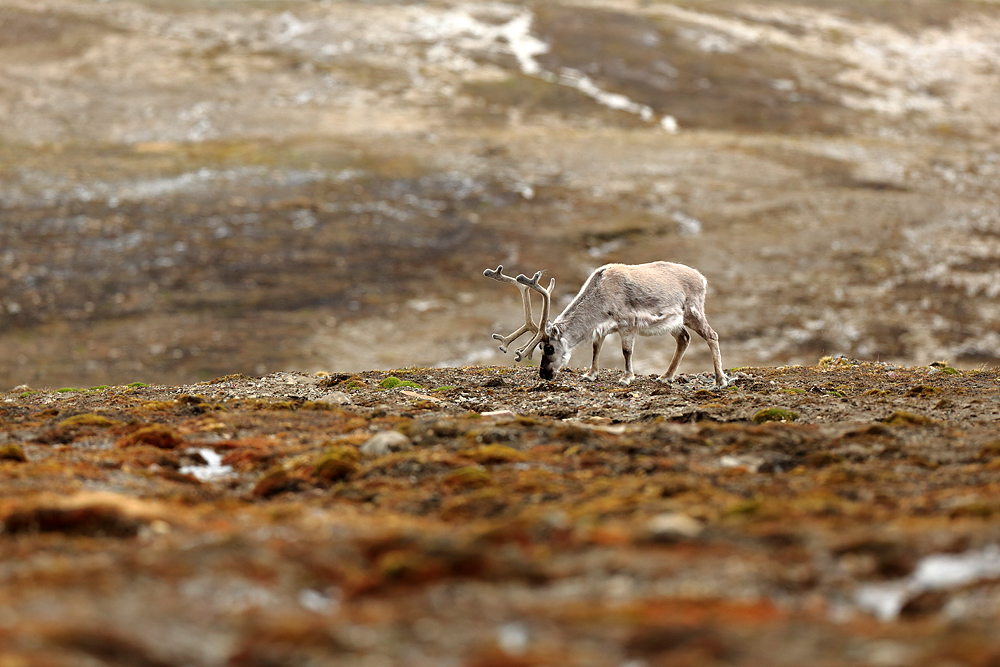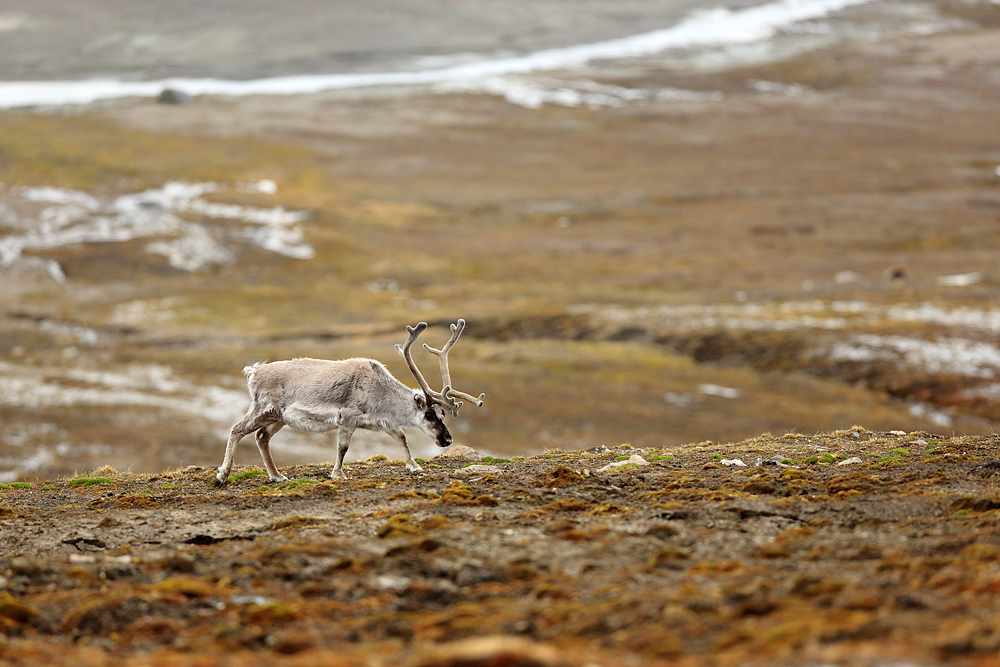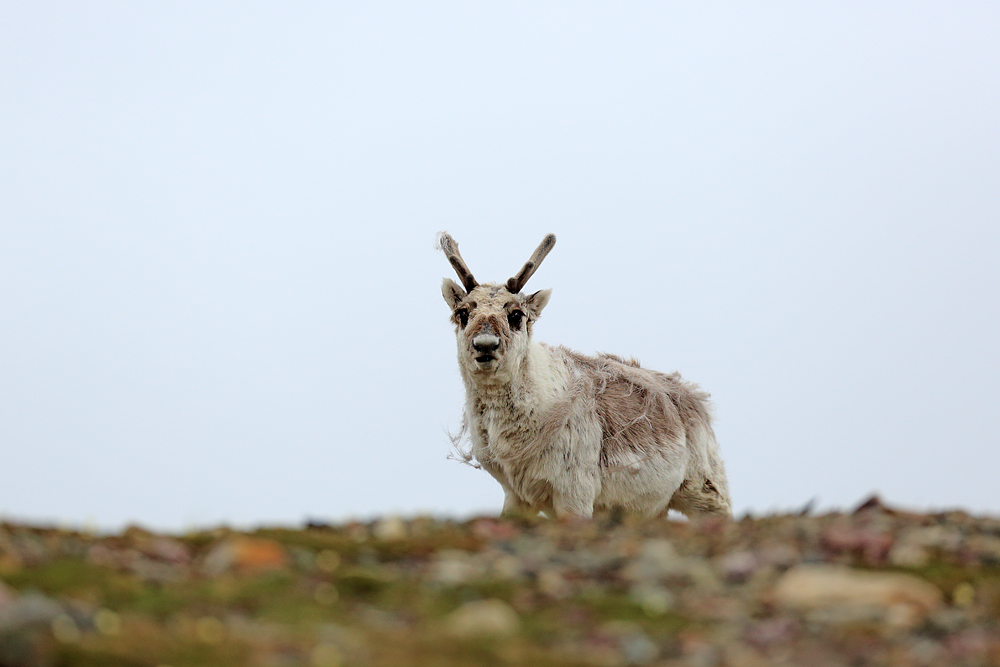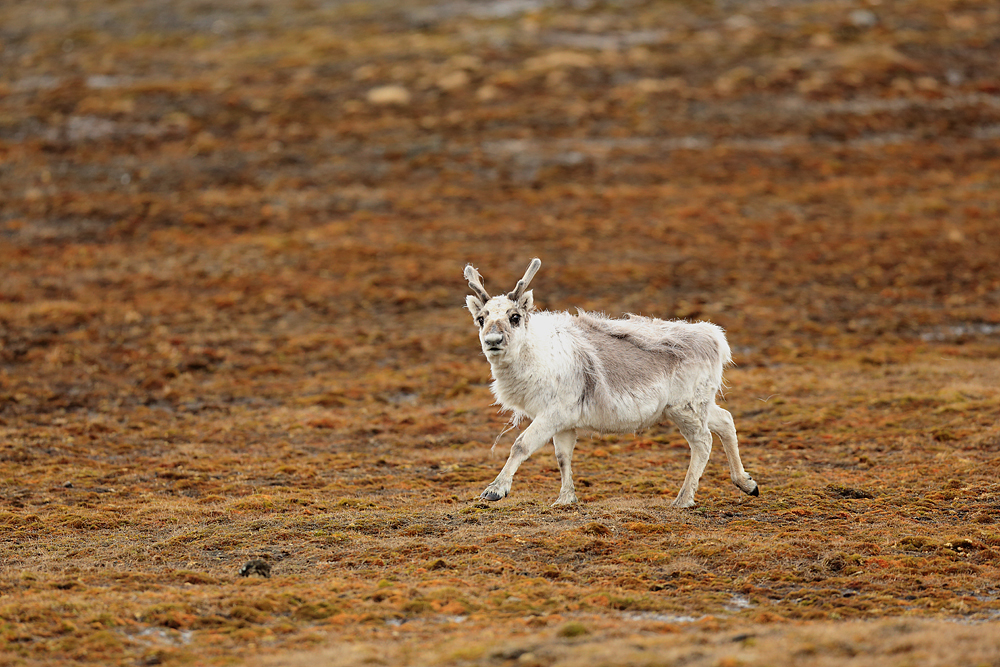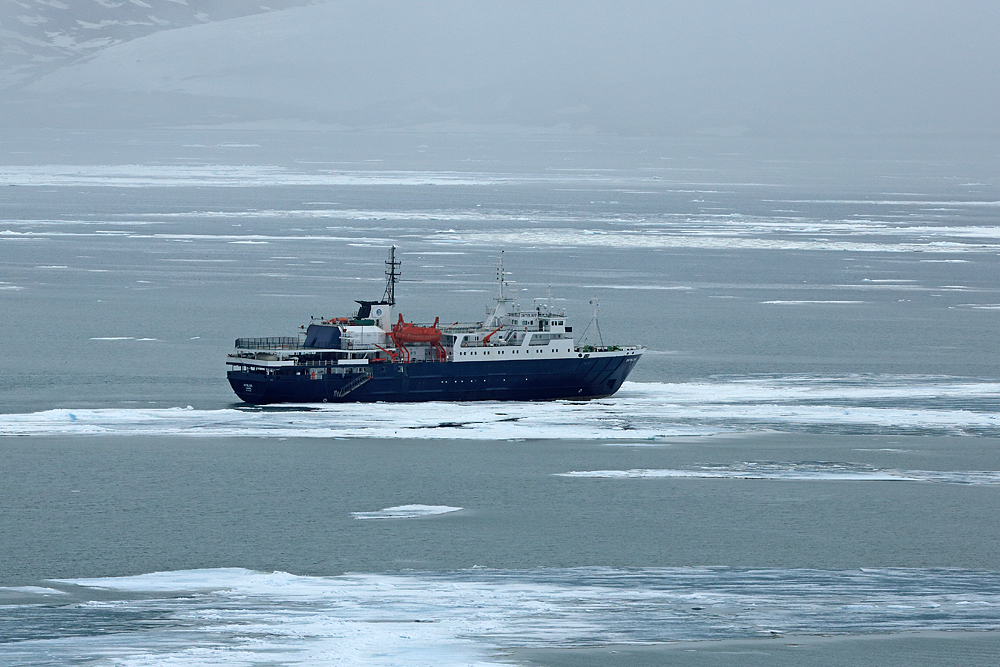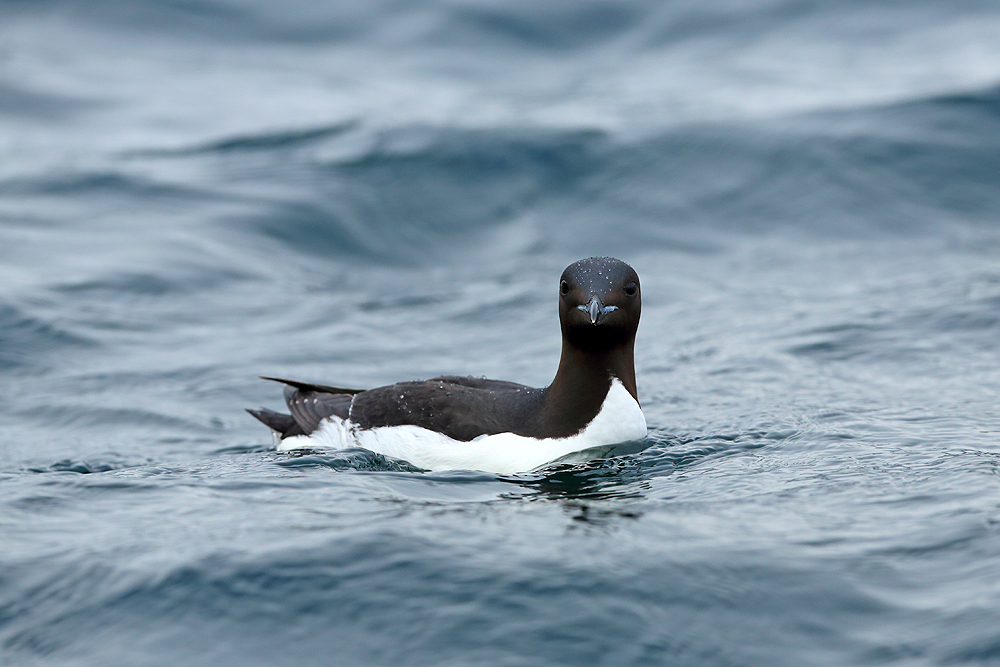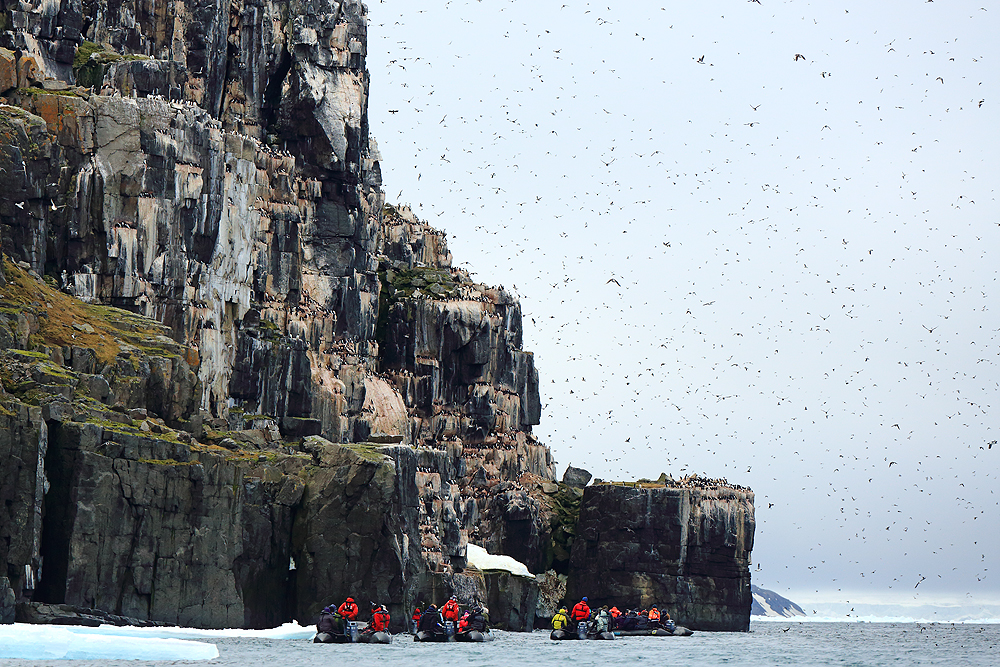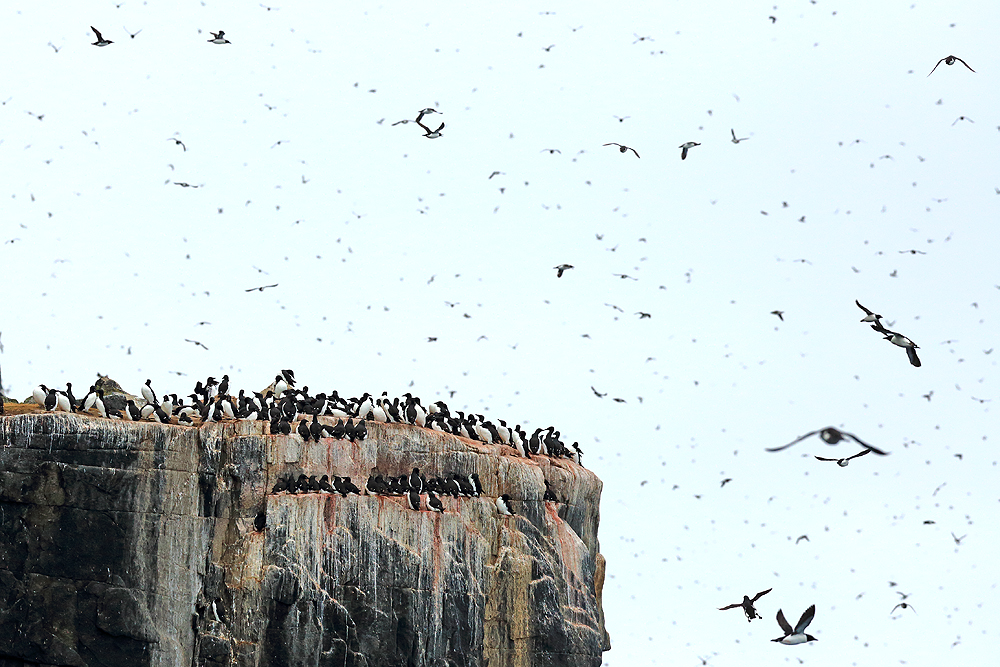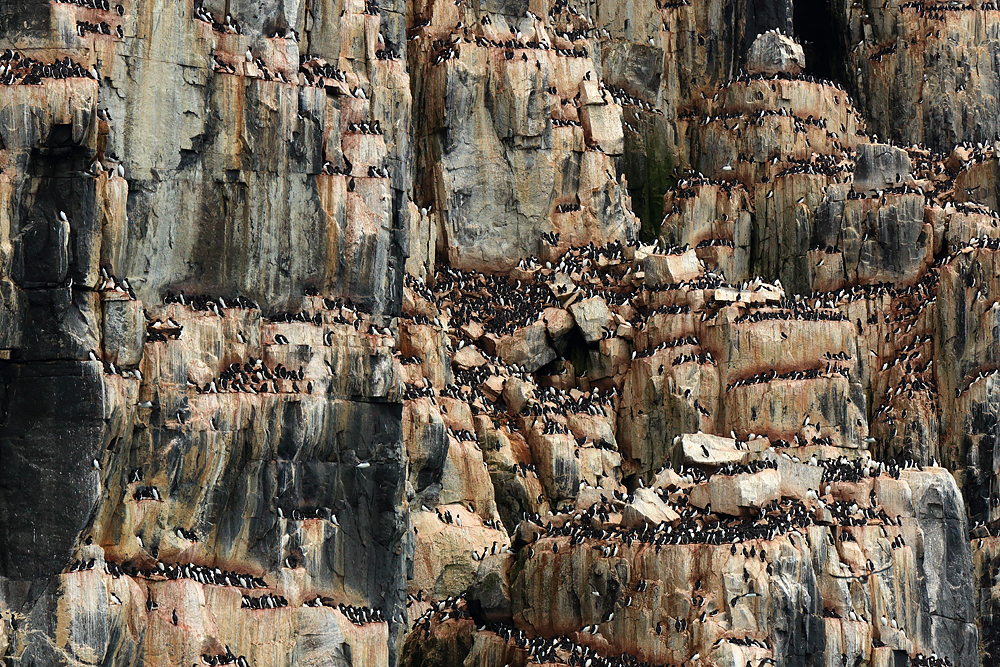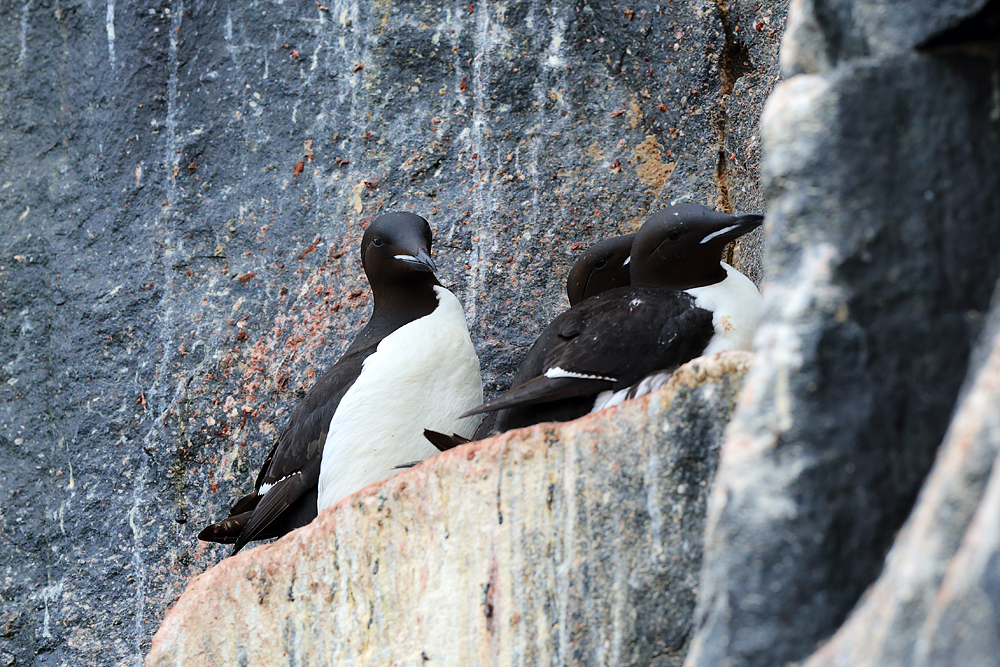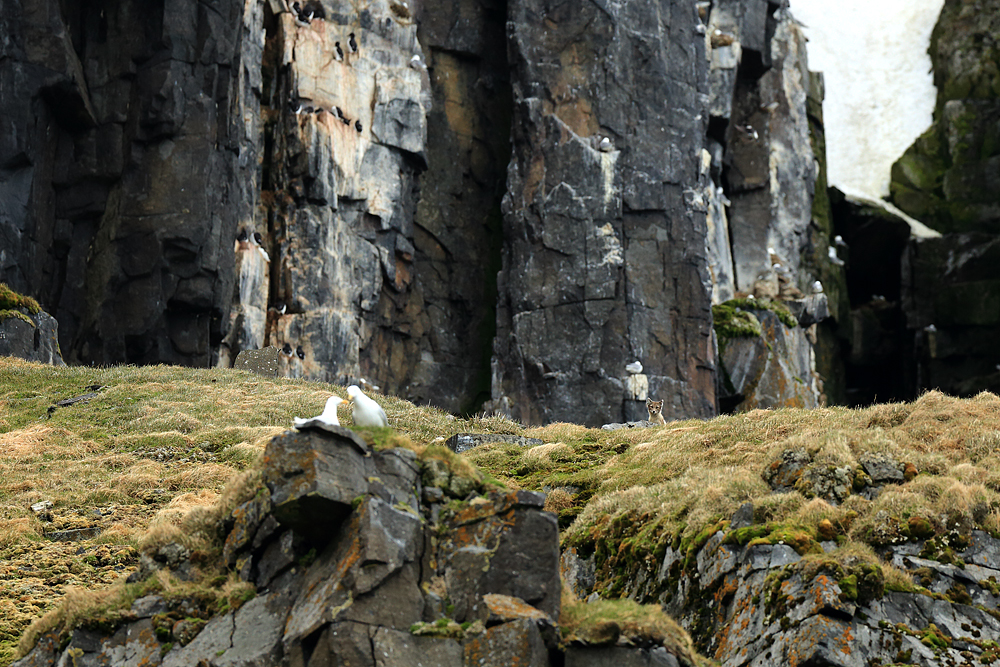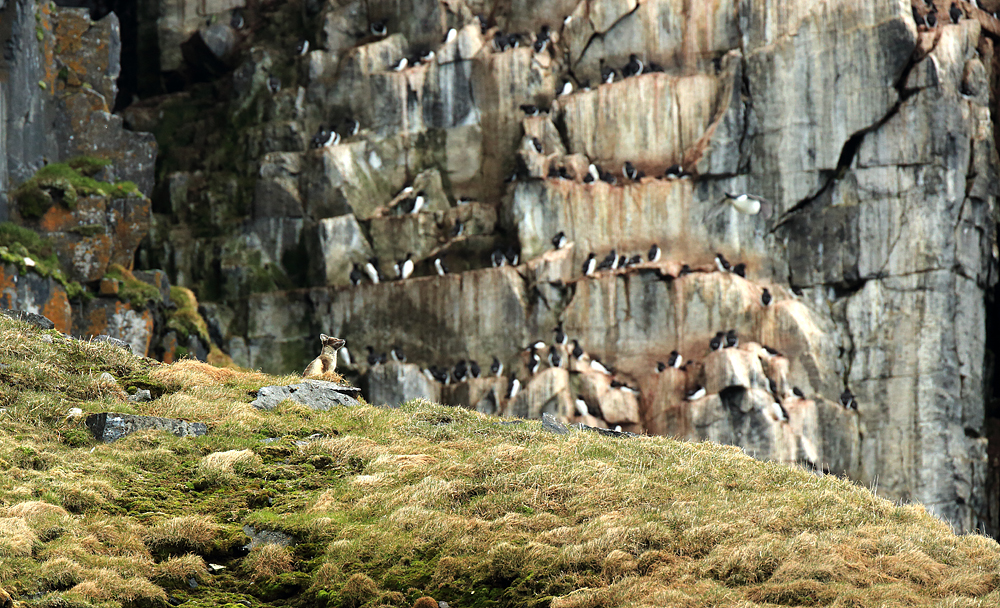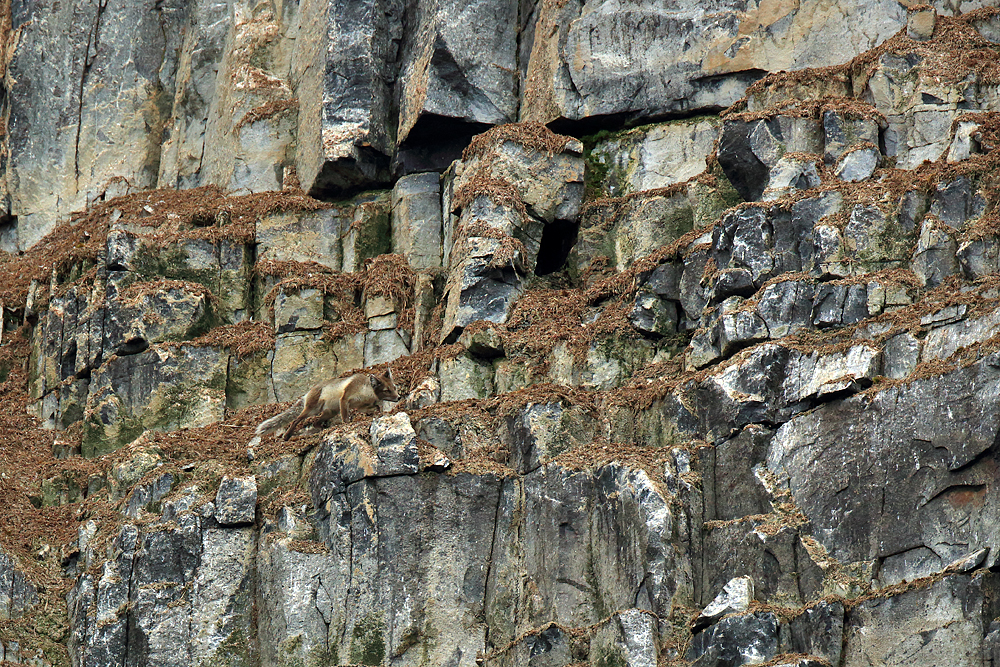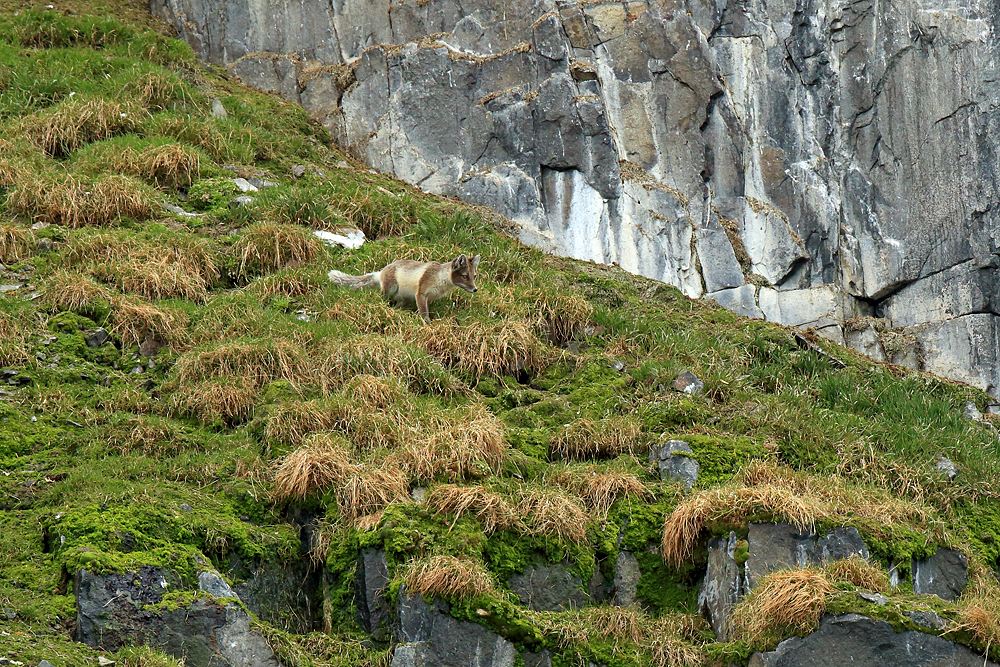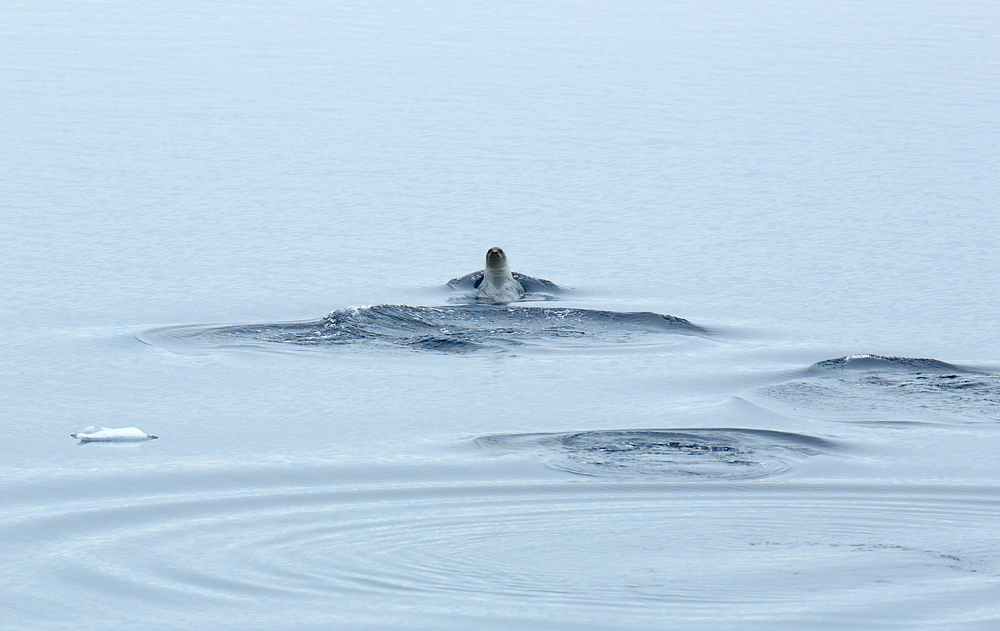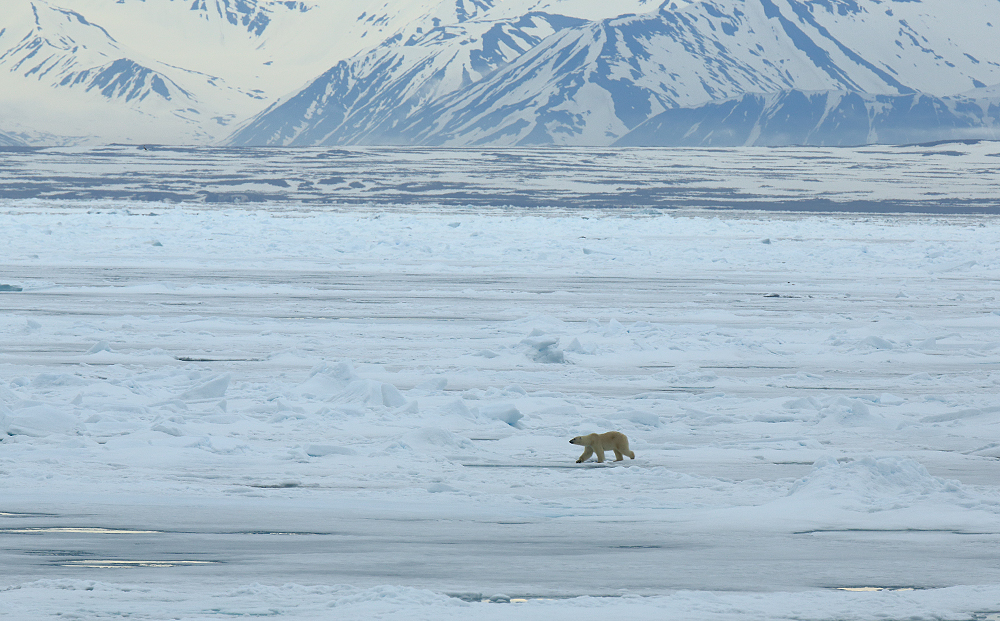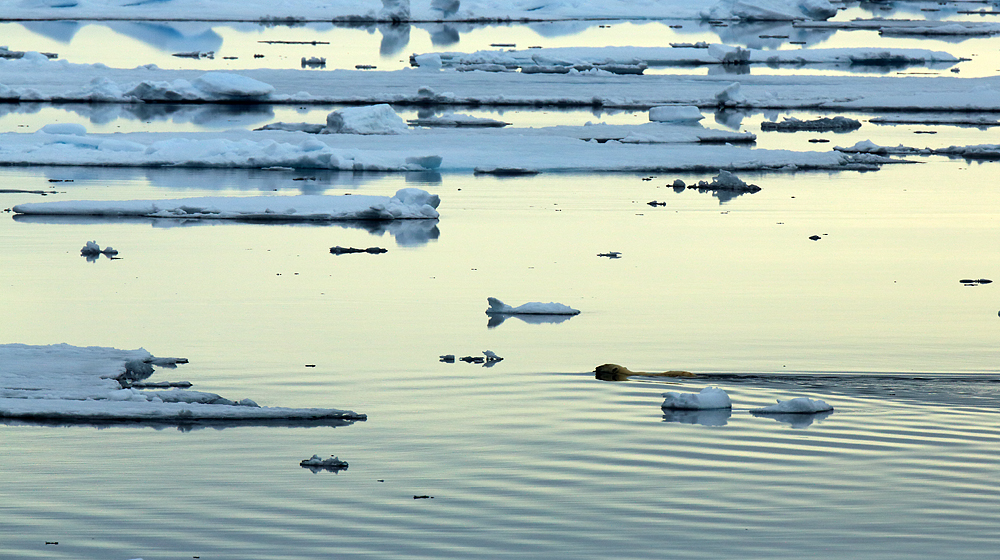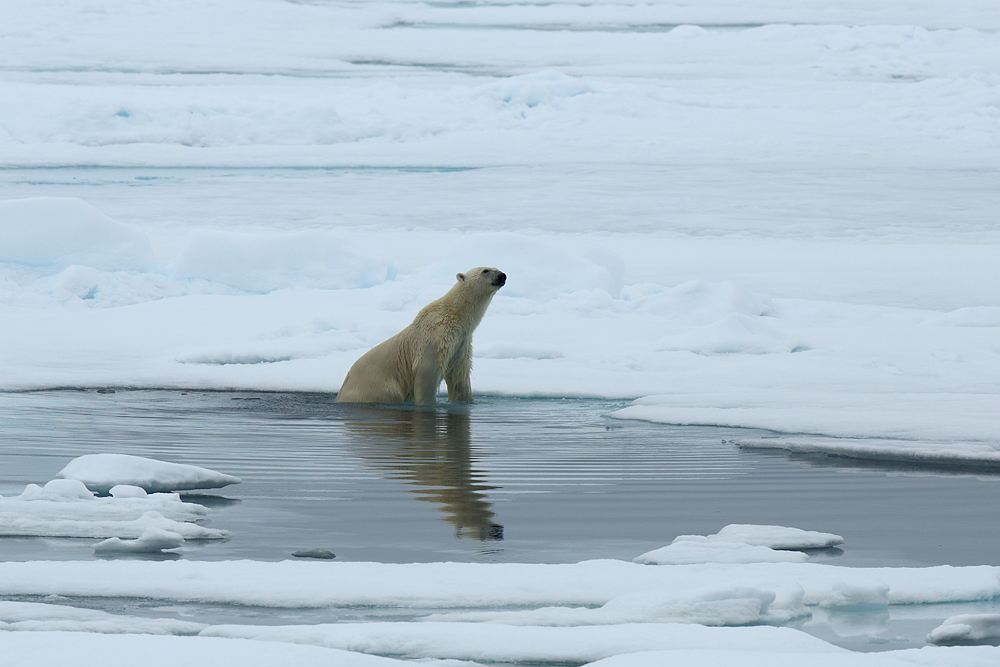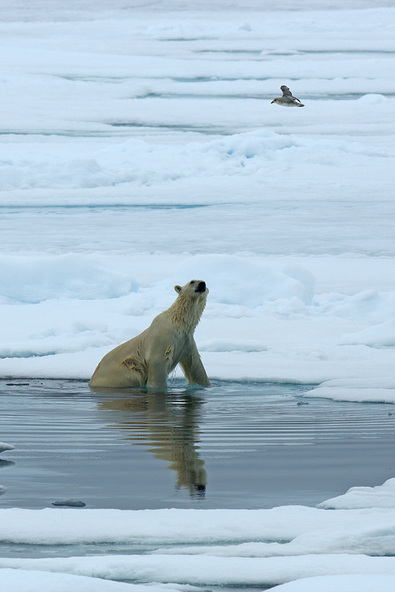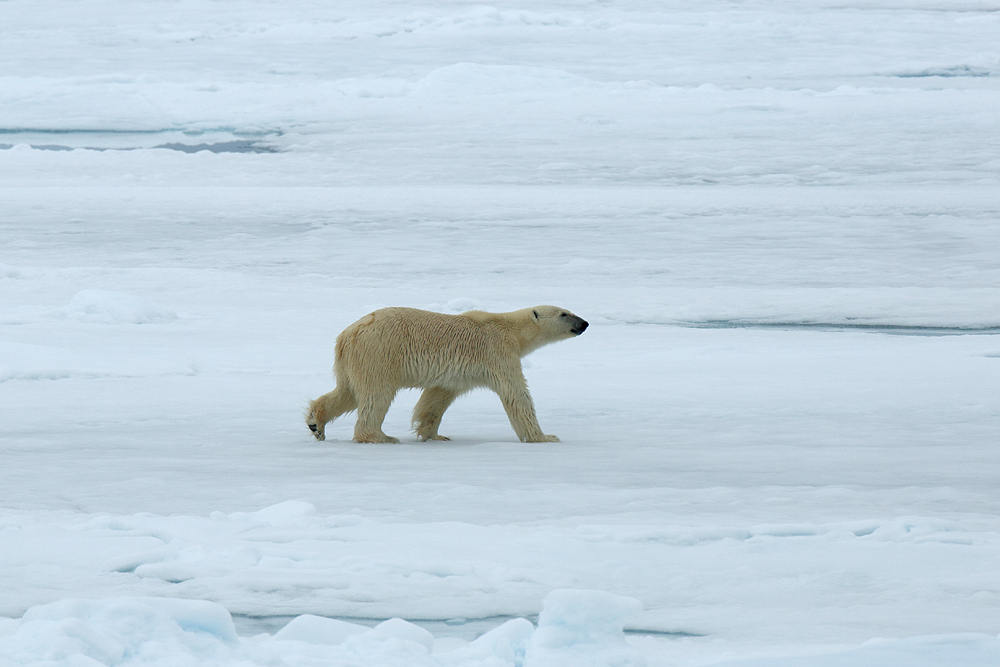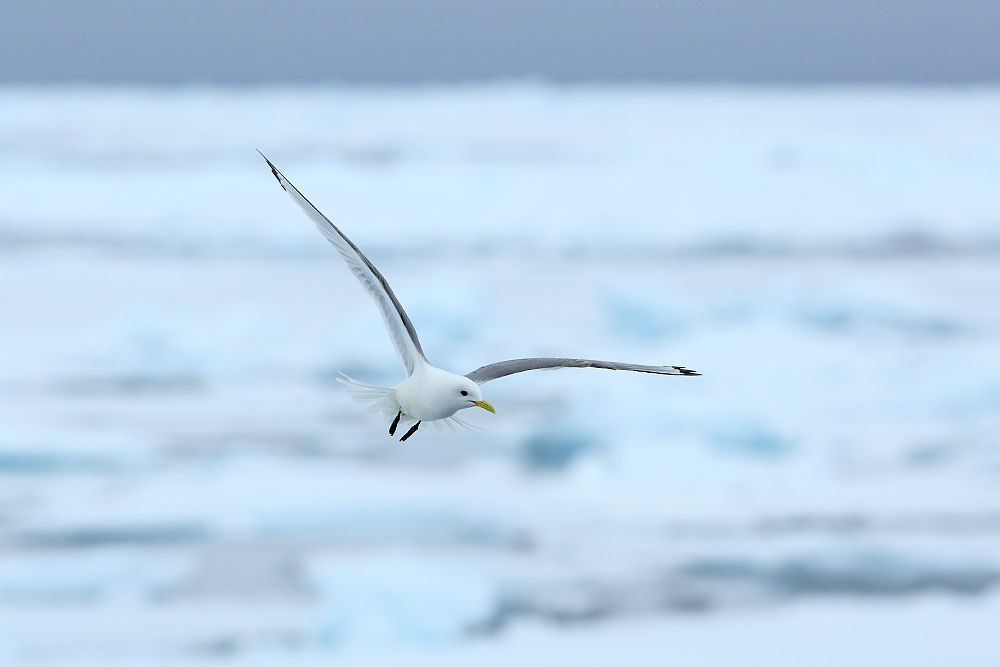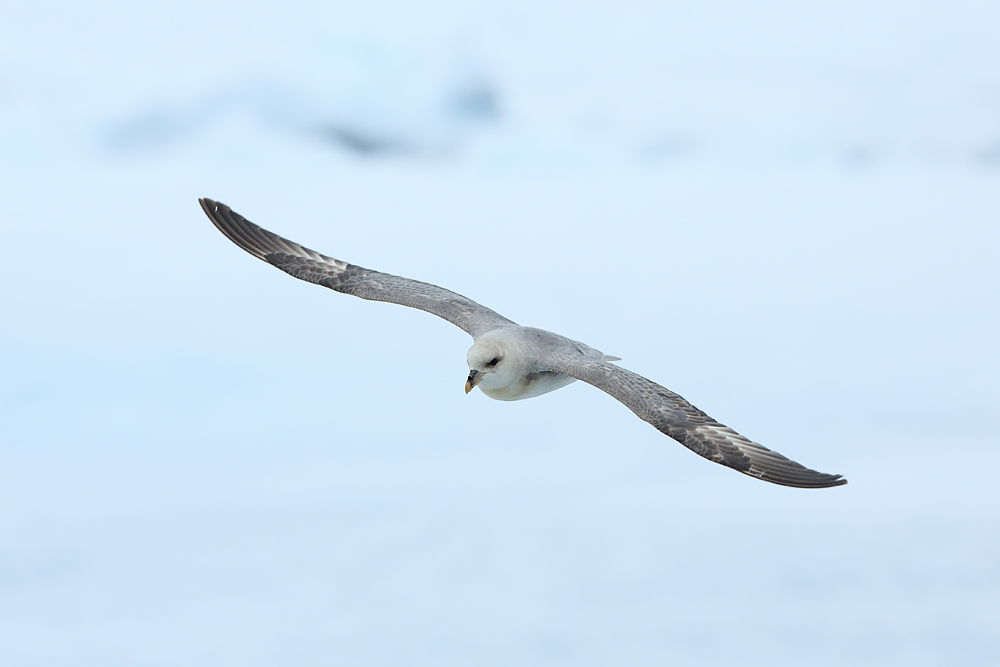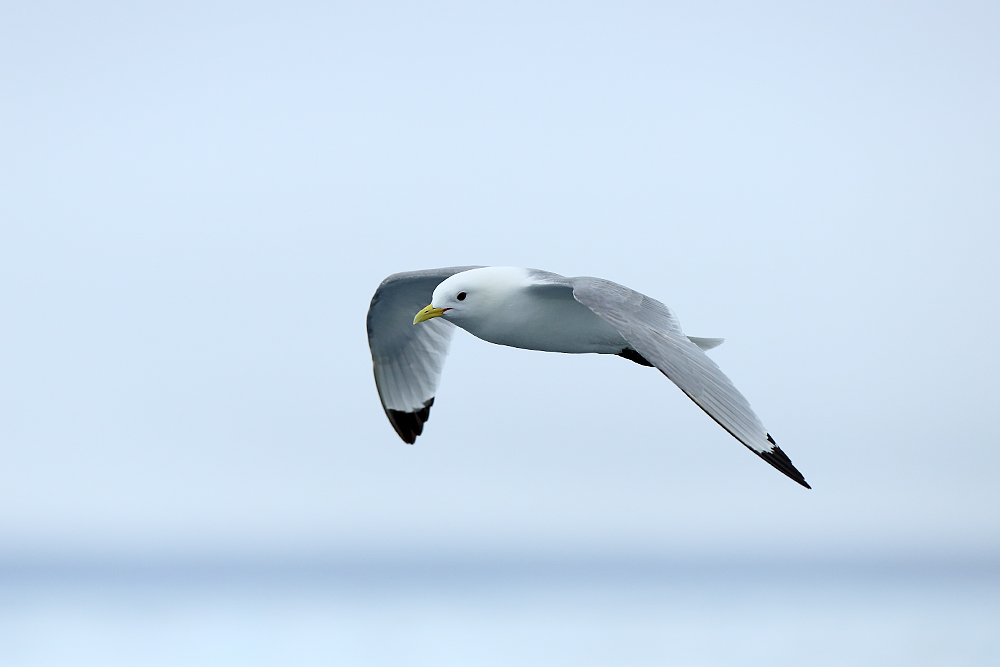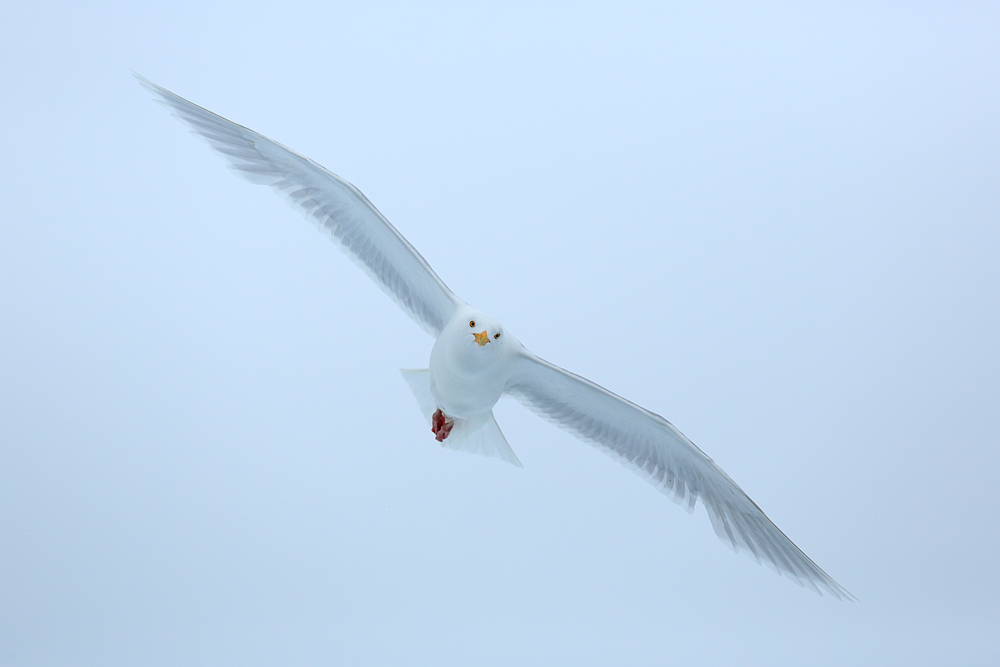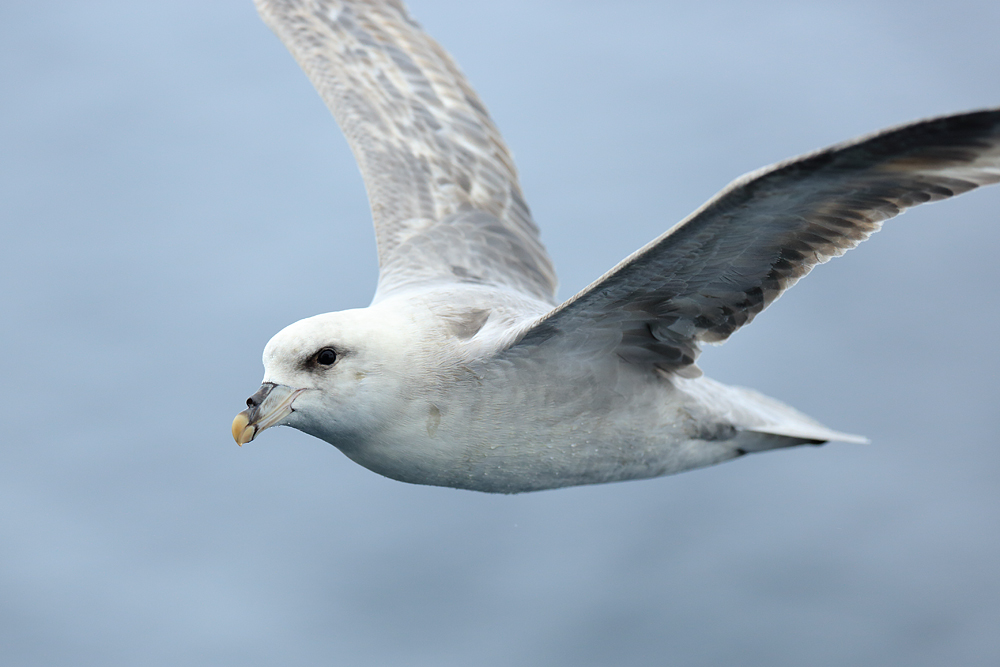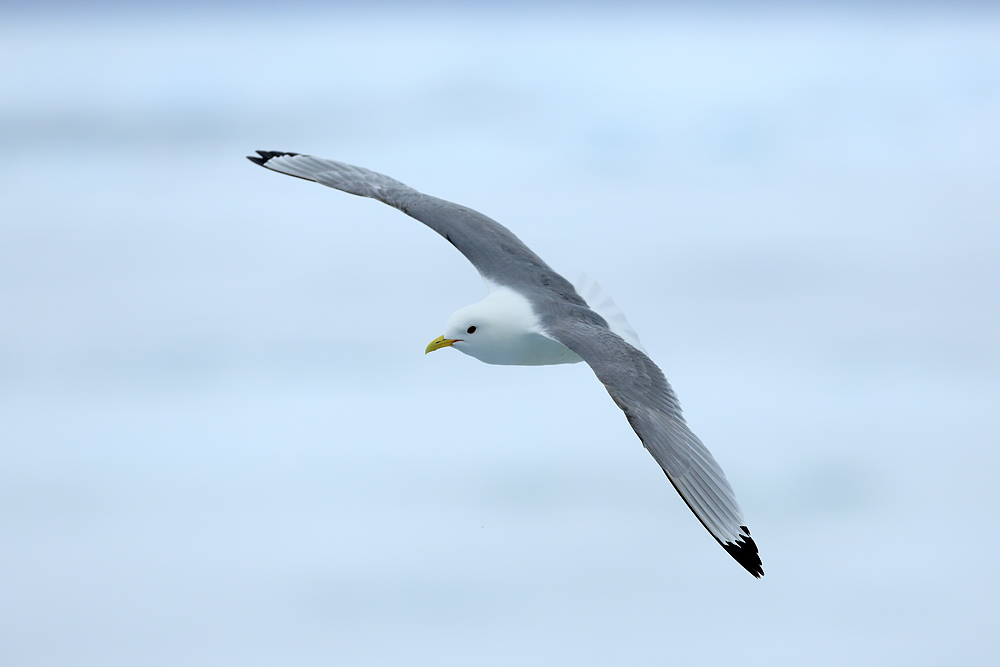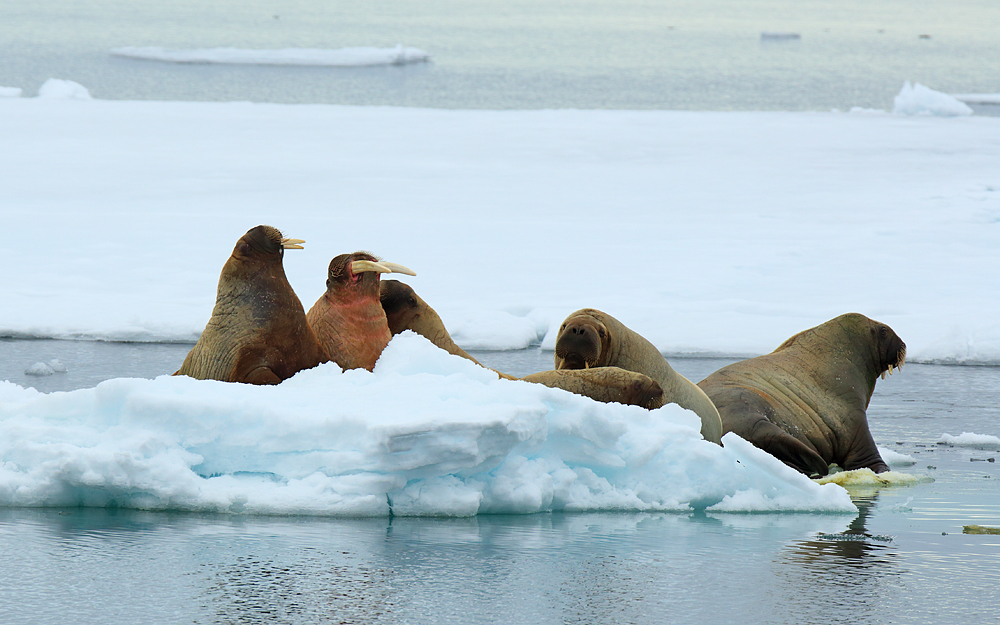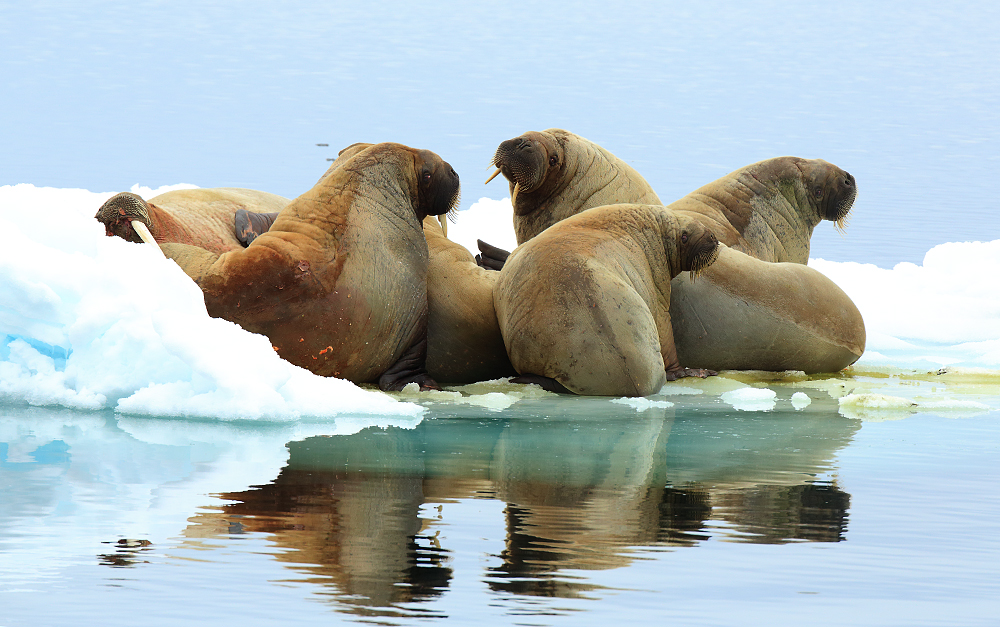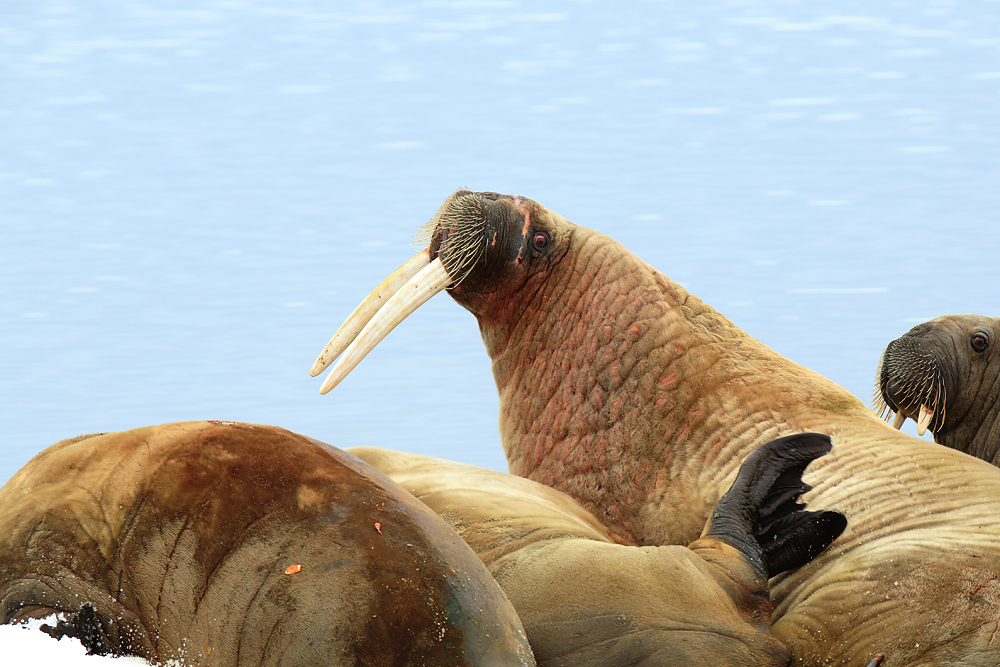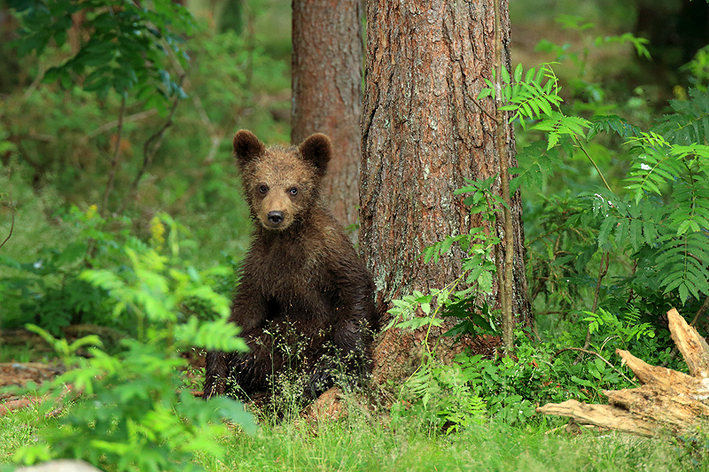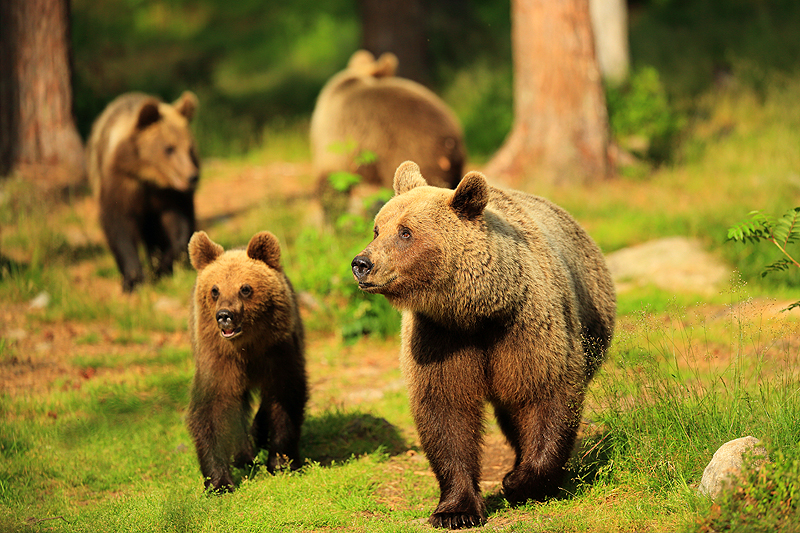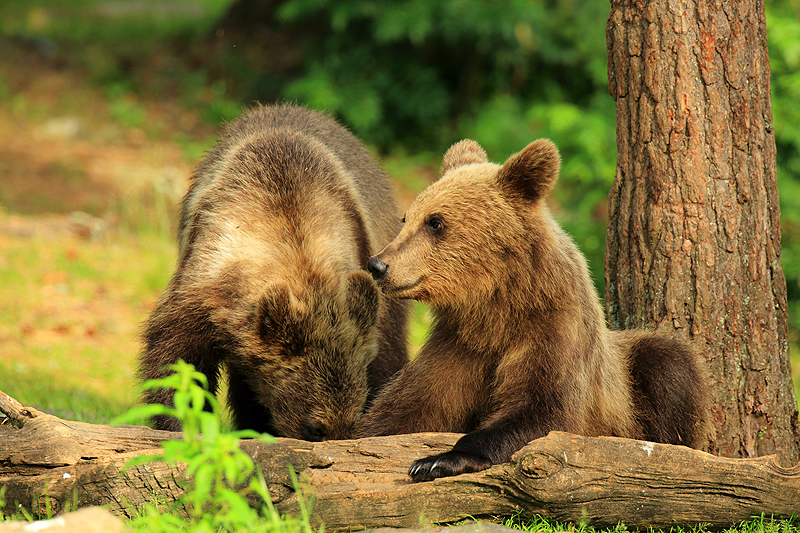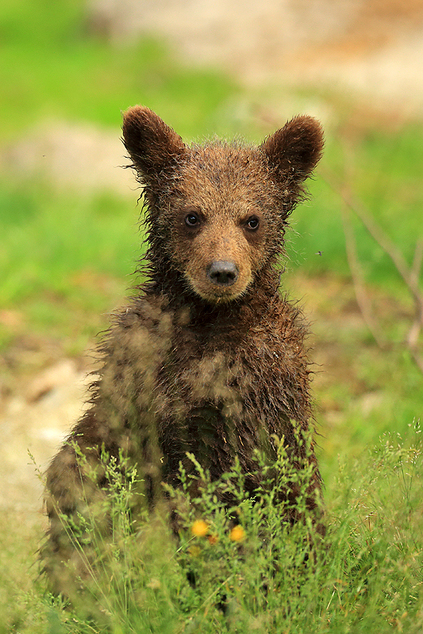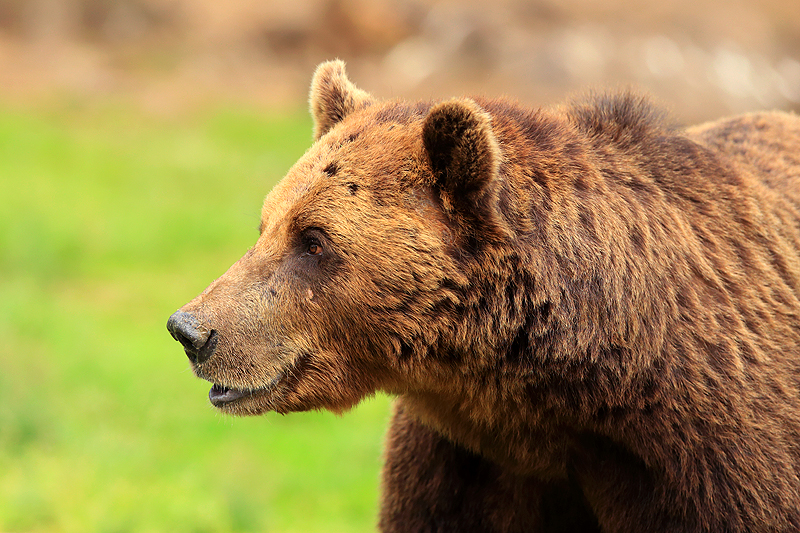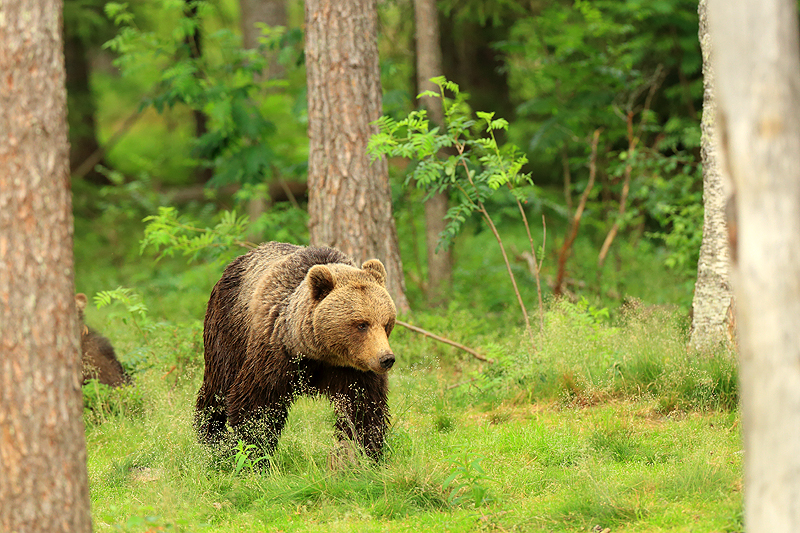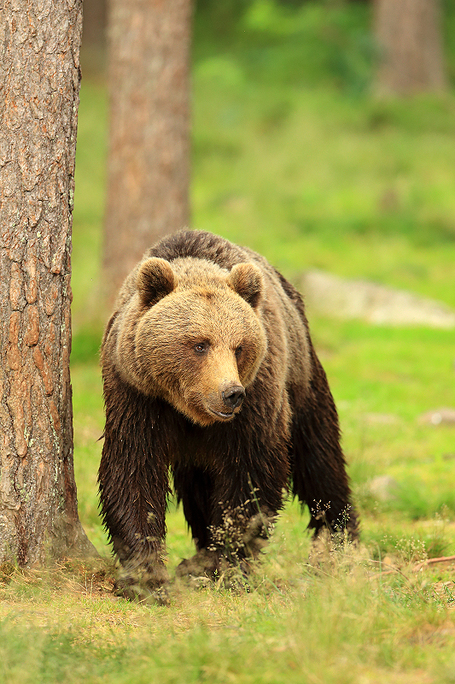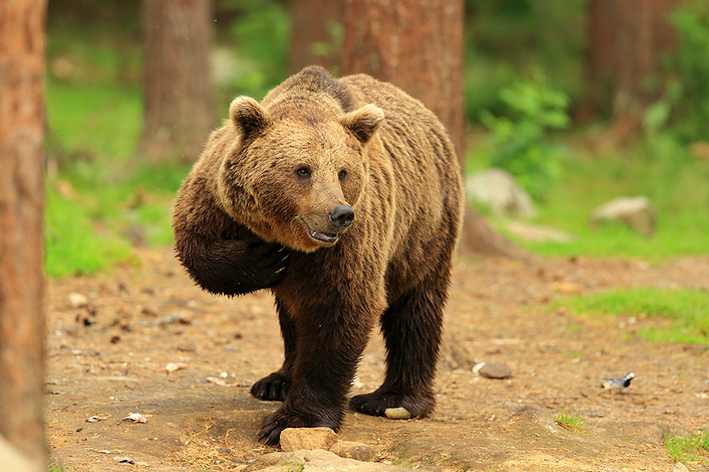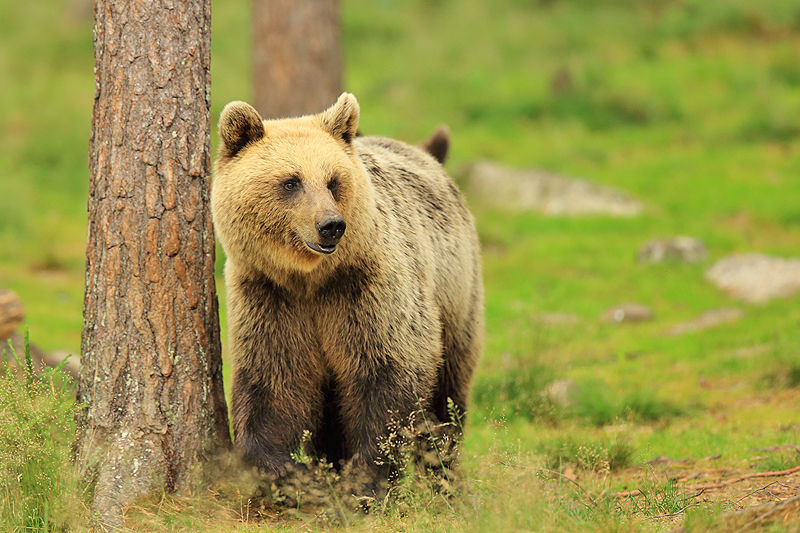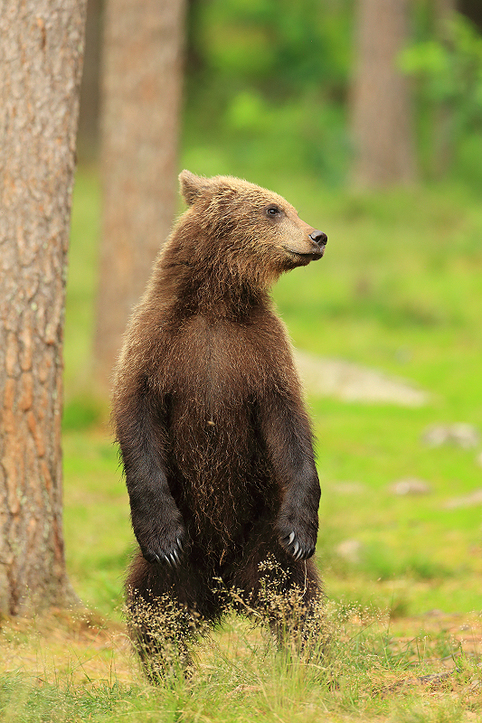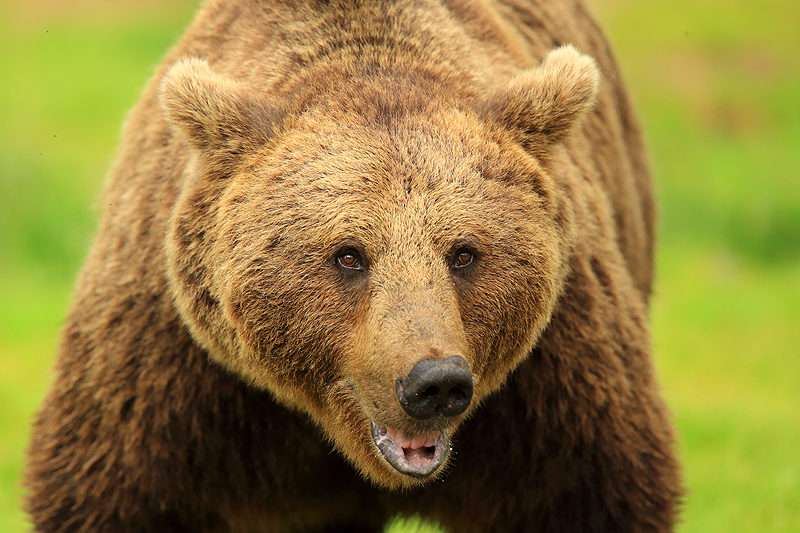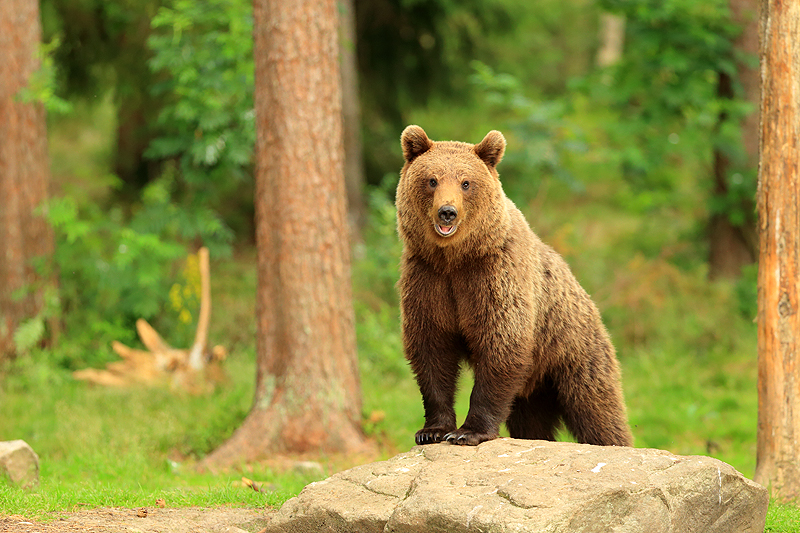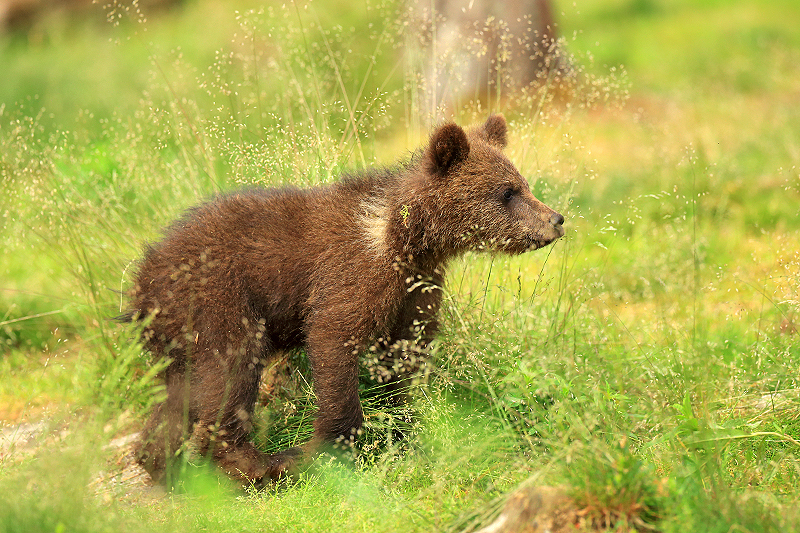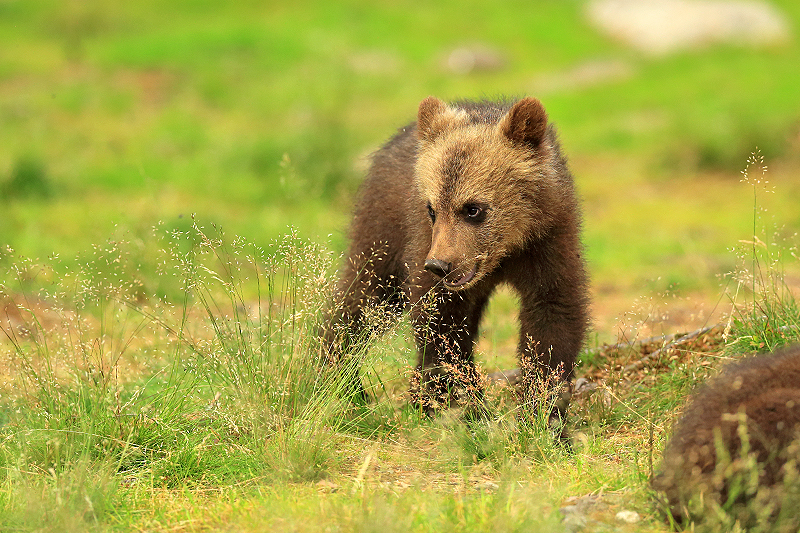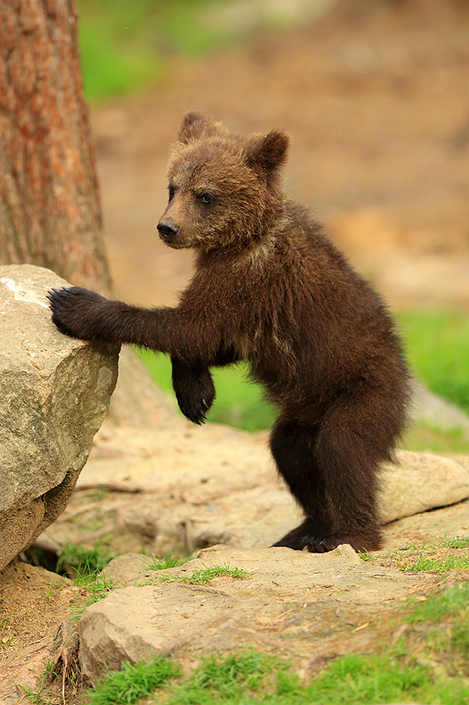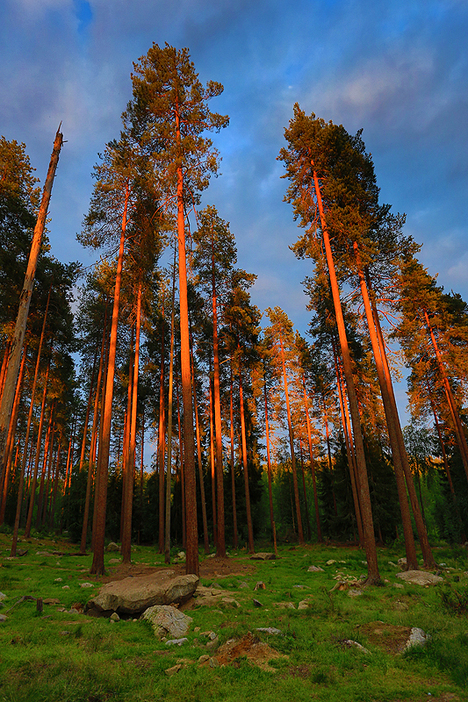|
This year I had the privilege of leading three photography tours in Finland's remote eastern forests, right on the border with Russia for Wildlife Worldwide. Across the three trips we had some incredible sightings and exceptional photography, but as always, each had its own highlights. In this blog I am going to share some of my favourite moments from across the three tours. The magic of this remote landscape, is that you never really know what will show up and when. On one particular tour we had an awful lot of close encounters with a young grey wolf, another we had multiple wolverines and on the third we had the opportunity to photograph a great grey owl nest. Here is just a taster of what we saw ... As you can see, no matter what the weather, there are always excellent opportunities to capture some stunning imagery. The grey wolf above hung around for a couple of hours one evening and the rain just added to the moment. For me, the wolves are definitely the biggest draw. It is the only reliable location I know of where it is possible to capture stunning imagery of this elusive species. However, the area is fantastic for wolverines and brown bears, meaning there is never a dull moment. It is even more exciting when the different species show up at the same time. It is important to say (as I always do), that food is put out to entice the predators in front of the purpose-built hides. Furthermore, the food put out is typically salmon scraps or meat that is not fit for human consumption. There is the chance to join me in 2023 and photograph these incredible predators for yourself. You can find out more on the Wildlife Worldwide website and book your place on this wildlife photography extravaganza.
0 Comments
Well what can I say about the past 18 months - quite simply it has been pretty tough. I have been unable to lead any overseas trips since the start of the pandemic and only led a limited number of UK-based workshops. However, back in September, I headed off to the stunning hills and forests of Slovenia - one of my favourite corners of Europe. The Dinaric Alps are a wildlife photographer's paradise, home to over 800 European brown bears and a myriad of other species. I spent 7-days in the wonderful hides which I use when leading my tours to Slovenia, building up a great little portfolio of images. In the time I was there, I photographed over 10 different bears, including a number of mothers and their cubs. I can't wait to get back out in the field and leading tours once more. over the next 12 months. As you can see from these images, the surroundings for my sightings were exceptional and I was blessed with exceptional weather. You can join me in Slovenia next year for the opportunity to photograph the Dinaric Alps' population of brown bear.
It has been a crazy few months for me – I have been leading trips left, right and centre. No moaning from me though as it has been absolute delight to take so many fantastic people all over Europe, showing them some of the most incredible wildlife and hopefully helping them get some great images too! The next instalment in this summer’s schedule was a trip to one of my favourite spots, right on the Finland’s eastern border with Russia. It is here I lead Wildlife Worldwide’s Boreal Predators Photography tour, which gives my clients a chance to photograph European brown bear, grey wolf and the feisty wolverine. All I can really say about this year’s tour was wow, wow and well… WOW! We were treated to a remarkable number of sightings of all three species and the photography opportunities were mesmerising. Even with a faulty camera I was able to capture some awesome images, my clients images really blew me away so it was a hugely successful trip. And now to the photos, all I will say is that I hope you enjoy them… It must be said that every night in the hides was productive and they allowed the entire group to capture a wonderful array of images. What I have included here are just a small taster. I have only included on wolverine as I was always in a hide that didn't have the prime views. It is very important to me that my clients are the ones who get the best images, after all it is their holiday and I want them to get the most out of the experience. On the last night of the trip the whole group were treated to some breathtaking sightings and unrivalled photography opportunities. The images above (I think at least) perfectly demonstrate why Finland is such a superb destination for a photography holiday. The light is absolutely brilliant, the wildlife is stunning and the photography is very hard to beat.
So if you fancy joining me in 2019 for another foray into the boreal forests of Finland, be sure to visit Wildlife Worldwide's website for more information. My first photography tour of 2018 was to the beautiful country of Slovenia. In the middle of May, I took 8 clients with me to the Dinaric Alps, where everyone was hoping to photograph brown bear. This was Wildlife Worldwide's Brown Bear Photography tour. Now I need to make something clear from the start, Slovenia is one of Europe's hidden gems. It is a country filled with history, stunning landscapes and fabulous wildlife. To top it all off, the food is fantastic. Slovenia's Dinaric Alps, in the southern reaches of the country, are home to between 700 and 800 bear, one of Europe's most important populations. This karst landscape, filled with caves, disappearing rivers and lakes, also supports and array of other species including Ural owl, beech marten and even wolf. This trip was focused on the bears and the Ural owl, with of course the stunning mountains, wild flower meadows and charming villages as a wonderful backdrop. Over the course of the next 6 days we were treated to some superb encounters and all of the clients managed to capture some excellent images. After a great first night in the hides we went in search of the Ural owls and were blessed with some great encounters. Slovenia is home to the highest density of breeding Ural owl in Europe, so with a bit pf persistence, you can often come away with some good photography. The karst limestone landscape is famed for its caves and Slovenia is no different. If you read my last blog post on Slovenia (from last year), you will have seen that I visited Križna jama - a beautiful cave filled with water. We journey a few kilometres underground and explore the remarkable caverns and their unique rock formations. Of course, for most people it is all about the bears and that was this unique trip is all about. So all of the group spent the majority of their afternoons in the hides, waiting for the bears to show themselves. As you can see from all of the images above, Slovenia offers something very different from other bear watching destinations and it really is quite magical.
If you would like to join me on this amazing trip in 2019 then please head over to Wildlife Worldwide and find out more. A land of countless lakes and seemingly infinite forests, Finland is one of Europe’s wilder corners. In recent years the country has become well regarded as the finest bear watching location outside of the Americas. However, I had heard of a particular location (right on the Russian border), where it was possible to see and even photograph European Brown Bear, Wolverine and even Wolf. This place sounded too good to be true! So after a lot of digging and hours of reading through reports, I had all of the information I needed. In the end I decided it would be a great place to run a wildlife photography tour with Wildlife Worldwide. We have named the tour ‘Boreal Predators Photography’ and it certainly lived up to its name this year. Towards the end of June I set off with 6 eager clients, all keen to photograph the iconic species of this border region, or ‘no man’s land’, between Finland and Russia. Now I must start by saying that Finland hasn’t really had a spring in 2017, and therefore all the wildlife’s behaviour has been particularly unpredictable. We spent a total of 4 nights in the hides, all of which were different. This year was particularly cold, which makes it much harder to get comfortable within the hides, but our perseverance paid off in the end. The first night was a little disappointing with only a couple of bears seen at a bit of a distance, one of which was particularly nervous. Don’t get me wrong, it is still incredible to see the magnificent mammals, it was only disappointing from a photographic opportunity point of view. The second and third nights made up for it though, with at least 4 different wolverine spotted across 3 locations (the group had to be split on the second evening), the very nervous bear made another appearance and the icing on the cake had to be two Grey Wolves seen on both nights. On the second evening, a client and I were treated to a pair of Wolverine – the light was at its worst when they appeared, but we got a few acceptable shots in the end. Just as we thought the evening was coming to a close, it was probably around 3 am, I noticed a light shape moving on the edge of the forest. It was obscured by a light mist, but there was no mistaking what we had in front of us. It was a Grey Wolf … in fact there were two wolves. It was a magical encounter, a real privilege and a challenge to photograph in such low light and the mist. It was the last night of the trip when everything really came together. We were only going to be in the hides until around midnight as we had to leave first thing for our flight back to Helsinki. I decided we should try our luck at the pond, where I had previously seen the two Wolverine and wolves. I can honestly say that the evening was one of the very best I have had in my career. The light wasn’t necessarily the best, but the sightings we had are some of the finest anyone could possibly ask for. In fact, the evening actually started relatively slowly. It all seemed like it might be disappointing end to the trip. As the sun was losing its strength and retreating over the tree line, one of my group spotted a large bear moving through some marshy ground. It was heading right at us, slowly powering through the swamp. You could hear the strength of every movement, it was absolutely incredible. The bear posed perfectly for us and the whole group managed to get some wonderful shots. Having had its fill on the salmon scraps left out, the bear slowly made its way back towards the forest, slowly melding into its wooded surrounds. Having had such a remarkable encounter, everybody seemed to be settling back into their seats (figuratively speaking), when I noticed a familiar light shape on the edge of the treeline. I stopped myself from saying anything, took a breath, then raised my binoculars and my jaw slowly dropped. I knew what it was, but I didn’t really believe we could be so lucky. Surely I was suffering from sleep deprivation? There some 70 yards away was a white wolf, the one I had seen at a distance on the previous two nights, and it was followed by a second wolf. The white wolf was the female, whilst the second was tan colour, and this was the male. The female slowly made her way towards the hides, seduced by the smell of the fresh meat of a carcass. The next 15 minutes were spellbinding. She came to within only 20 metres of the hide … it was her size, her obvious power and that stare that left me breathless. I have never known a stare like it. I have been all over the world, photographing Polar Bears, Leopards and Tiger, but never has an animal looked at me with the same intensity or intelligence. This really was a once in a lifetime encounter and one that will stick with me for the rest of my days. If you would like to join me in Finland, I will be leading another ‘Boreal Predators Photography’ tour with Wildlife Worldwide in June 2018. I can’t promise the tour will be the same as this year’s, but I can guarantee it will be a great adventure.
For the entirety of this trip I was using a Canon 500mm F4 IS II USM lens which was kindly provided by Fixation. I will be writing a separate post with a review and my thoughts on using the lens if the field. The small country of Slovenia is home to some of Europe’s most stunning vistas, from the towering peaks of the Alps, the picture postcard city centre of Ljubljana, to the forest covered hills and mountains of the Dinaric Karst. It is when you dig a little deeper, exploring the country’s sprawling forests that the true magic of Slovenia is properly revealed. These wonderful forests, a mixture of pine and beech, hide some of Europe’s finest wildlife – a population of brown bears. With the help of Slovenian Bears, it is possible to spend your evenings enjoying fantastic bear encounters from the comfort of purpose-built hides. I spent the vast majority of my time in the Notranjska region, home to the country’s core population of bears, but the area is also filled with incredible caves and other features typical of a limestone karst landscape. I managed to explore the incredible cave network of Križna Jama, travelling up to 4km along the water filled passages, and the delights of Lake Cerknica, the largest intermittent lake in the world. The beautiful meadows are filled with wild flowers, including an array of delicate orchids, the copses are alive with the sound of birdsong while in the forests the call of the Cuckoo resonates through the trees. For the lucky few, an encounter with the striking Ural Owl is certainly one of the region’s avian highlights, with up to one pair every square kilometre this surely one of the best places to see them in Europe. In reality though, I went to Slovenia for the bears. With between 400-700 bears in this small country, there is a very good chance that you can have superb encounters over the space of a few days. I have to admit I was unsure of what Slovenia would be like for bear watching and particularly in regards to the photographic opportunities, but I needn’t have worried … my 5 nights flew by with countless bear sightings. Sitting in the comfort of the hides, waiting and willing for a bear to appear through the sea of trees is a thrill in itself. Every noise has you on the edge of your seat, a crack of a twig – it must be a bear? No, it is just a family of Jays bounding across the forest floor. The alarm call of a Blackbird rings loudly in your ears, but still no bear appears. But then, in complete silence the first bear comes into view, a young bear tentative in its approach, aware of those watching and waiting in the hide. After a few minutes though the youngster relaxes and goes about its business, only pausing to check that there is no immediate danger. After a few minutes the bear’s ears go up, the nose starts to twitch and the eyes focus on something I cannot see. Then over a rocky outcrop, two more bears appear, both with a golden hue to their coats and walking purposefully towards the hides. Now three bears are within only 20 metres of the hide, the two new arrivals keeping their distance from the first individual and all of them ignoring the deep thud of camera shutters firing as they go about their business. This was just my first evening in one of the many hides on offer, and what a great introduction it was. I hope to be heading back to Slovenia later this year to try my luck again, so you can expect another flurry of images over by the autumn. Here is an array of other images captured during the following nights. If you are thinking of a long weekend away filled with wildlife (particularly bears), I can highly recommend this beautiful and welcoming country.
I am already planning a return visit to the area and hope to operate a photography tour in 2018 with Wildlife Worldwide. This morning we awoke to big blue skies and headed into the spectacularly beautiful Hornsund. This massive fjord is surrounded by dramatic mountain peaks and destructive glaciers. Being so far South, I have to admit I really wasn't expecting to see as much of the truly specialist Arctic wildlife. Upon arrival in this stunning setting a female Polar Bear was spotted on the shoreline and then moments later another larger bear was spotted on the far shore (perhaps a male). We would be going on a Zodiac cruise to see if we could get any closer to the bears and then on to explore the fjord ... little did we know what was in store for us all. We all met on the deck and waited to board our Zodiacs for our afternoon cruise, I was with the Naturetrek leader Peter Dunn and expedition leader Jan Belgers. We set off as one of the lead boats and headed toward the small headland where we had earlier sighted the female bear. As we approached the shore line we realised that the bear had moved on and as much as we were scanning both the water and the shore we were unable to see anything. Peter then spotted some movement on the water's surface way out in the fjord ... it was the bear, it had managed to slip by us in the ice-cold water. The bear approached an island and we all held our breaths as we prayed the bear would be a 'quality' bear. It was definitely a 'quality' bear ... The real benefit of the island was that the bear felt completely at ease and we could travel all the way round for a constantly changing backdrop. As a photographer you always want to try and capture that image that stands out and lingers in the mind, this really was the perfect photographic opportunity. Even then this was one of those moments where you just have to put the camera down and really take in the moment! We slowly moved around the island the backdrop was more than you could ever have dreamt of. We slowly moved closer and closer, all the time keeping an eye on the bear to make sure it was completely at ease. We all go the odd glance and a quick sniff but it certainly wasn't affecting its scavenging behaviour. The bear was obviously search for whatever food it could find, it is known that a variety of birds breed on this island in the summer months. After a wonderful hour with this remarkable Polar Bear we thought it would be best to leave it in peace and leave it to carry on with its search for food. With a few months remaining until the sea ice returns this bear will really have to try and conserve its energy and find whatever scraps that are available. We move further up the fjord to see whether we could approach the second bear, he was a huge male but he was not at ll interested in us and remained in his slumber. We carried on towards the head of a glacier to explore the amazing landscapes and the ice-filled water. I really hope you have enjoyed looking through all of these images and with only one more post left, I think that this is perhaps the highlight of the cruise. This day was quite possibly the most memorable of my life outside of my time in Africa, with jaw-dropping landscapes, danger and unbeatable wildlife encounters I am not sure what can beat it.
Coming up are some charismatic reindeer and a few more landscapes so please keep on reading. Our planned landing site for this morning was Kapp Waldburg, a site for nesting Kittiwakes in a steep sided canyon. As we arrived at our landing point we heard over the loud speaker that there was a Polar Bear and we would have to head elsewhere to stretch our legs. From there we headed on towards the tundra habitat at Sundneset, once again as we approached the landing site the Polar Bear call went out again. This bear was very relaxed and the expedition team decided it would be safe to land slightly further down the coast and have the ship keep an eye on the bear's where abouts. As we landed we were greeted by a truly wonderful site, a stunning pair of Grey (or Red) Phalaropes were feeding only yards away from us. The male was particularly obliging, carrying on with its feeding as if we didn't even exist, the female on the other hand seemed to be rather skittish and wasn't a particularly good poser. Unusually for the bird world the female Grey Phalarope is actually the more beautiful. The males take care of the eggs and ensure they hatch before raising the chicks, the female visits a multitude of males and lays her eggs with a few of them ensuring that they have the best chance of survival. As we left the two phalarope to their own devices we headed inland across the tundra and had an unexpected but truly wonderful encounter. A very shaggy Arctic Fox was heading towards us and we were blessed with extraordinarily close views. The fox had not yet lost all of its winter coat and spent a bit of time rolling around doing its best to free itself from its Arctic jumper. There were also a few Svalbard Reindeer within the vicinity but they were all a little nervous around us. After spending a couple of hours on shore and aware that there was still a Polar Bear within the vicinity it was time to head back down to the Zodiacs and transfer back to the Ortelius. As we reached the landing site we realised that the male Grey Phalarope was still feeding and happy to pose for the photographers in the group. After another incredible lunch we set sail for Dolerittneset, the ship anchored and we were once again out on the Zodiacs heading for shore. I joined the hiking group and we climbed up into the misty hills that towered above the water. We really didn't see much except for a few reindeer and a couple of ptarmigan and even Stein (our Norwegian guide) seemed to find the climb hard work. I am sure on another day the views could have been superb but on this day the visibility was less then 20 metres.
We eventually headed back down towards the ship and had a look at the multitude of Walrus bones that littered the shoreline. This was once a great Walrus haulout but unfortunately they were nearly hunted to extinction in this area. There were a couple of individuals on the shore but no longer were there the numbers that once thrived here. Once we were back aboard the ship, we headed for the southern most tip of Spitsbergen and up towards the stunning fjord of Hornsund. This took us all night and most of the next morning but what was in store in Hornsund was something none of us ever expected, it was a day that will stay with me until the day I die ... keep reading to find out what Hornsund had in store. Having had two Polar Bear sightings in as many days the morale was high among the group but sadly our planned excursion to find the Walrus haulout was a no go. It seemed that nobody was at home and so we moved on to the fhord at Faksevagen. Here we went off on our first proper walk to explore the Arctic Tundra. We set off with our Norwegian guide Stein and headed up the hillside into the slight mist. Stein was completely relaxed and didn't seem at all worried by the possibility of any bears. We spotted a few Reindeer here and there but they all seemed to keep their distance from us, suddenly we had company ... a Purple Sandpiper. The bird blended in superbly well with the tundra and you can see why they breed in this terrain. Then at long last the Reindeer came close enough for me to get a few shots, including the lovely male below which had a great set of antlers. As we walked along the edge of a shallow ridge line we suddenly saw a white animal appear within only a few yards of us. Your reaction says Polar Bear but luckily it was only another Reindeer, and luckily for me he posed nicely for a few photographs too. At the top of the ridge we had a sighting of the ship surrounded by an ice floe that had been at least half a kilometre away when we landed. It just goes to show how quickly the environment can change in this amazing landscape. We headed back to the ship for yet another filling lunch before we headed to the amazing breeding colony of Brunnich's Guillemots at Alkefjellet. We were told to dress warmly as we were going to be on the Zodiacs for at least a couple of hours and possibly more depending on the quality of the sightings. We went out onto the water in our Zodiacs and I had our Austrian guide Barbara (an expert on Glaciers). We made our way slowly towards the cliffs and at first there were just a few hundred birds on the tiny rocky outcrops, where each bird was incubating a solitary egg. However, as we made our way further along the cliffs, away from the ship the sky seemed to be filled with birds. The cliffs were towering above us, stained a mix of white and pink from the guillemots' droppings, and the birds were there in their thousands. The noise was quite amazing and it was an incredible spectacle which I feel truly honoured to have seen. We were desperate to see our first Arctic Fox at Alkefjellet and when we came to a grass covered scree slopes it was the best chance we would have. We scanned and we scanned but we just couldn't see any movement ... then Barbara spotted one, our first Arctic Fox. She was so excited and we were too, it was a long way off but it was an amazing sighting. We eventually decided to leave the fox alone and head back to the ship for the evening and yet another meal. Tonight we were heading to a fjord that has only be visited by a handful of vessels, even our expedition leader had never been there before. We were now really on a true Arctic expedition and heading into the unknown.
Having spent the night in the ice, all was clear on the Polar Bear front but we weren't to be put off. Today we were going to head through the ice and see if we could find some more bears. After breakfast we were to have a lecture about how to sex Polar Bears, as the lecture was coming to an end a call went out over the loud speaker ... a Polar Bear was on the horizon. We made our way towards the bear and this bear seemed more relaxed in our presence but as we approached a group of Harp Seal swam around the ship's bow. It was amazing to get closer to this bear and see it behave as if we weren't even there ... After 45 minutes or so we decided to leave the bear in peace as we didn't want to break the ice and destroy its potential hunting habitat. We set off through one of the many clear channels in the ice and headed east along the coast of northern Spitsbergen. As we made our way through the ice we disturbed the water and were therefor accompanied by Fulmars, Kittiwakes and Glaucous Gulls. I went to the stern of the ship and photographed these birds as they performed their aerobatics. As we kept on heading through the ice to the remote island of Moffen we noticed a large lump on the ice, it was a Walrus ... our first of the trip! As we got closer, much to our dismay, the Walrus slipped off into the icy water and out of sight. We were all a little disappointed but then to our delight we noticed a multiple of lumps, yet more Walruses. It was a bachelor group of Walrus, sitting on a small ice floe and creating quite a mess in the process. The ice was less than pristine but the Walruses certainly seemed content as the captain swung the ship to try and make sure everyone on board got a great view. So with Walrus finally ticked off and some close relatively close encounters from the lowest point on the ship we headed off towards one of the fjords where we hoped to land the following morning. The target ... yet more Walruses but this time at a well known haul-out point.
As many of you who follow my work probably know, I work for a wildlife travel company called Naturetrek, and last week I got the opportunity to lead their photographic trip to Finland to photograph European Brown Bear. It was my first time in Finland, and it was also my first time to photograph bears (having only seen Black Bear briefly in Canada). So after exploring the forest around the fantastic Martinselkosen lodge (where I was lucky enough to see a Beaver), we ate our late lunch in readiness for our first long night in the hide. The advice to bring a warm fleece really was not applicable for this trip, the temperatures where in their high twenties and after the 2km walk to the hide everybody had certainly worked up a sweat. It is worth noting that one must have a really good quality insect repellant as well as covering up on the walk to the hide! We arrived and there, less than 20 yards away (whilst we were still on foot), was a full grown bear, nothing between us and it ... a wild Brown Bear!!!!! I honestly could not believe it, we shuffled into the hide as quietly as we could and all rushed to get our camera gear ready. Within moments there were a multitude of bears coming to find the food that Martinselkosen leave out for them. This location is right on the edge of the Russian border and they are fed dog biscuits and salmon, only enough to supplement their diet so that they do not become dependent upon it. Except for the pesky gulls that turned up, and seemed to eat nearly all of the salmon, there was a quick appearance from a Black Kite - swooping down and grabbing a piece of fish before flying up into the tree tops. Anyway enough text for now I know, you want to see the bears ... so here they are for you: The bears come and go in waves and more often than not, in family groups as mothers bring their cubs to fatten up! At times there were up to 10 bears (including cubs) all feeding around the area. (By the end of the night we reckon we had seen around 30 individual bears.) As some came in, some would leave and this meant the first few hours in the hide went very quickly indeed ... almost non stop action from the very first moment at 5pm until nearly 11pm. The youngest cubs were definitely the crowd pleasers but the behaviour of the adults and the pecking order was very obvious to see. It was all rather fascinating as well as extraordinarily exciting! The other thing that was very noticeable at the time and particularly in the photographs, is the huge variation in the bear's colourations. Some individuals were definitely darker than others, and some such as the female above were almost entirely "blonde". The cubs also showed a diverse range of markings and colourations which, of course, would be inherited from their parents. As I said earlier, the cubs were definitely the stars of the show and everybody loved watching their antics as the evening went one. One thing people particularly wanted to see was the cubs climbing up high in the trees but on this occasion we were not treated to this amazing sight. You'll have to read my next post to see what happened the night after! Finally, one last image for you showing what the forest looks like in the midnight sunshine. As the area is not too far from the Arctic Circle there is 24 hours of light on offer and even at midnight on a clear evening you can get some incredibly good light! A photographers dream to a certain extent but the lack of sleep can certainly get to you if you decide to spend all night watching the bears!
|
AuthorBret Charman Archives
July 2024
Categories
All
|

